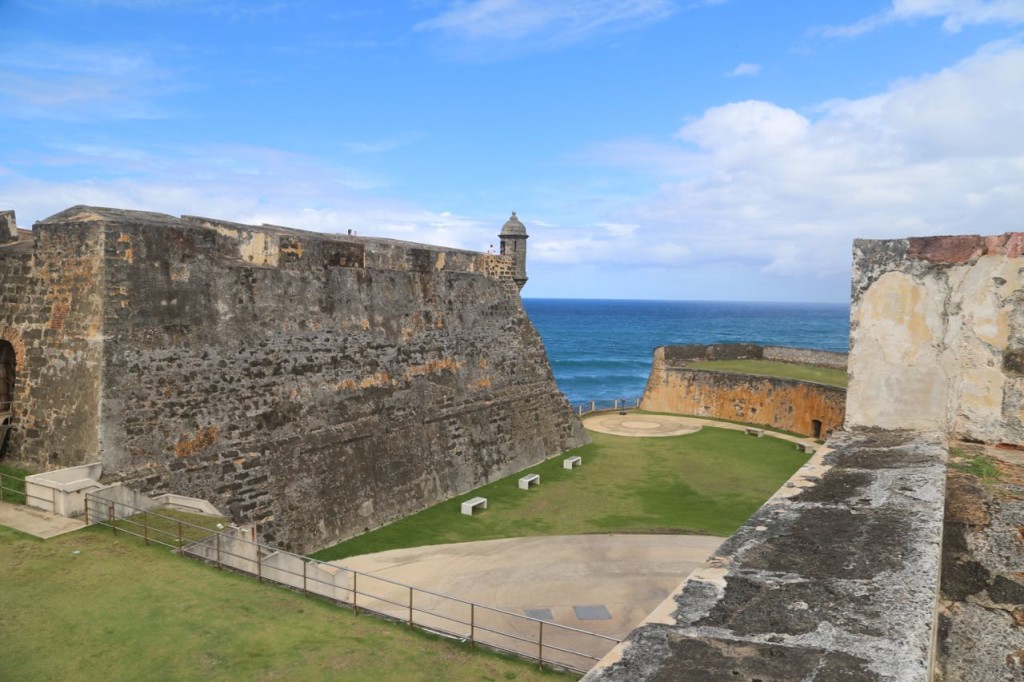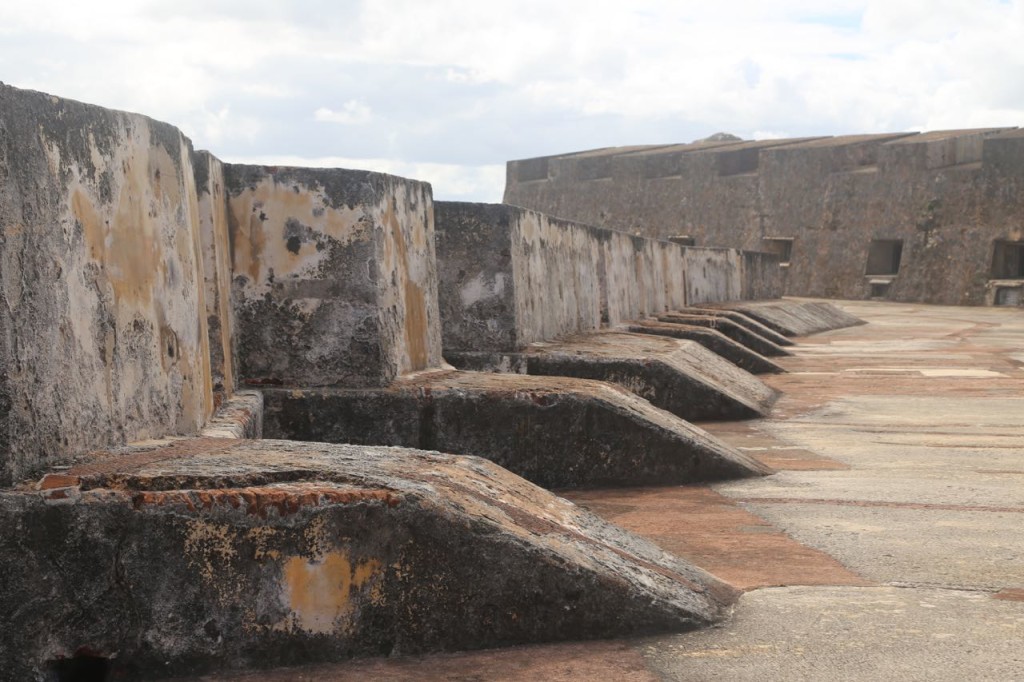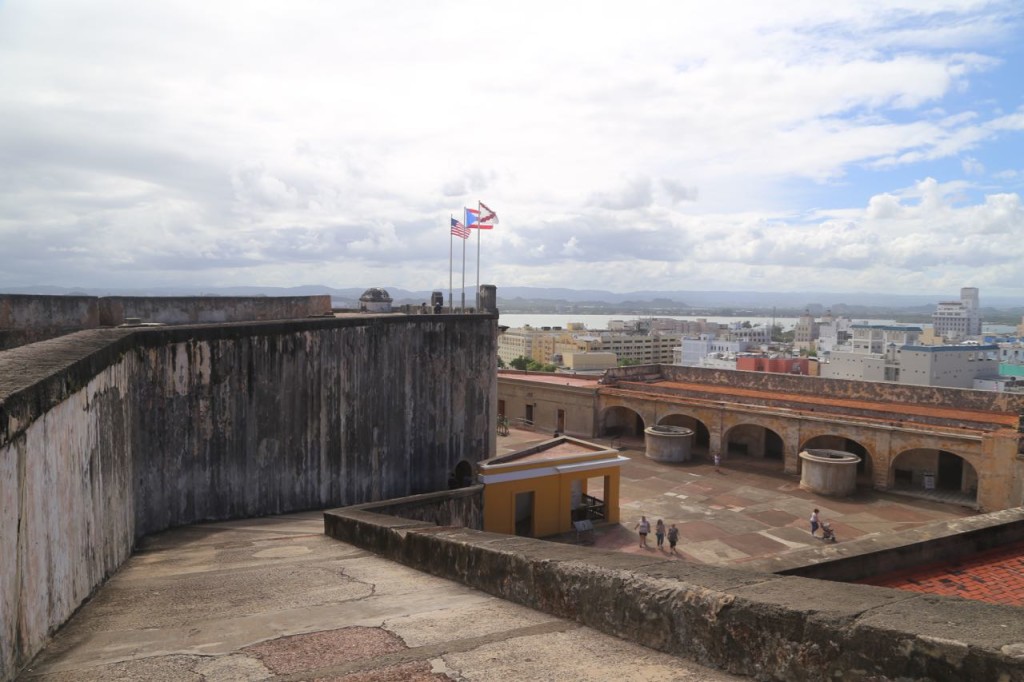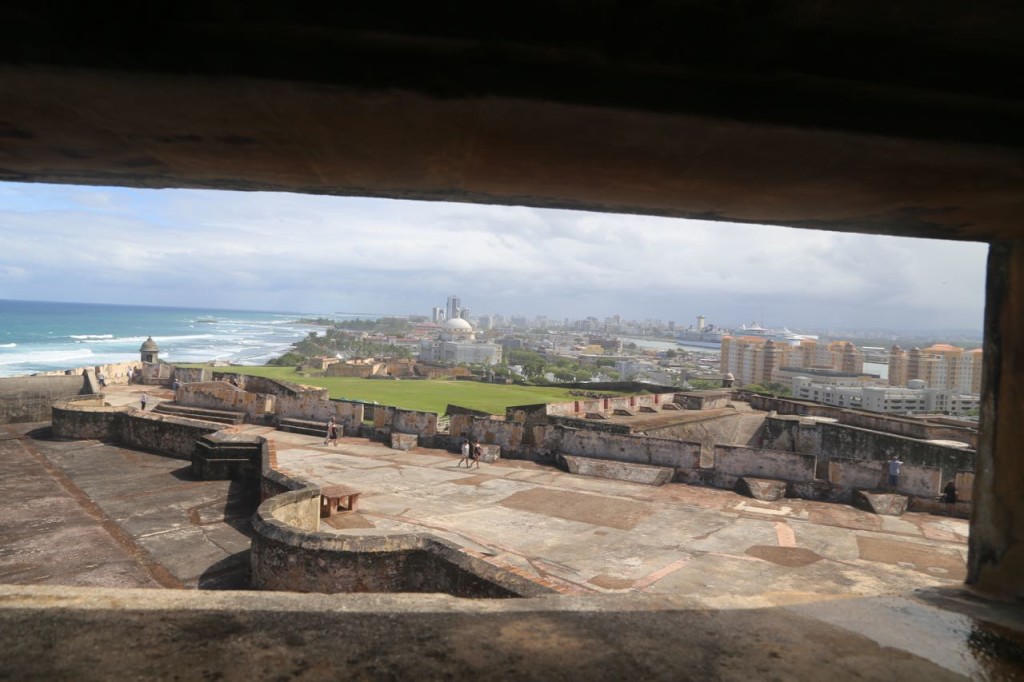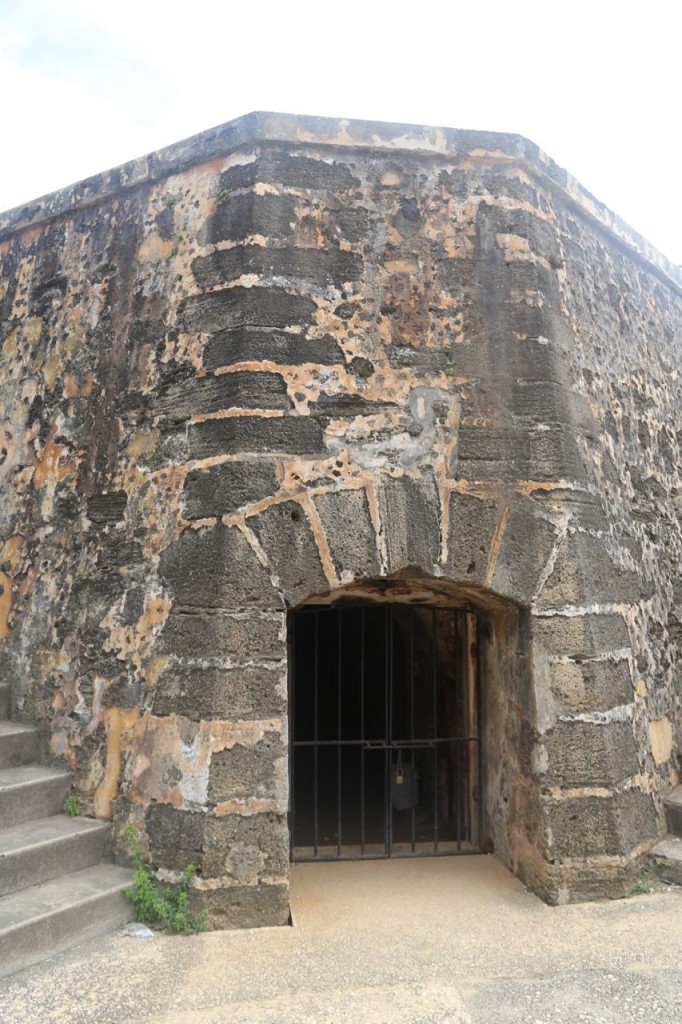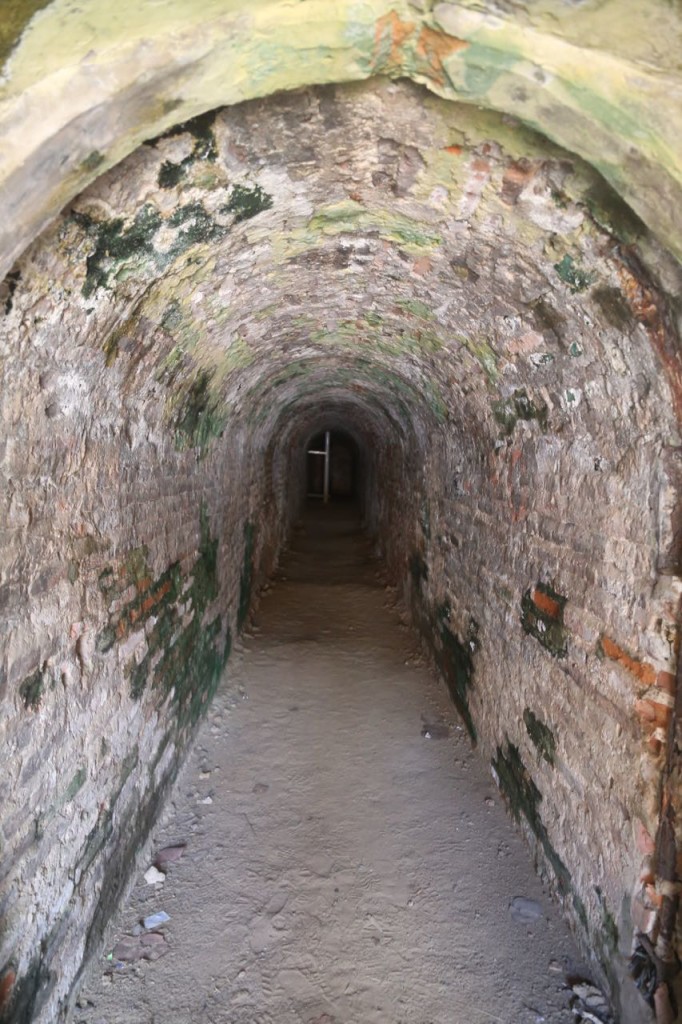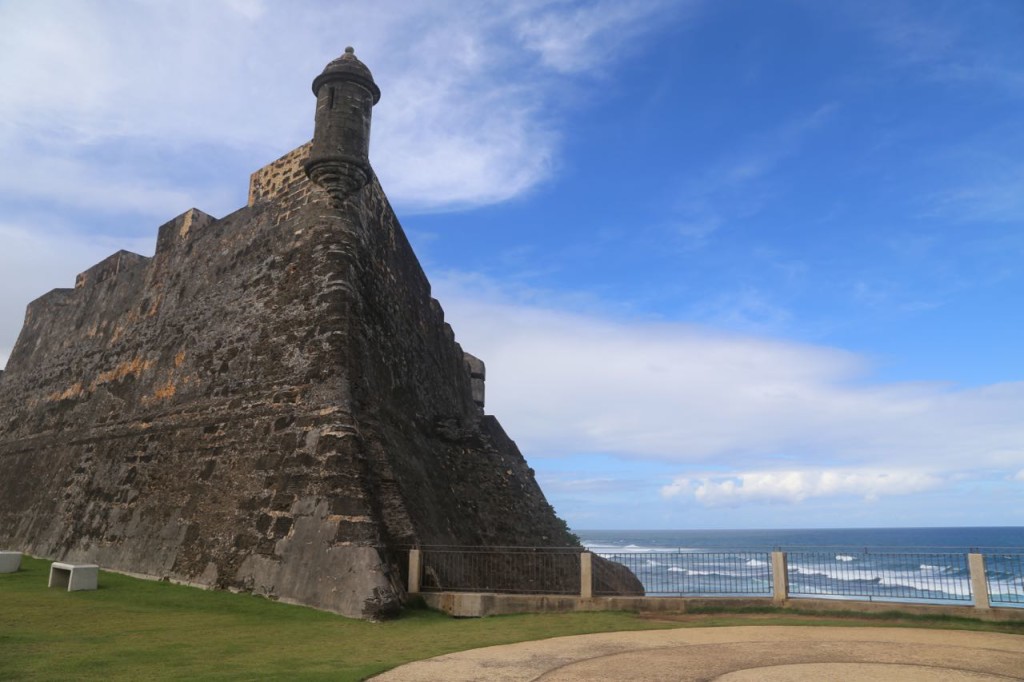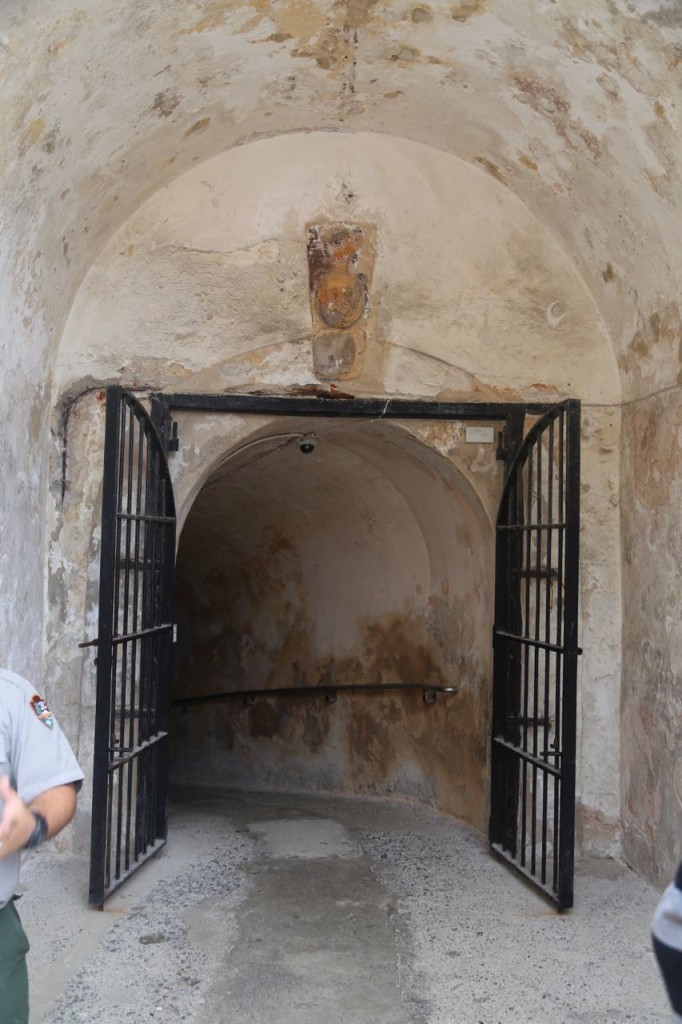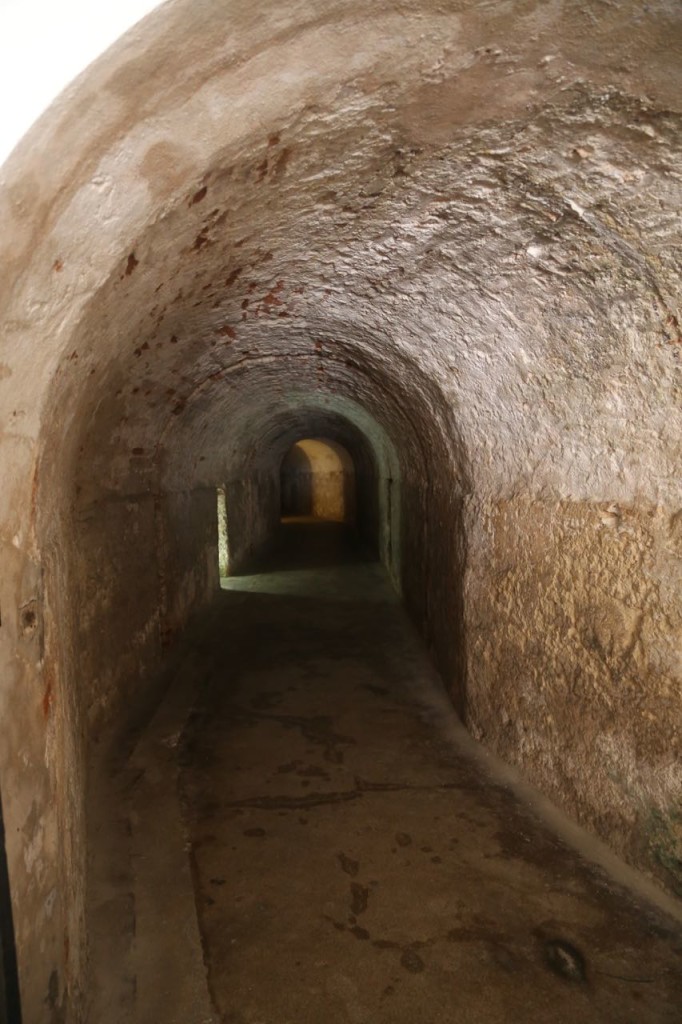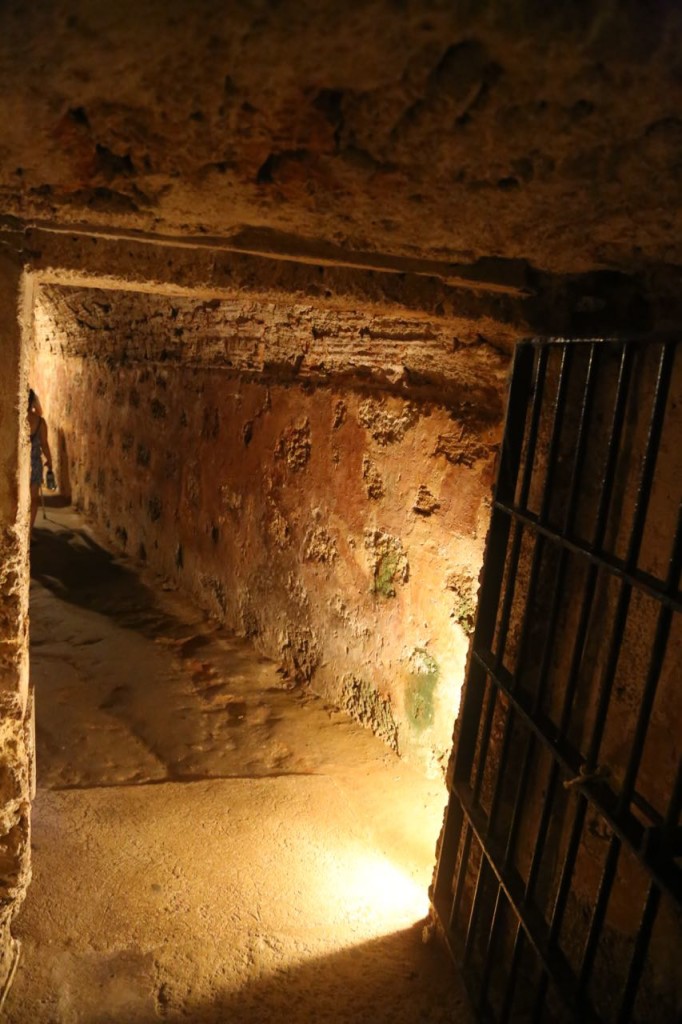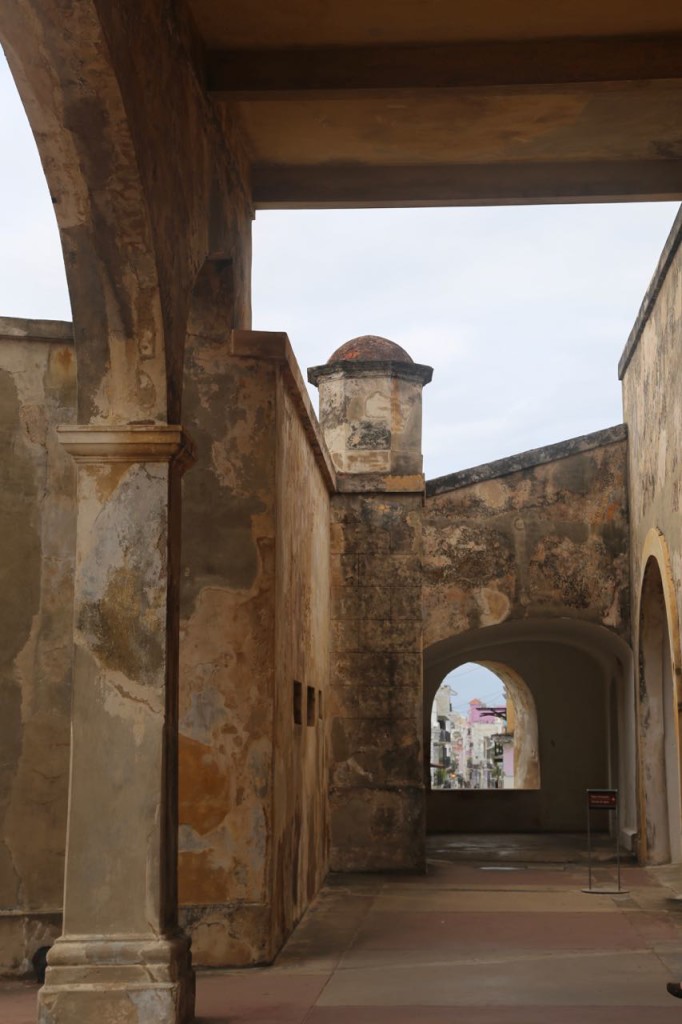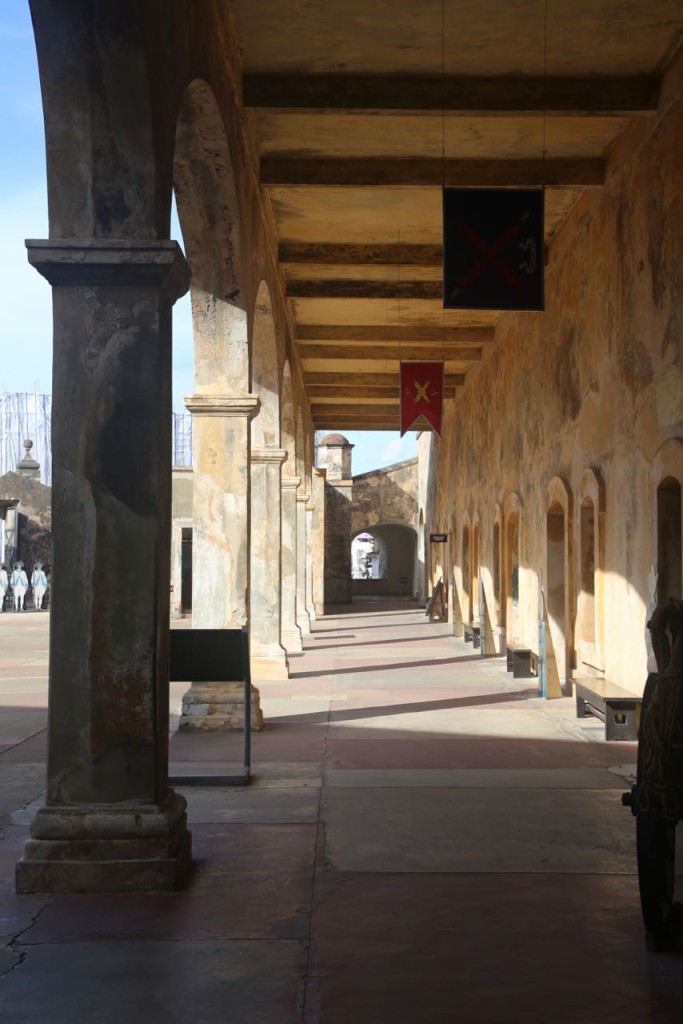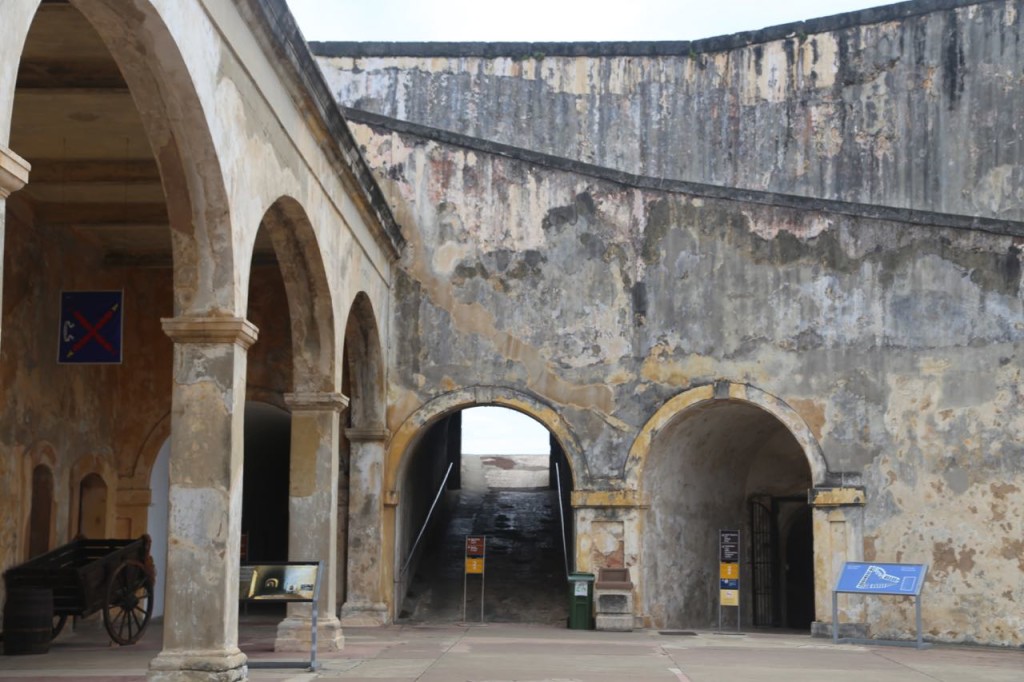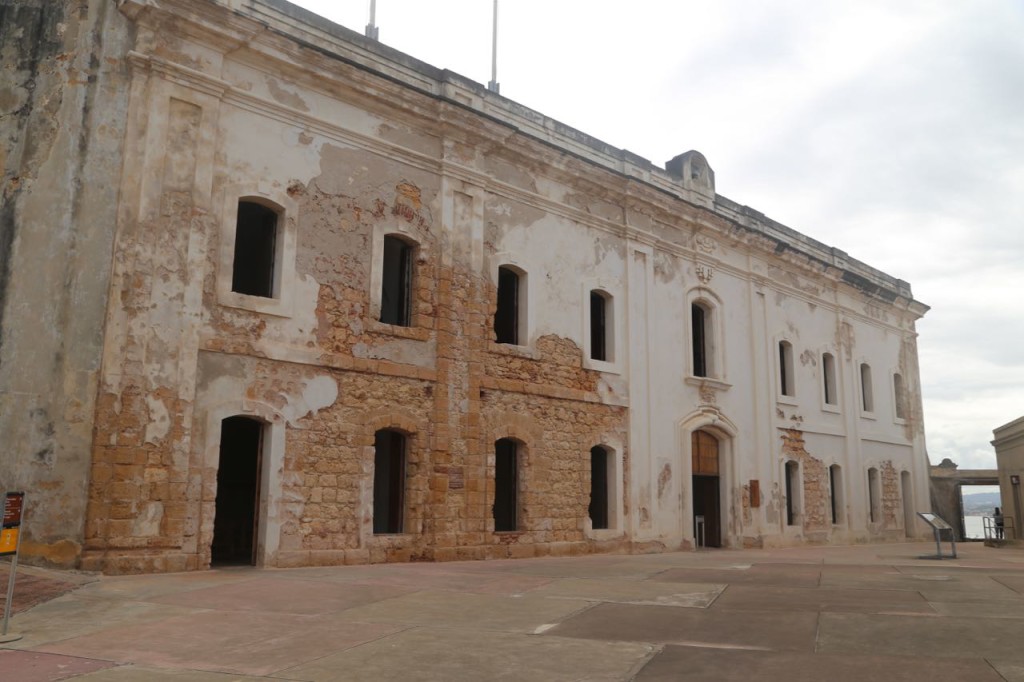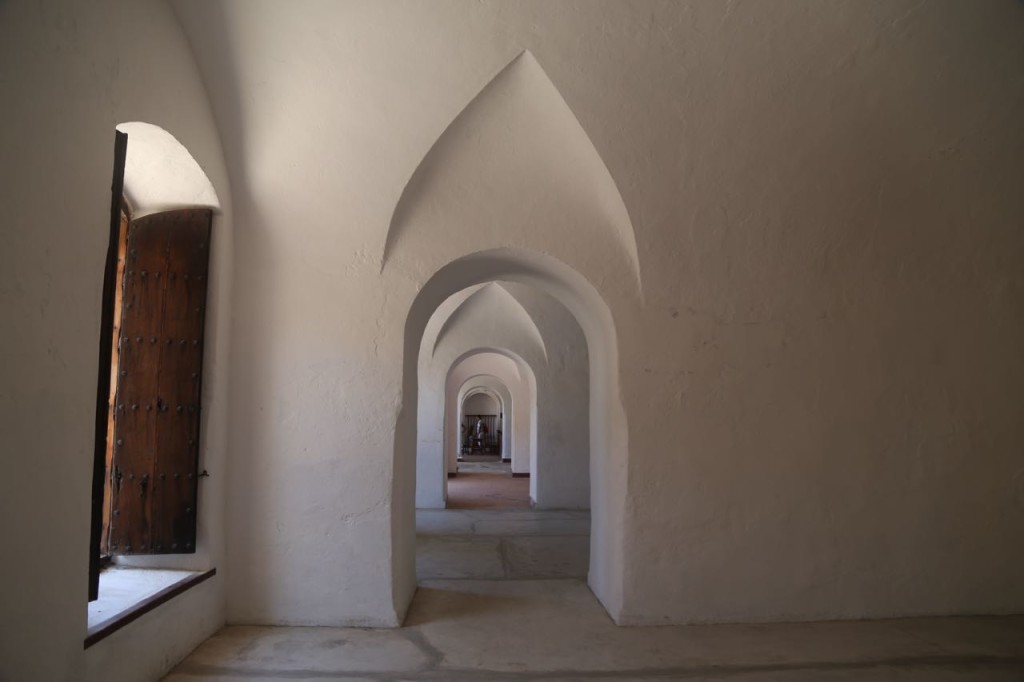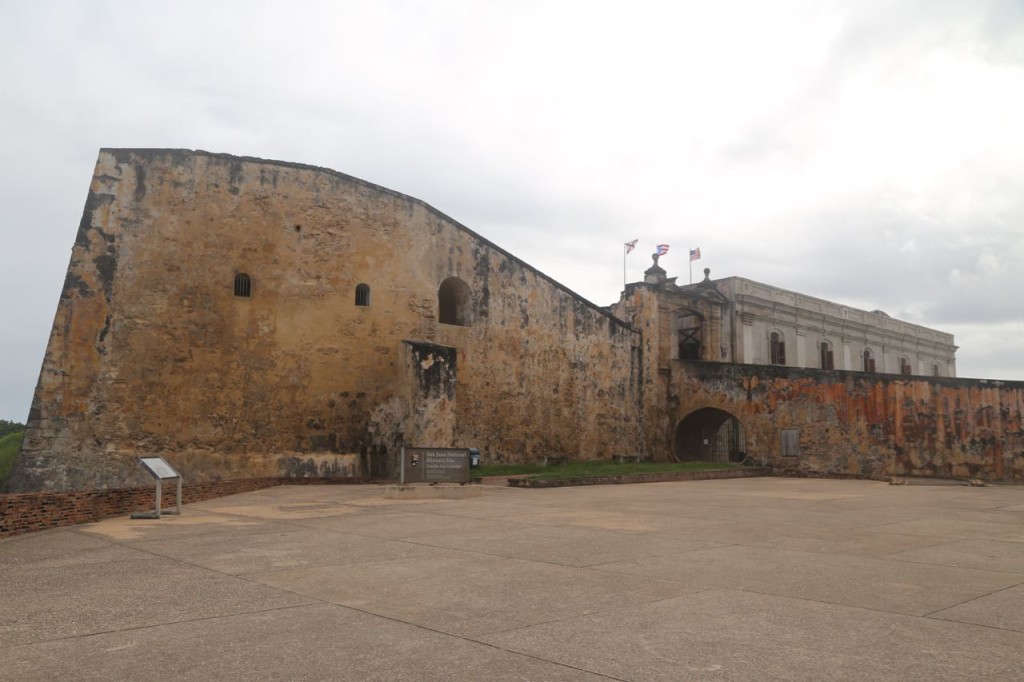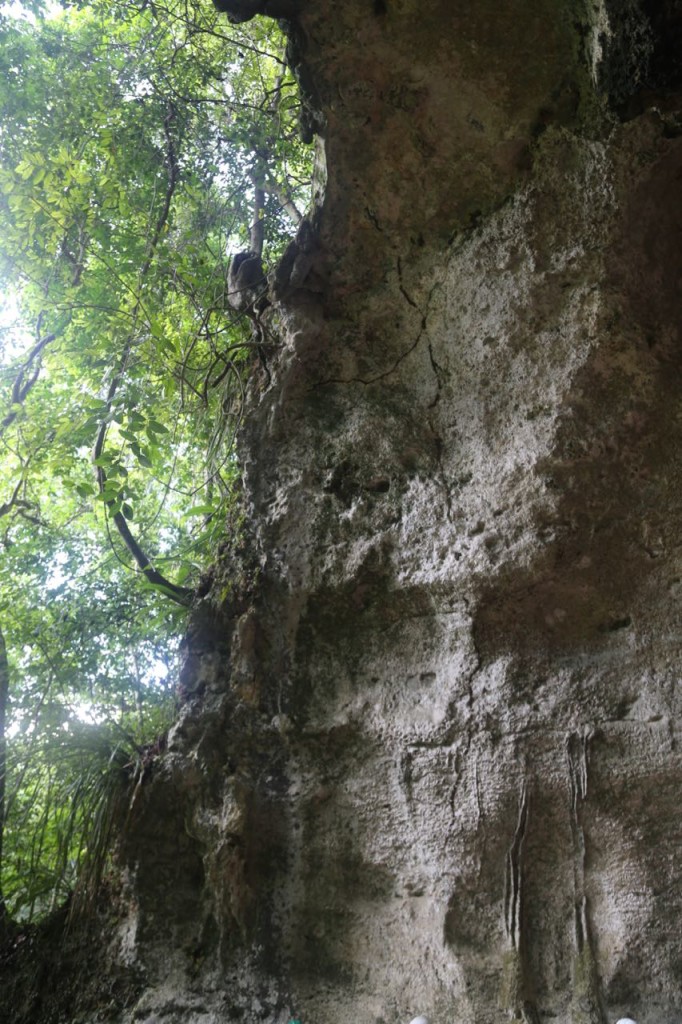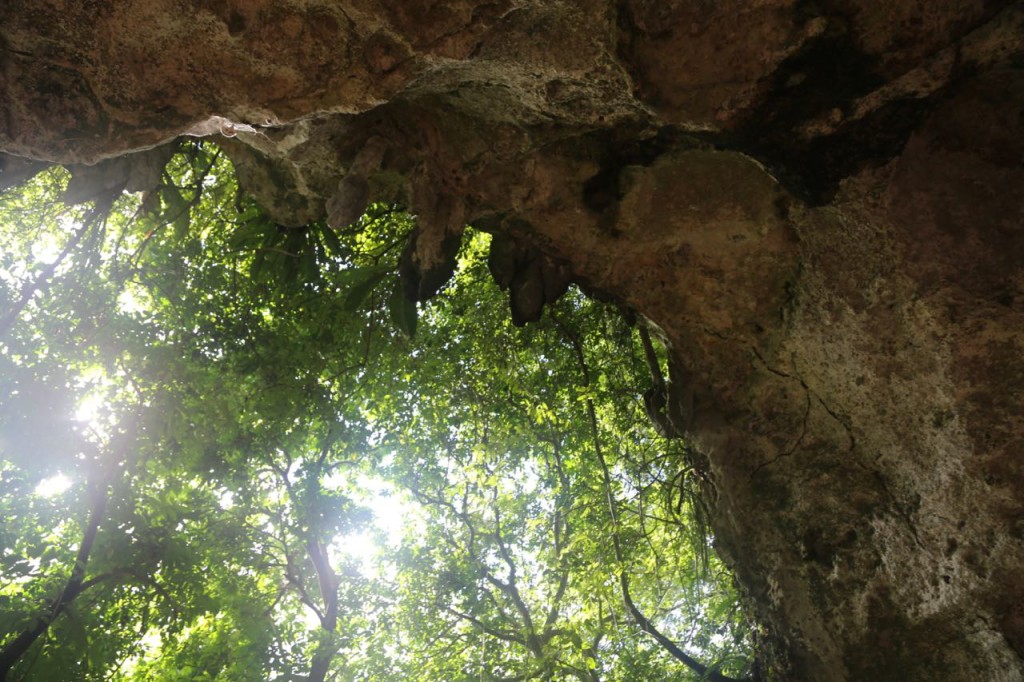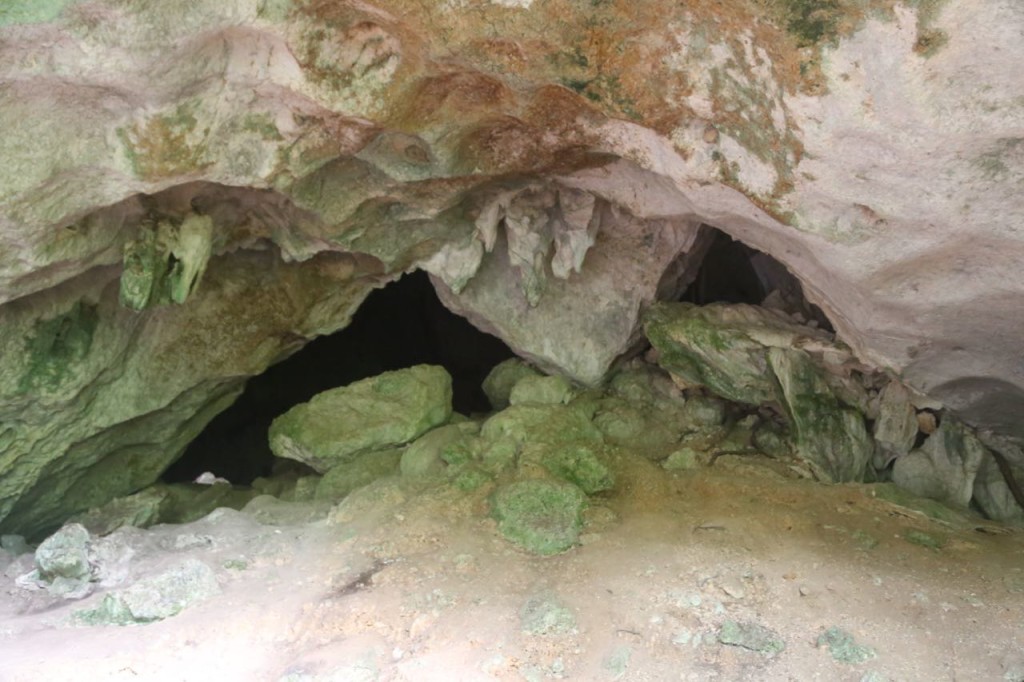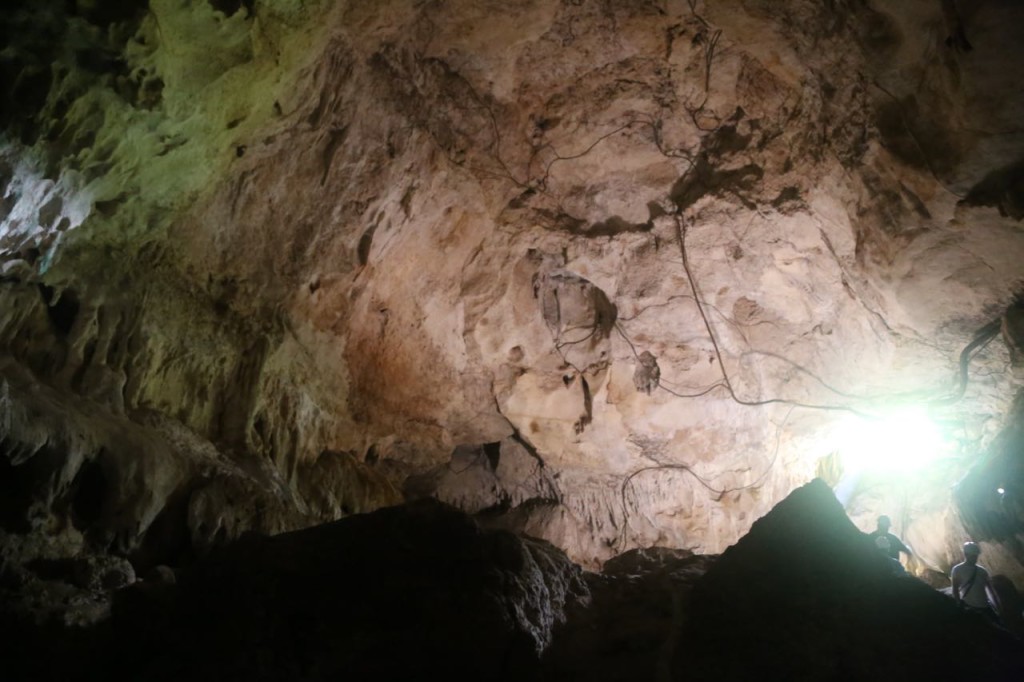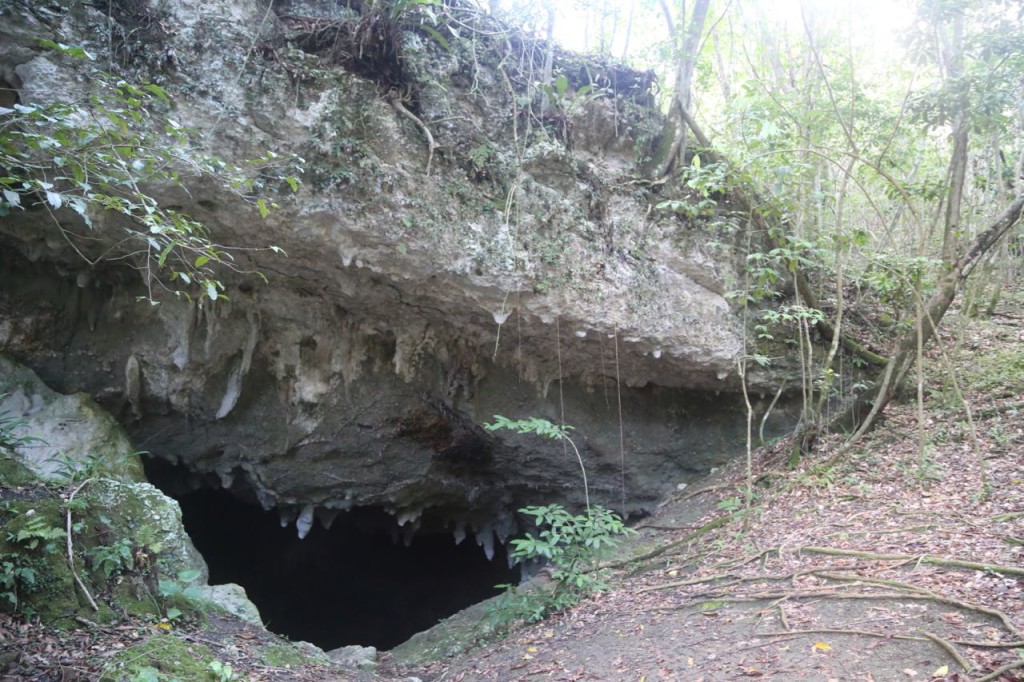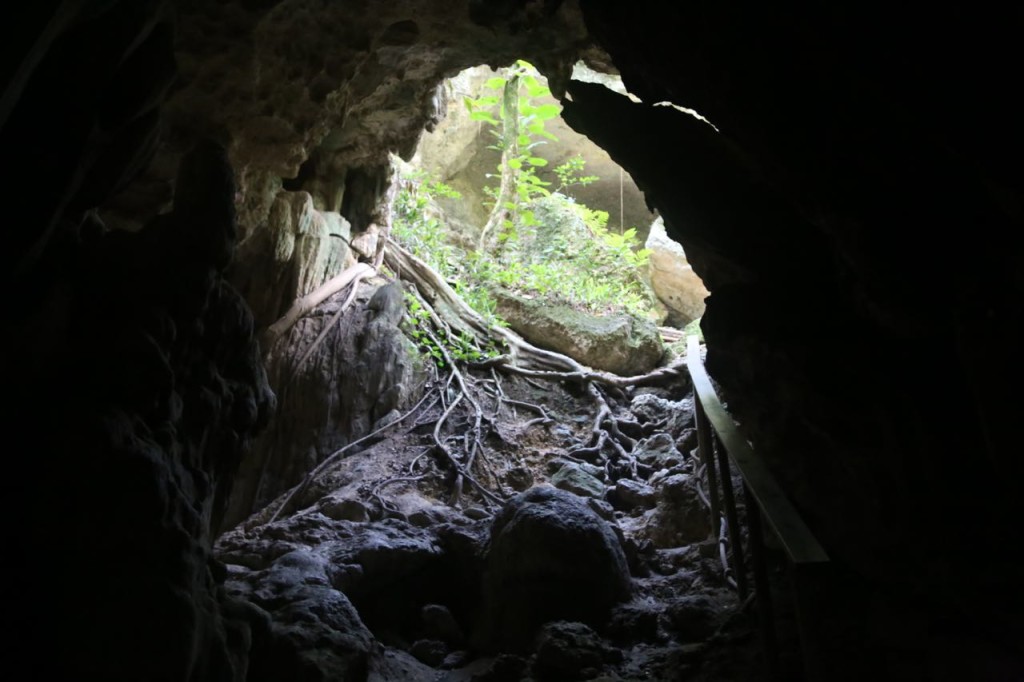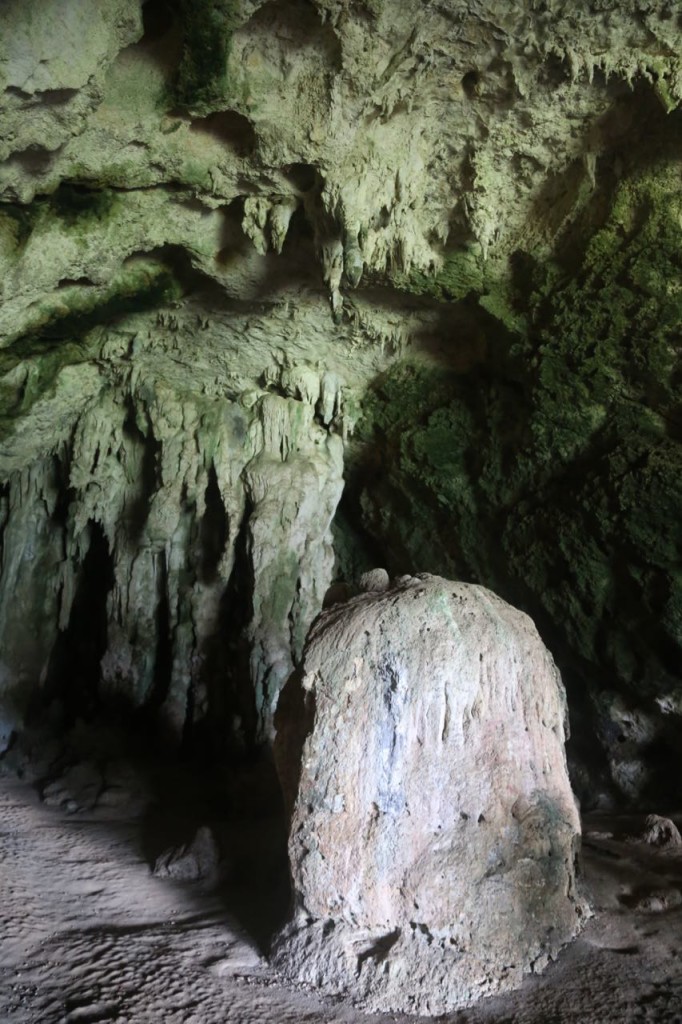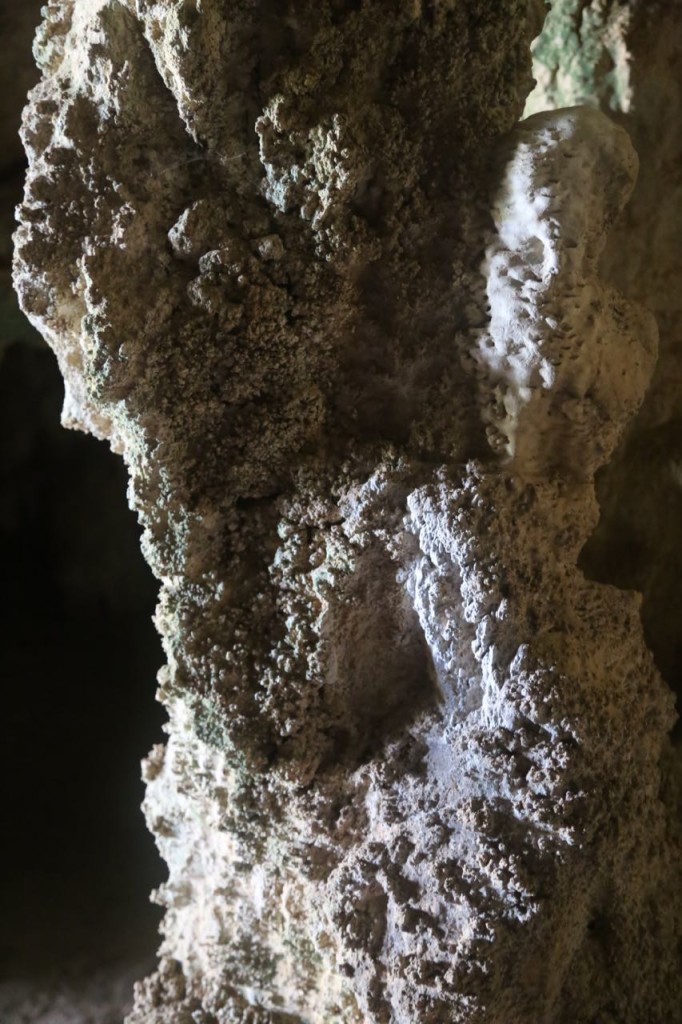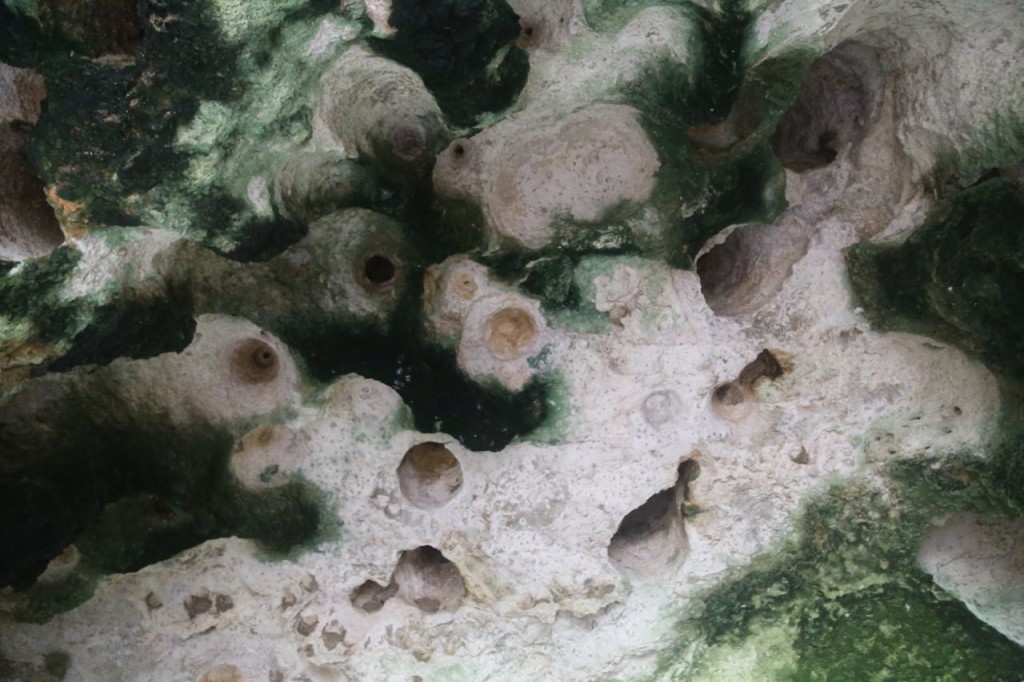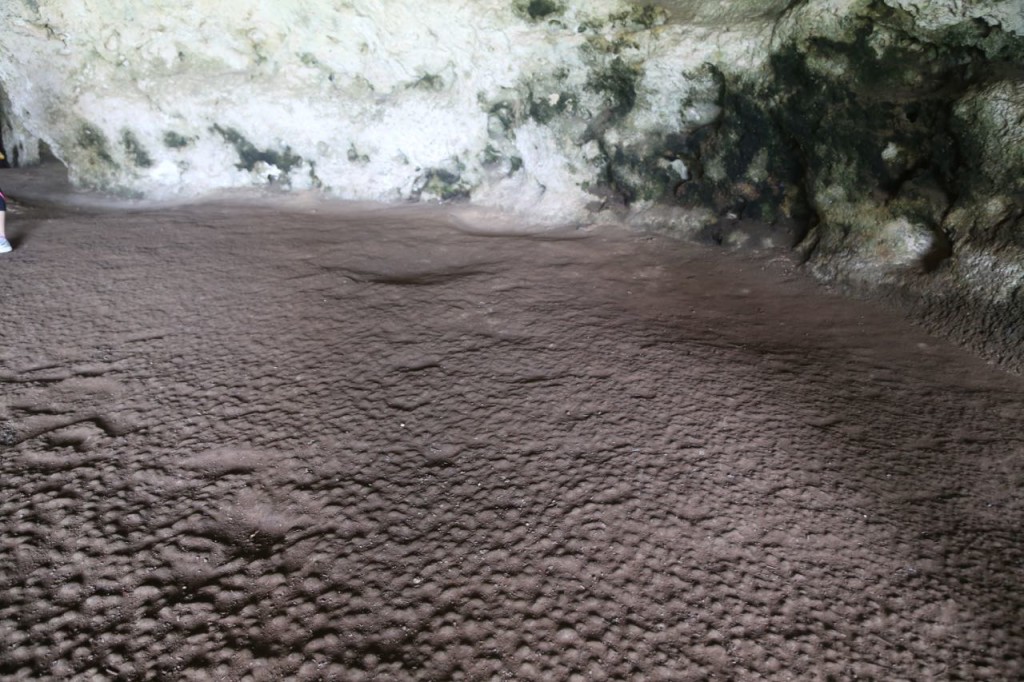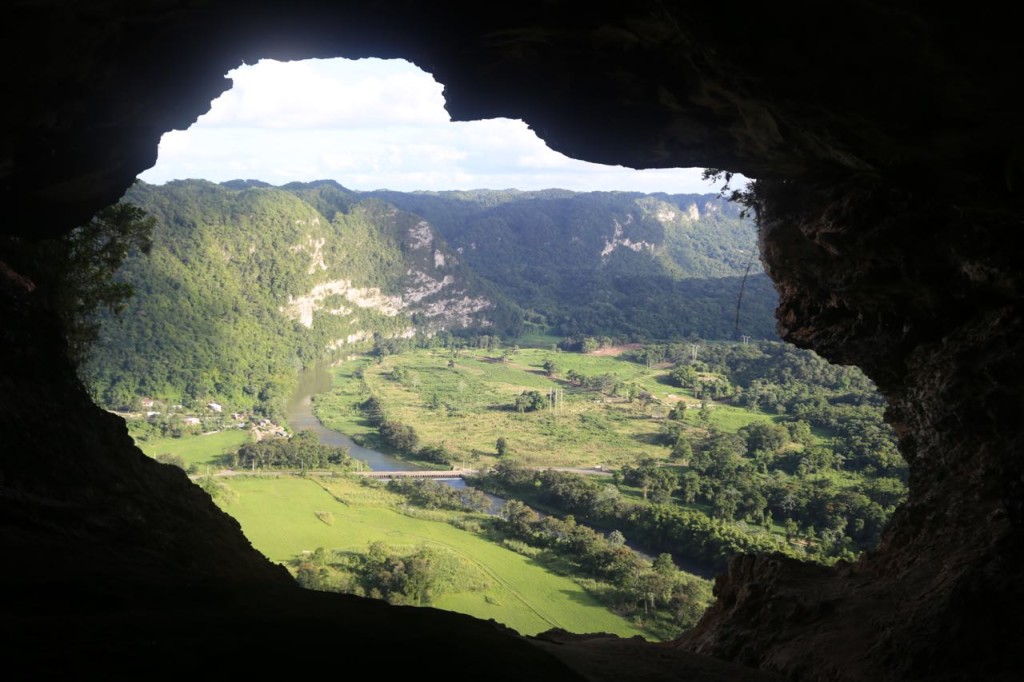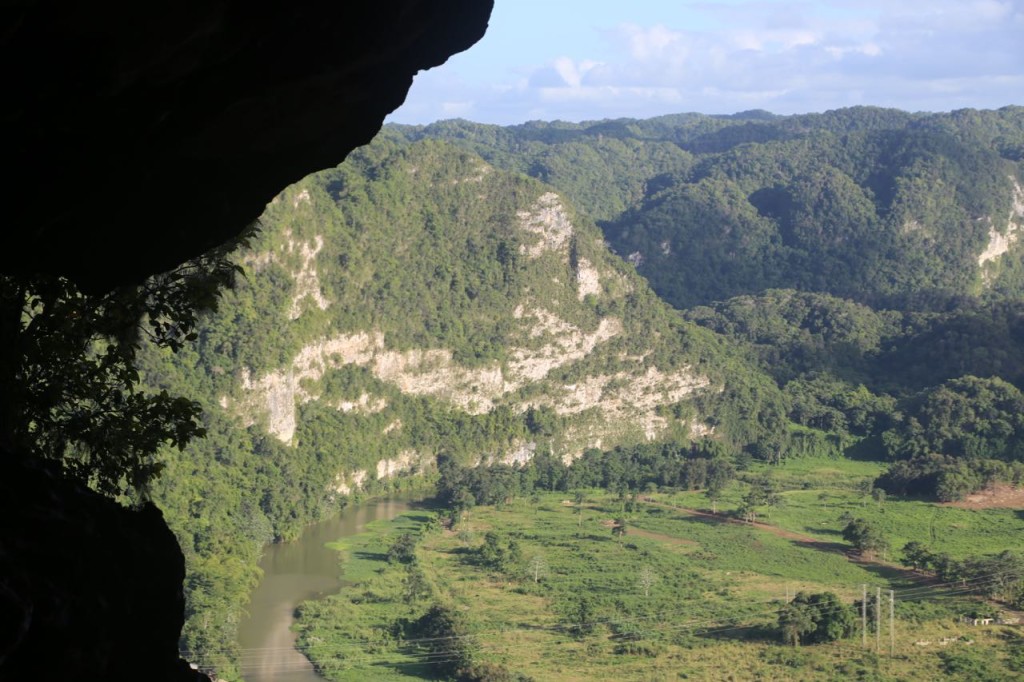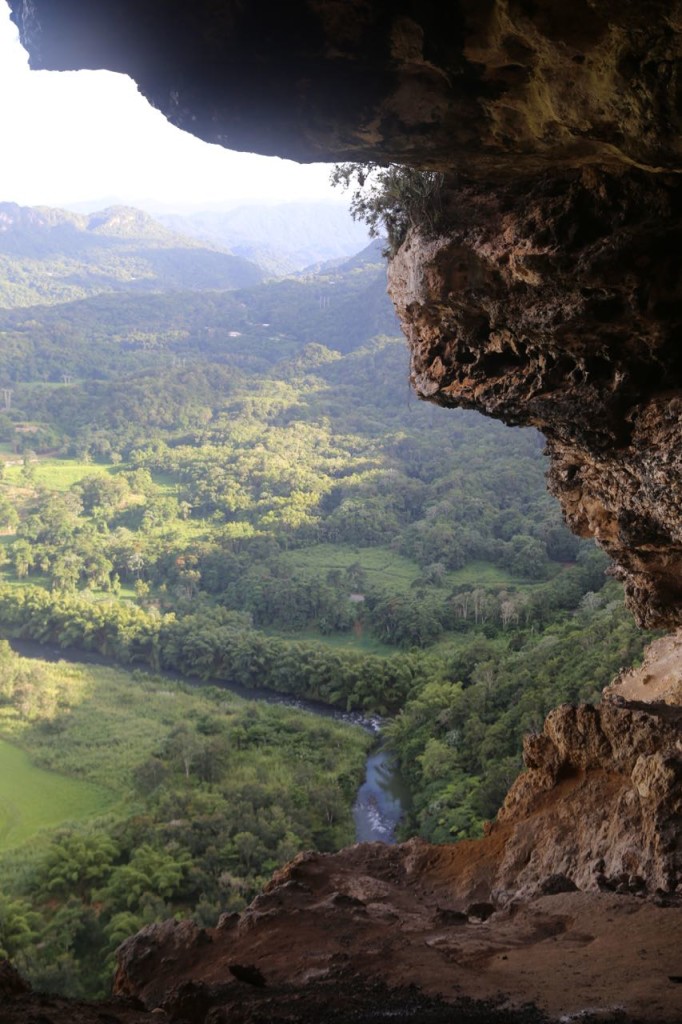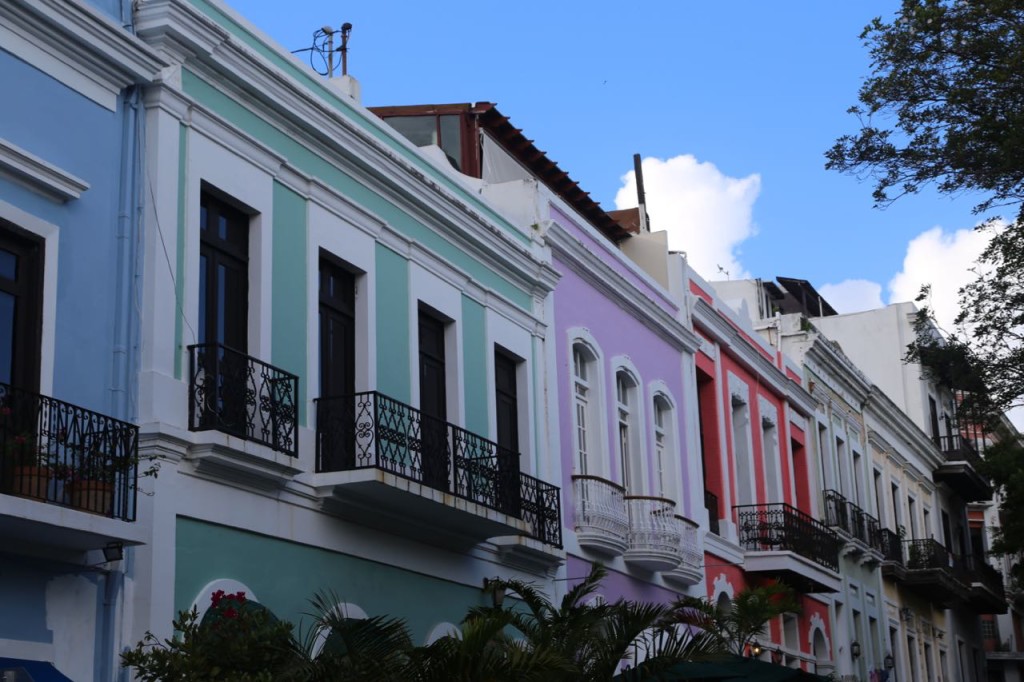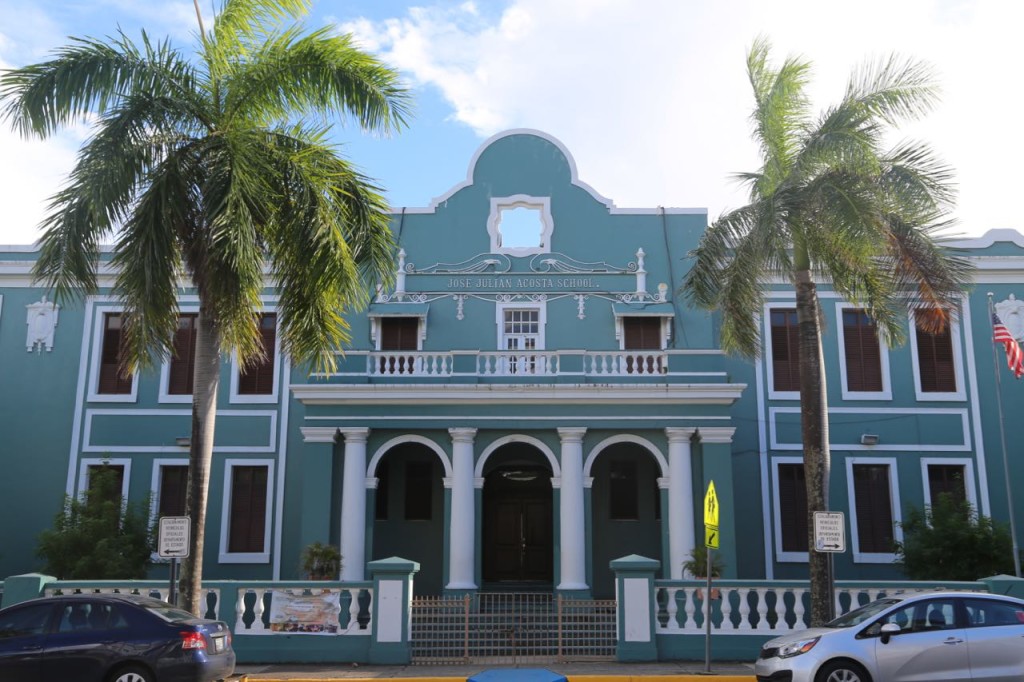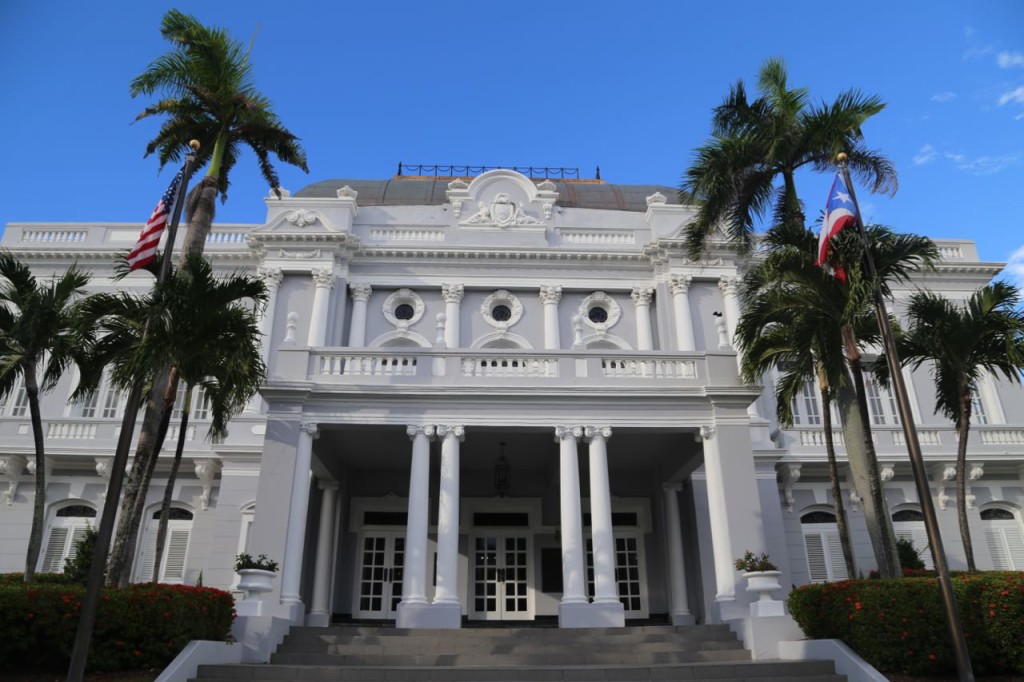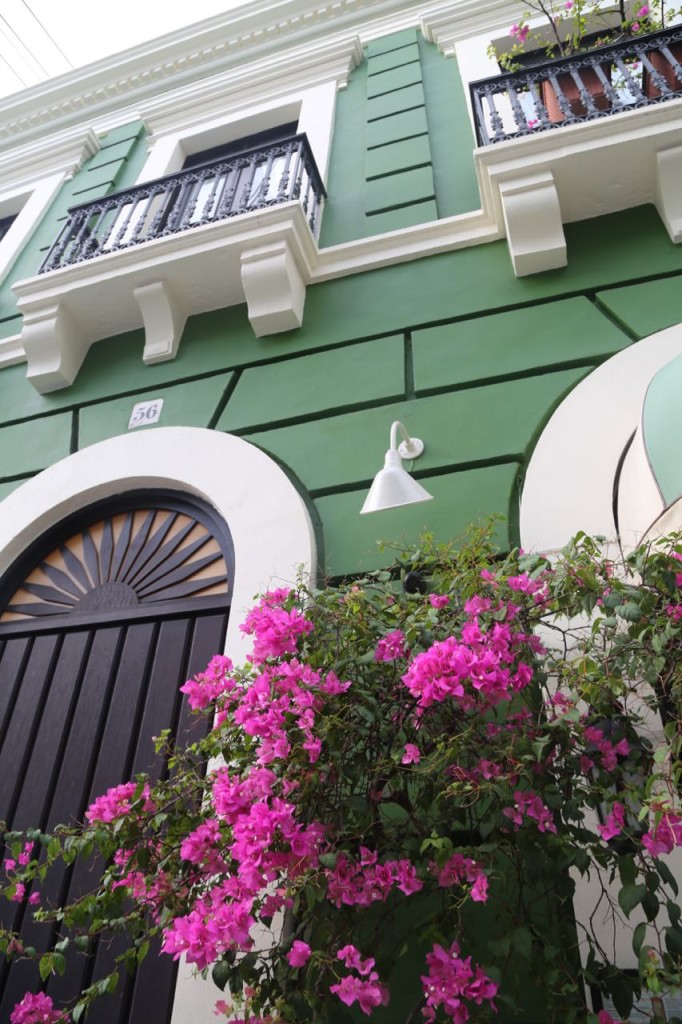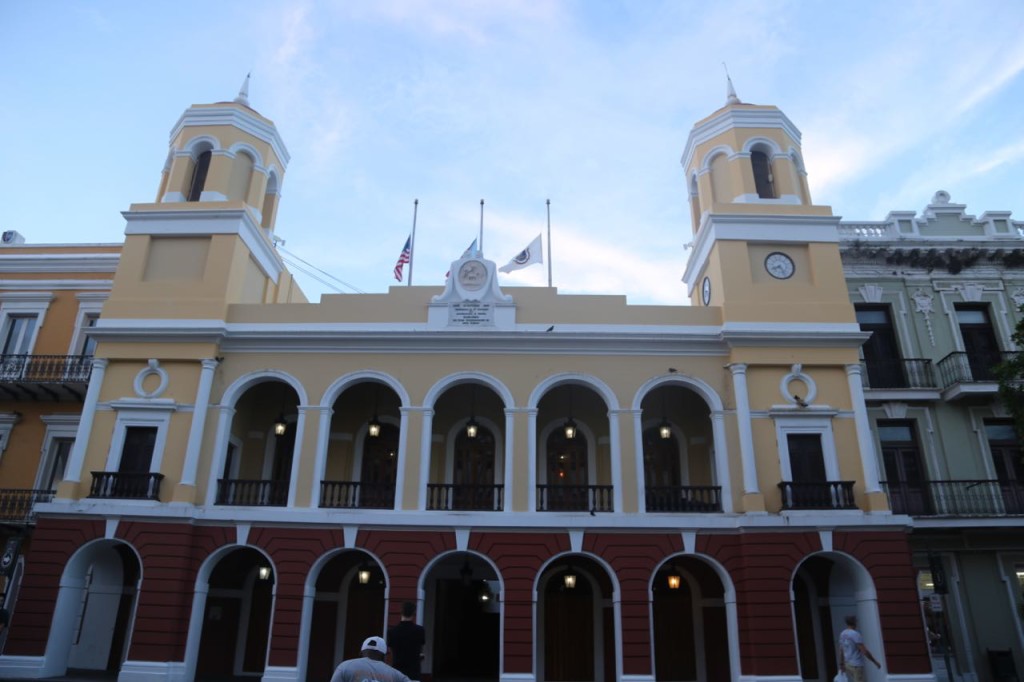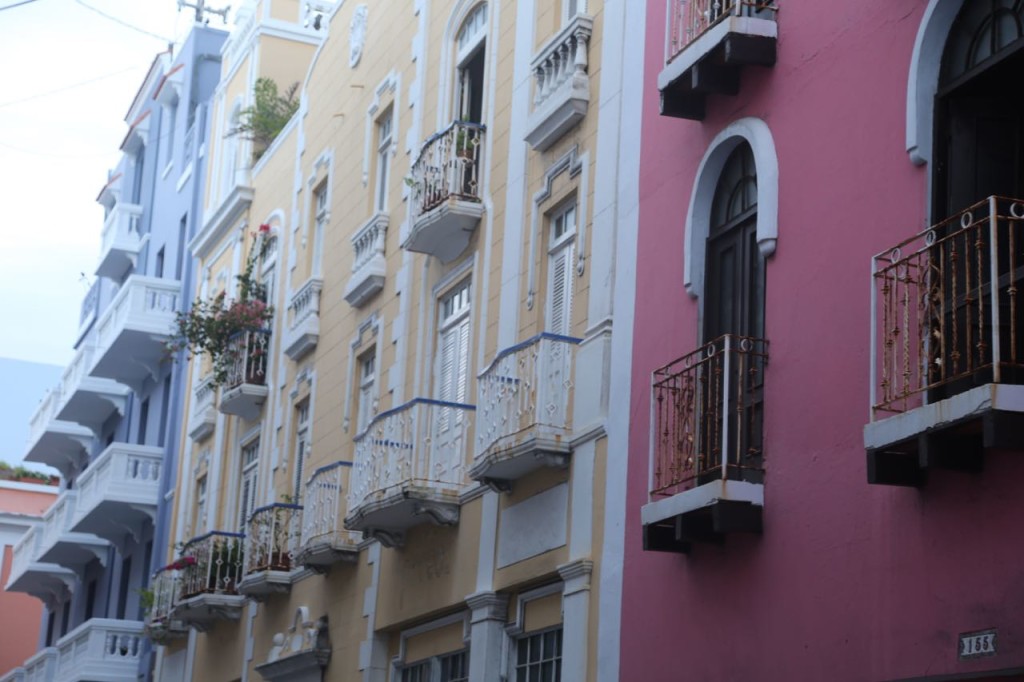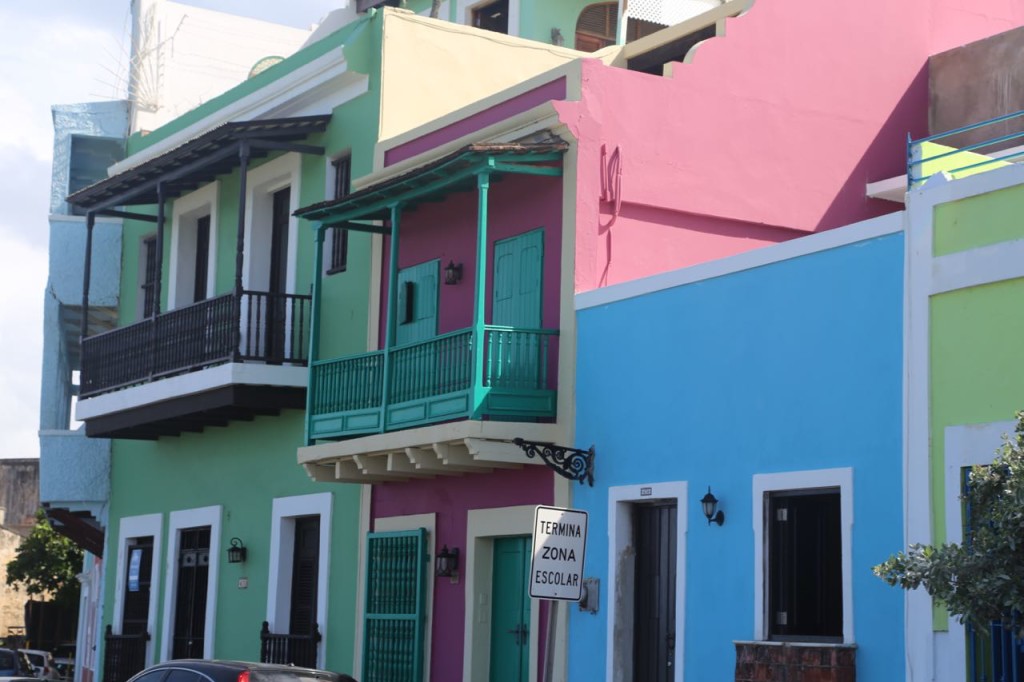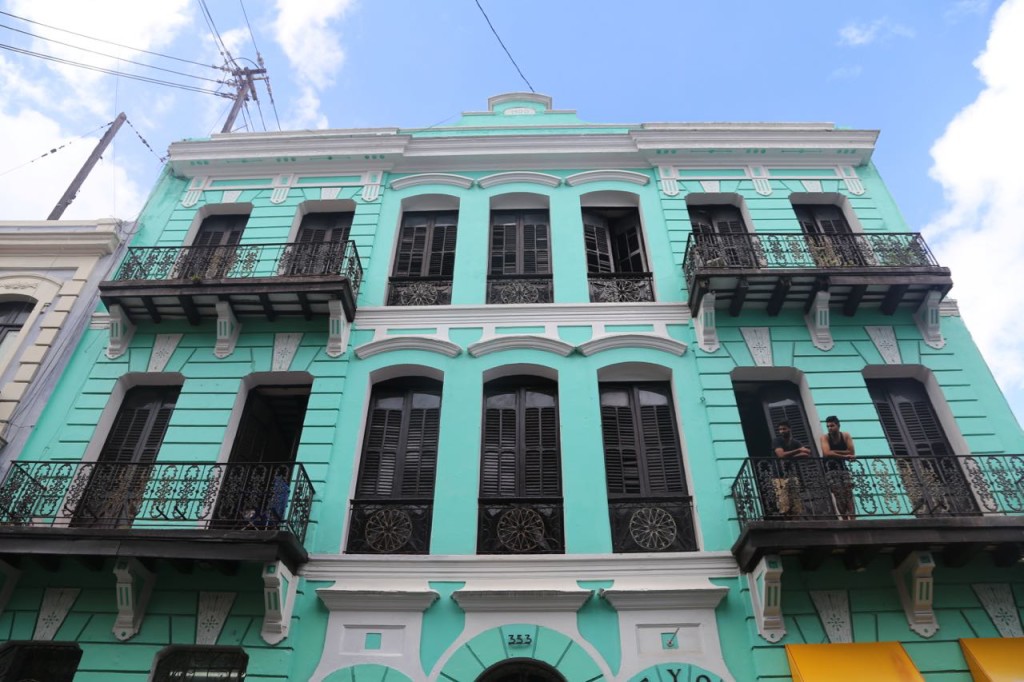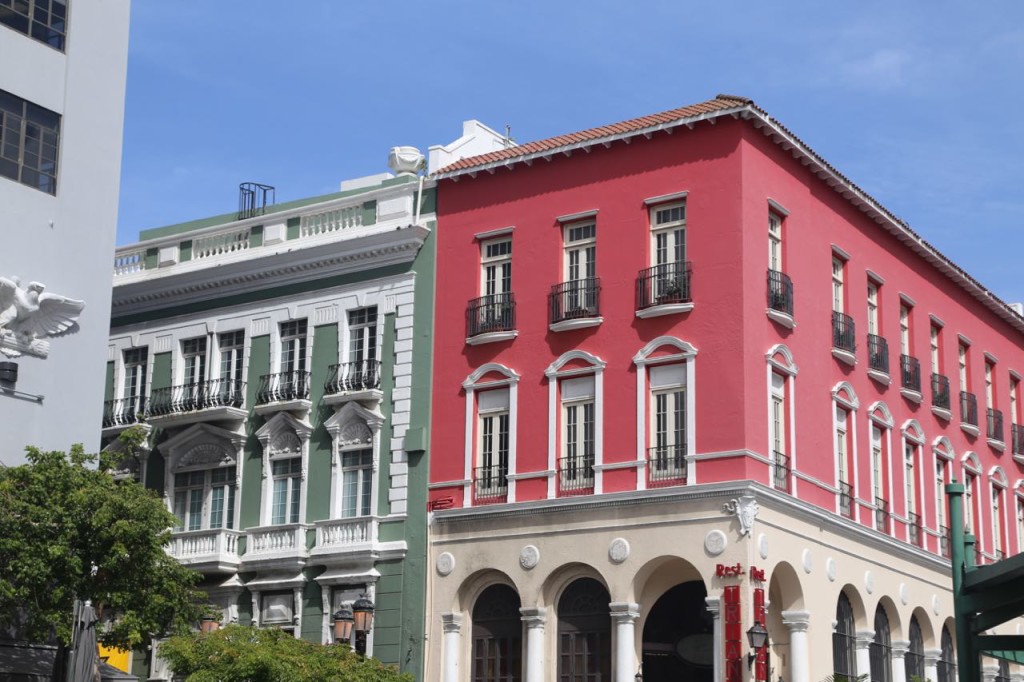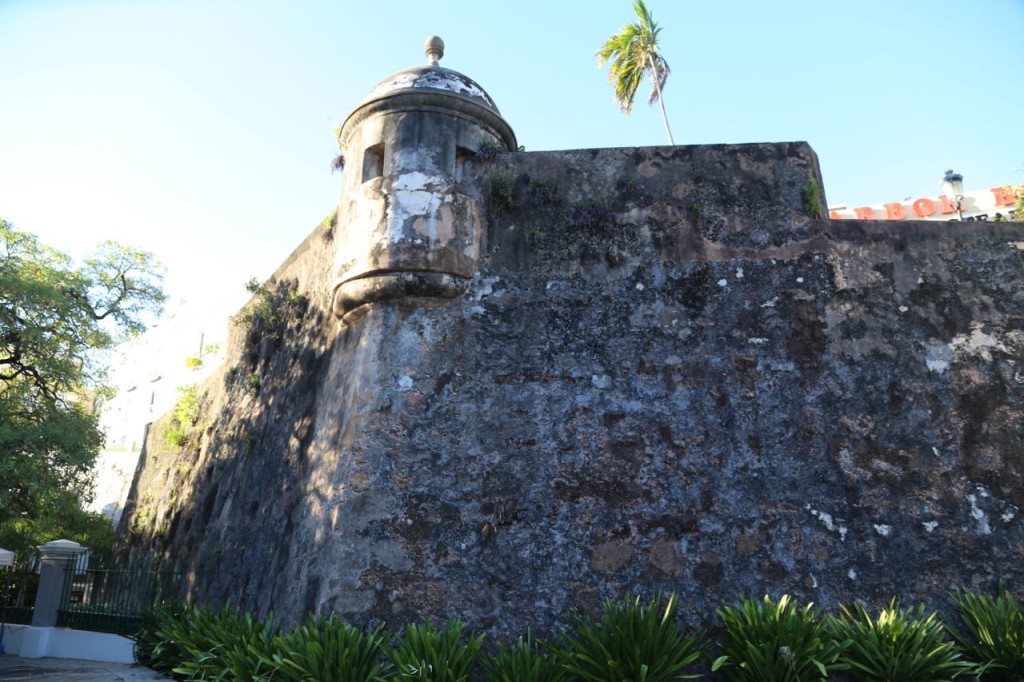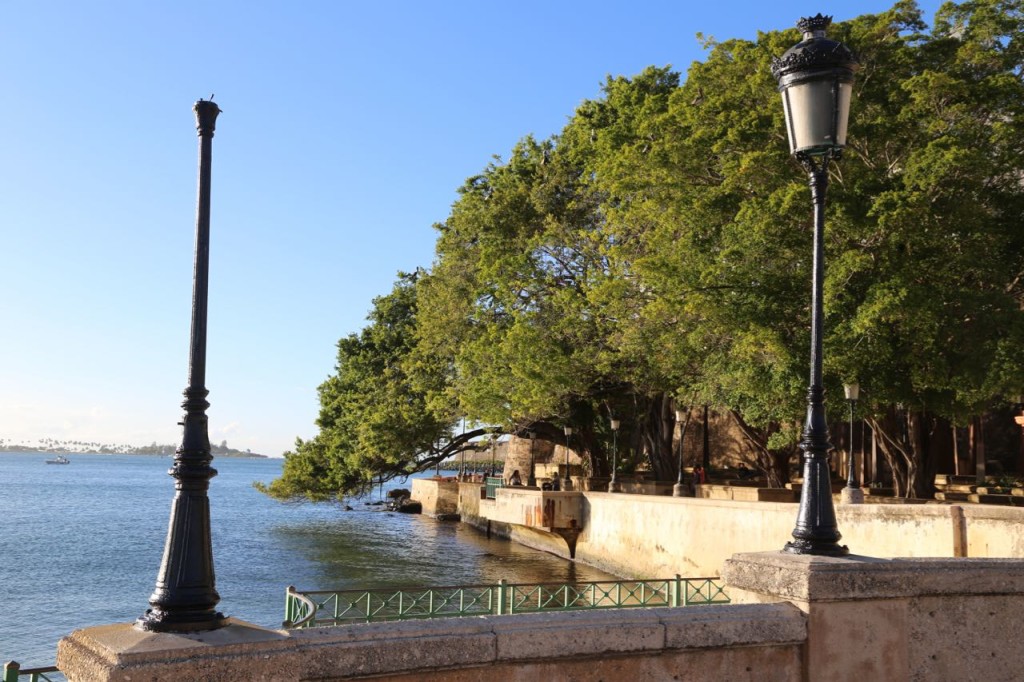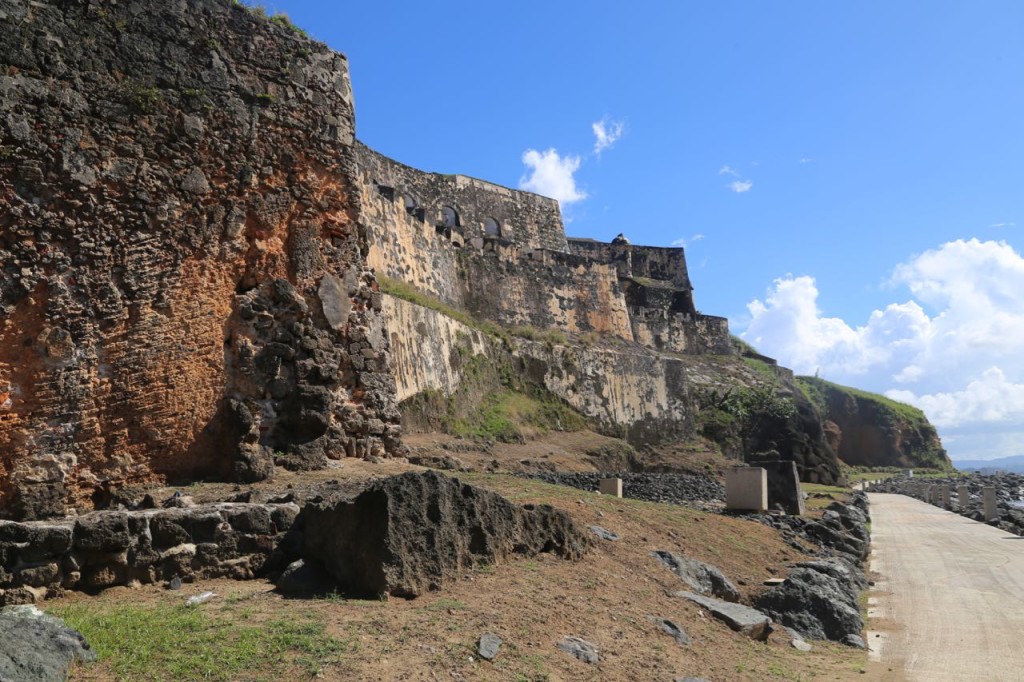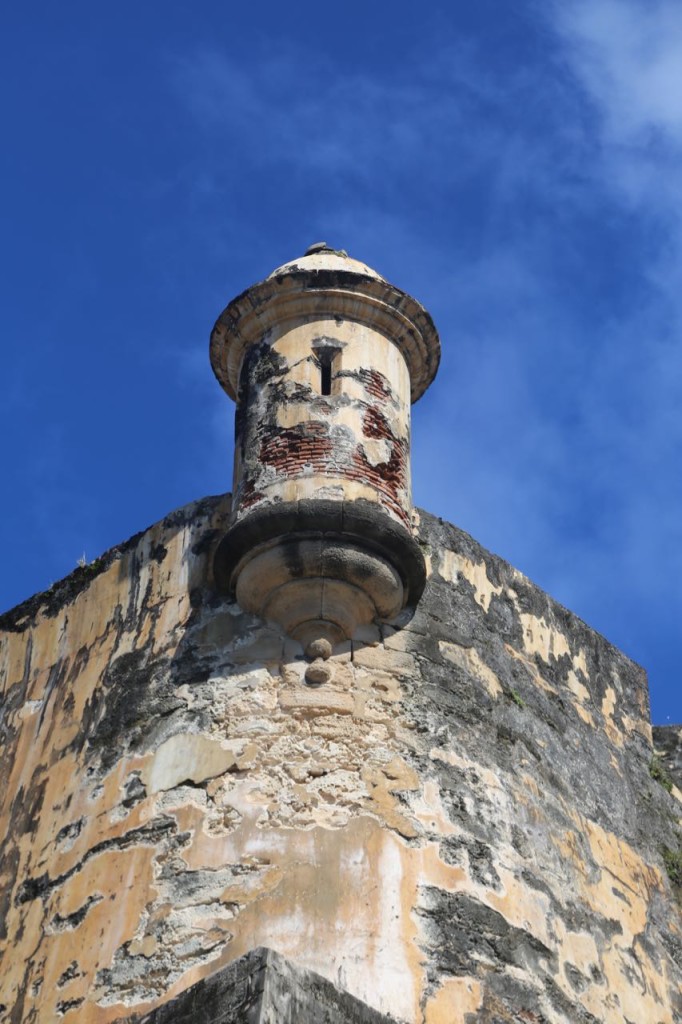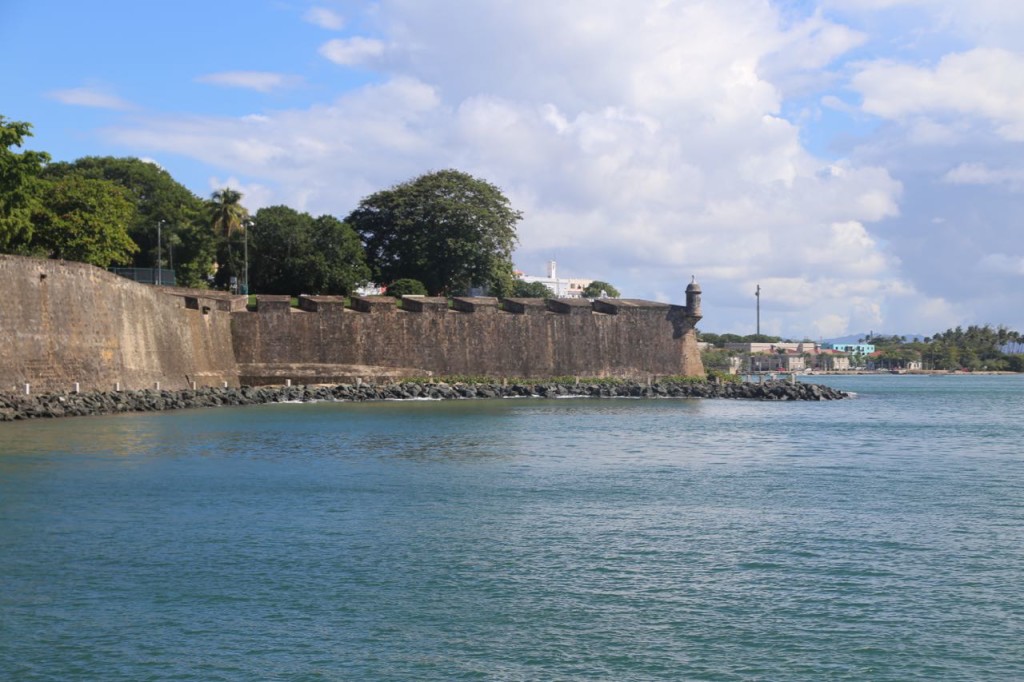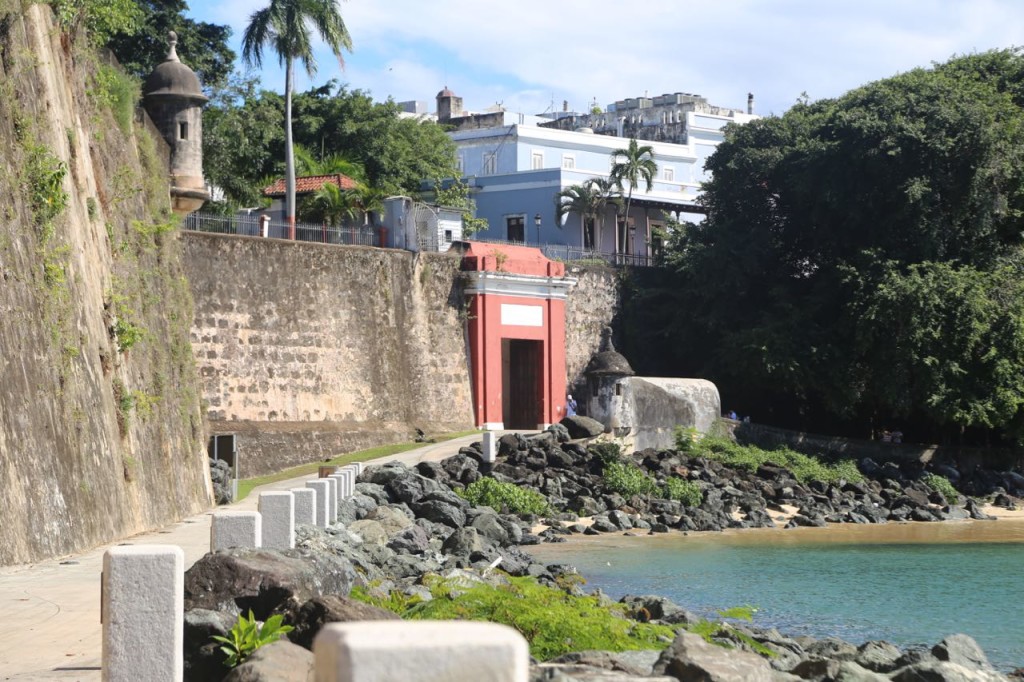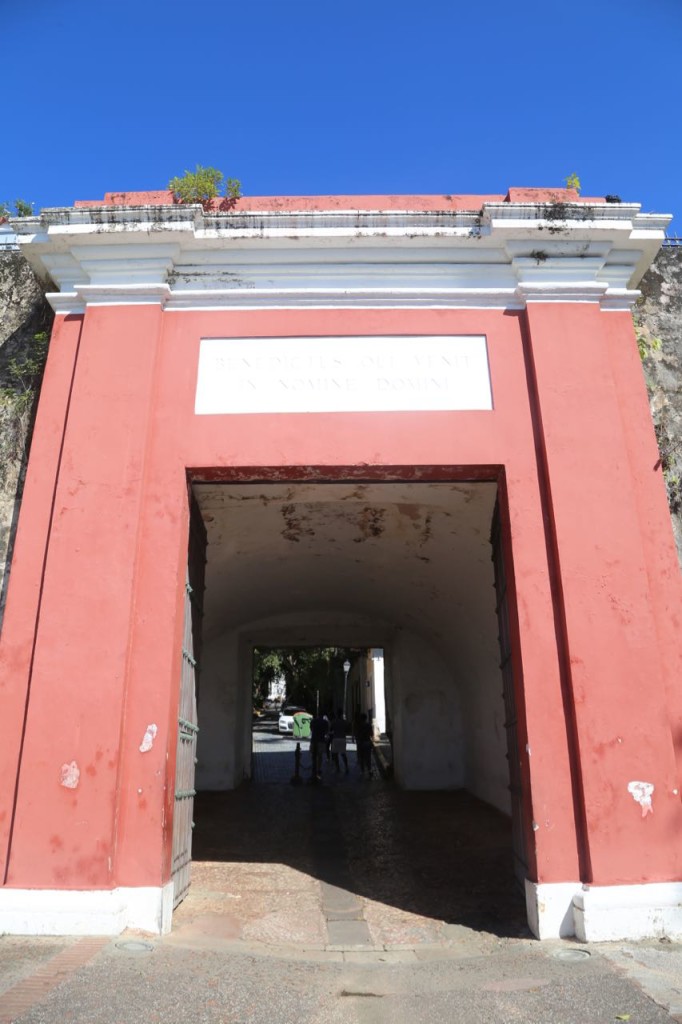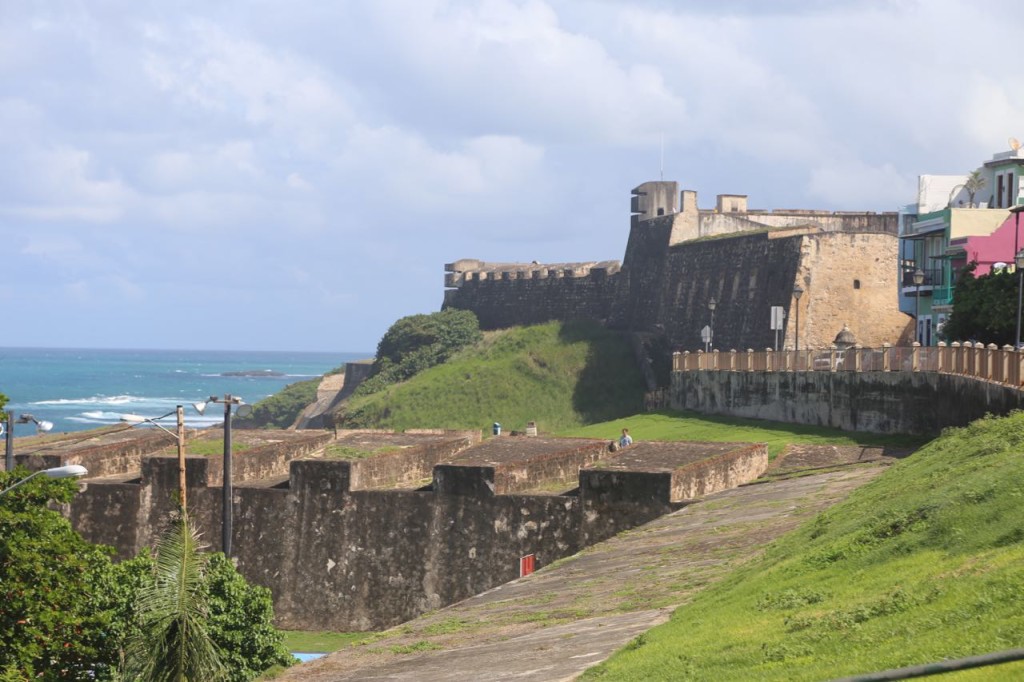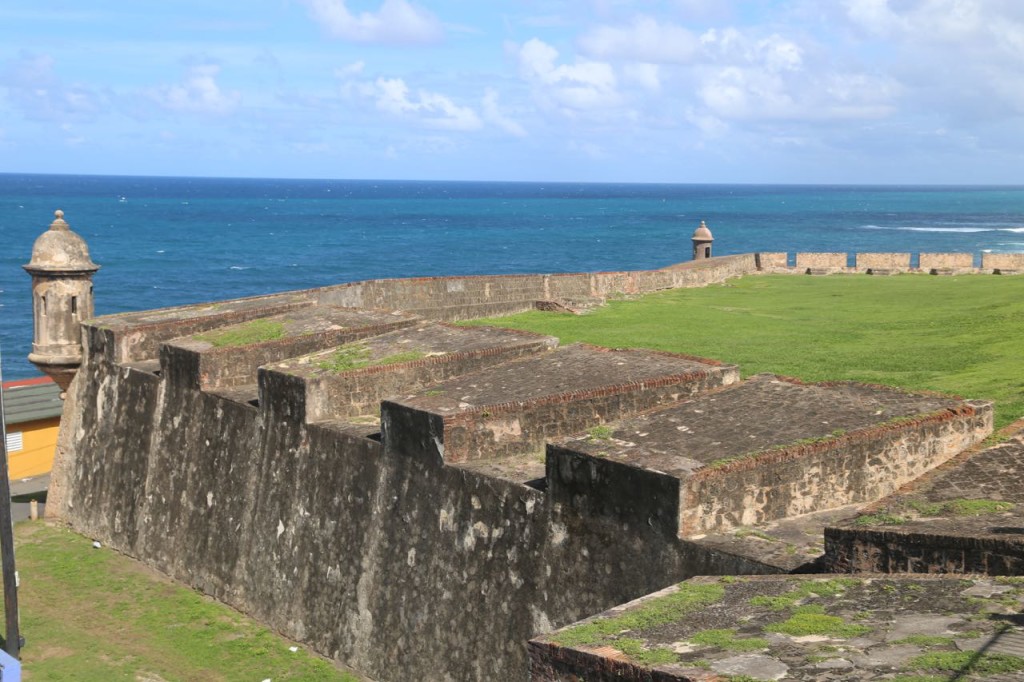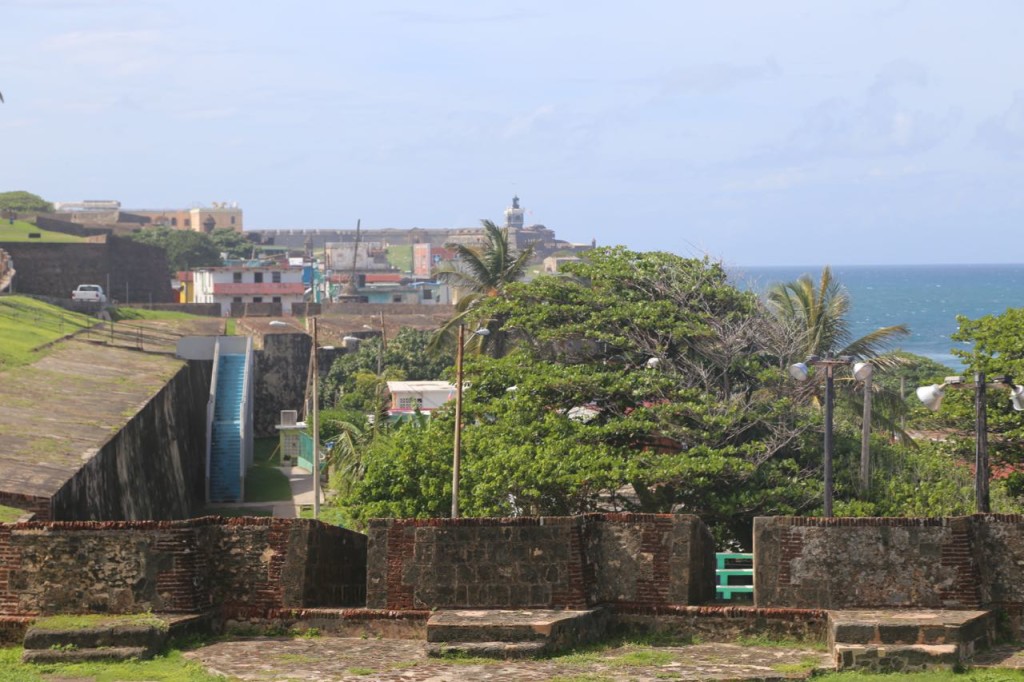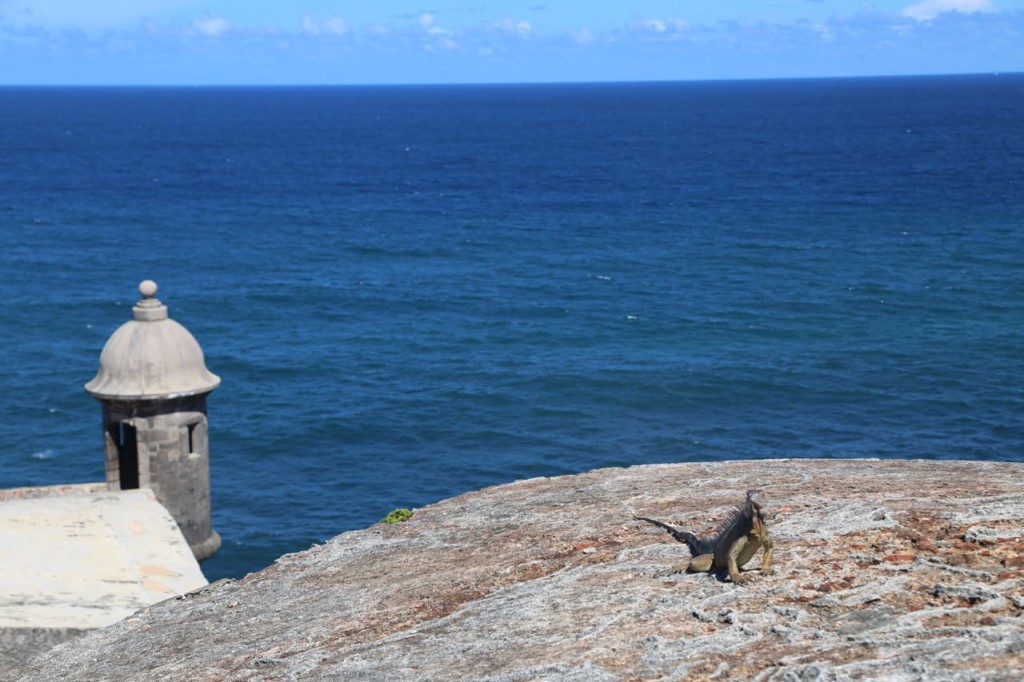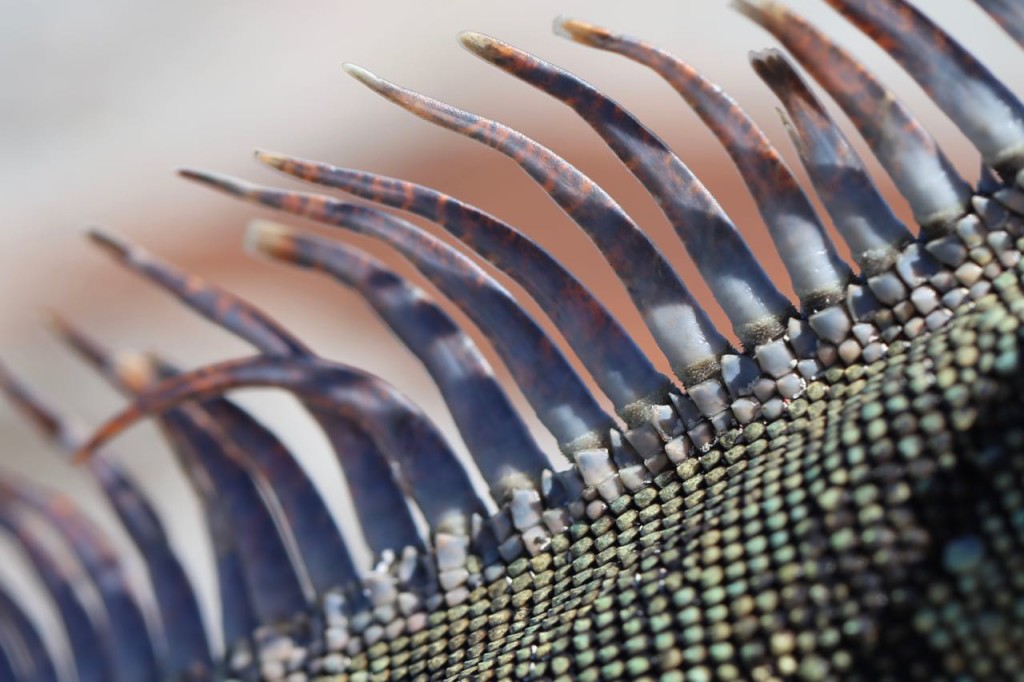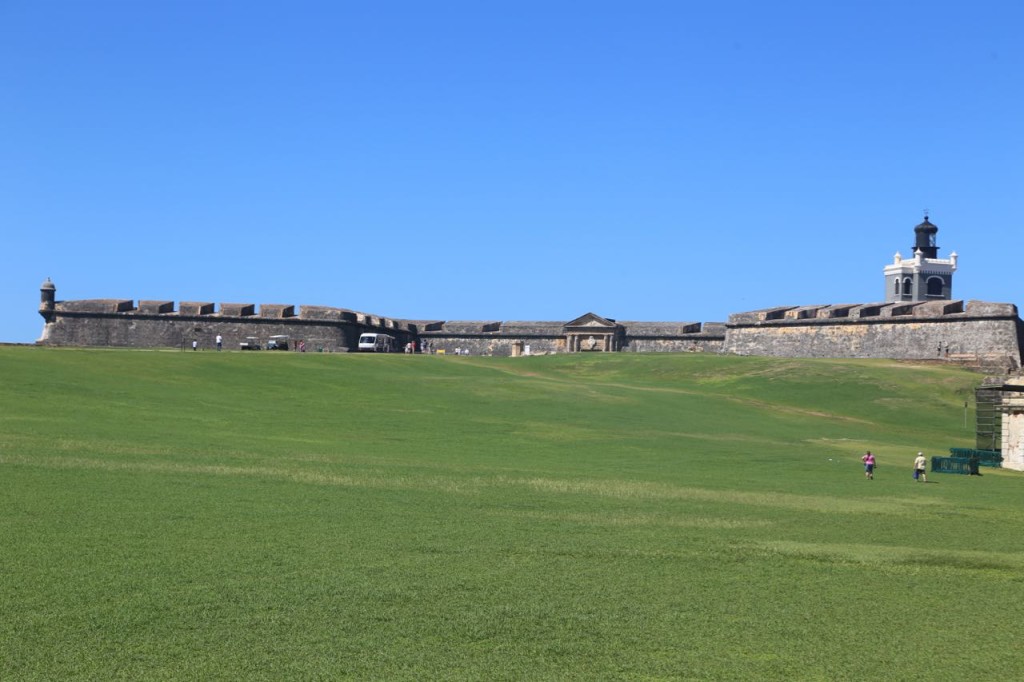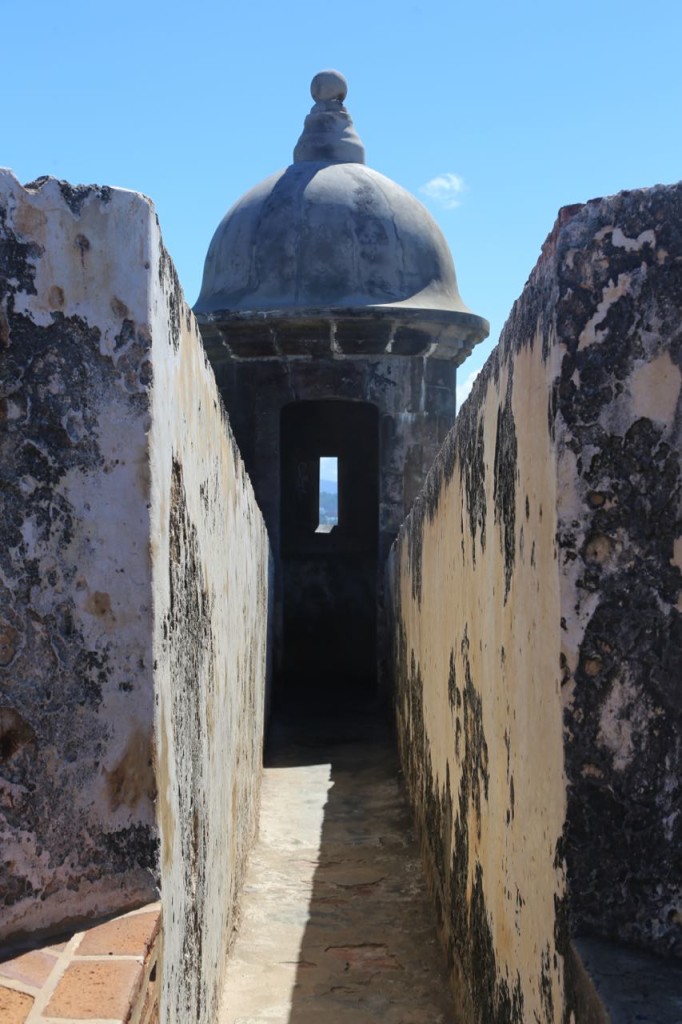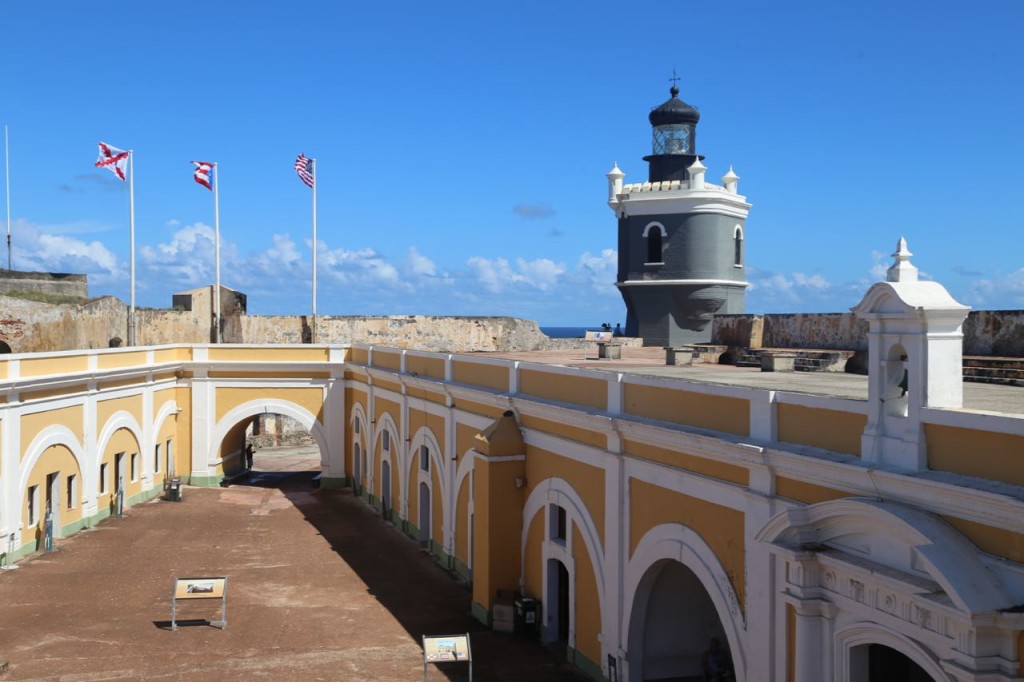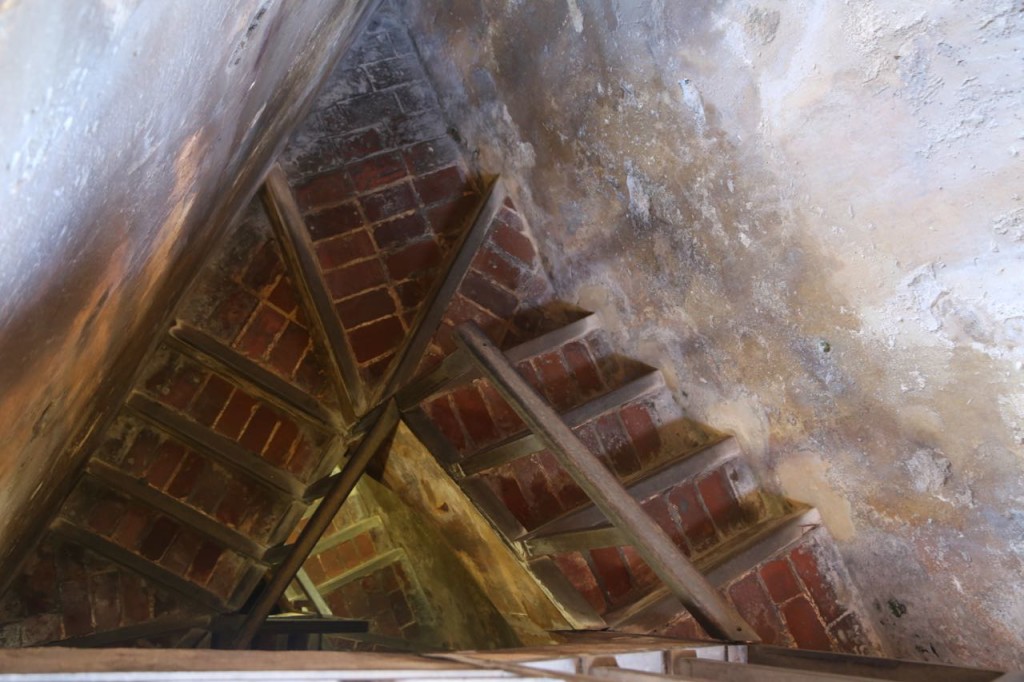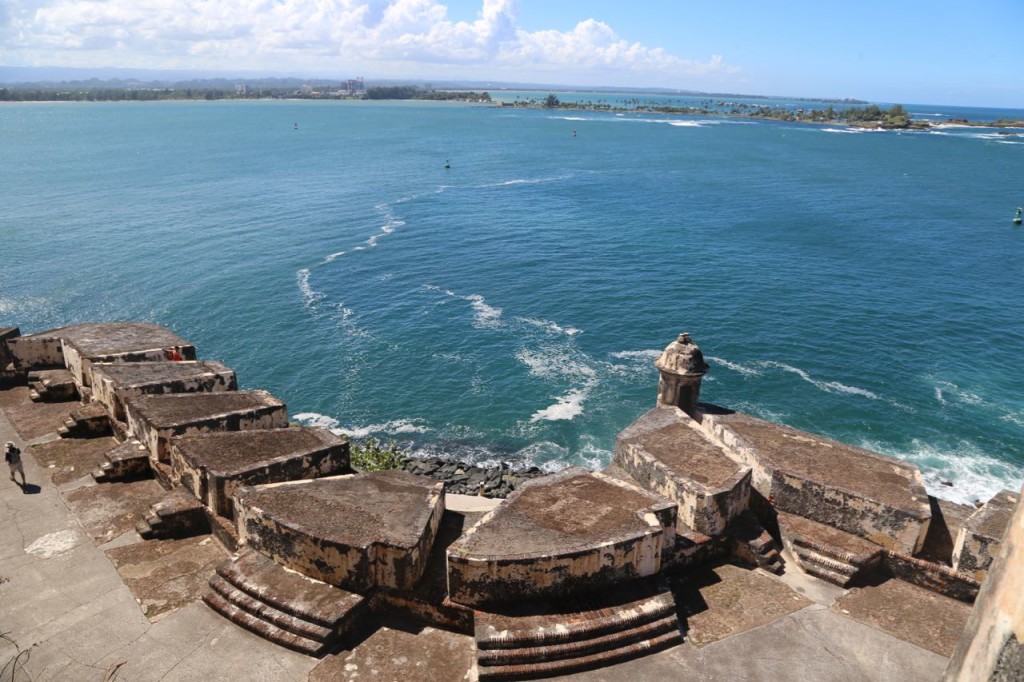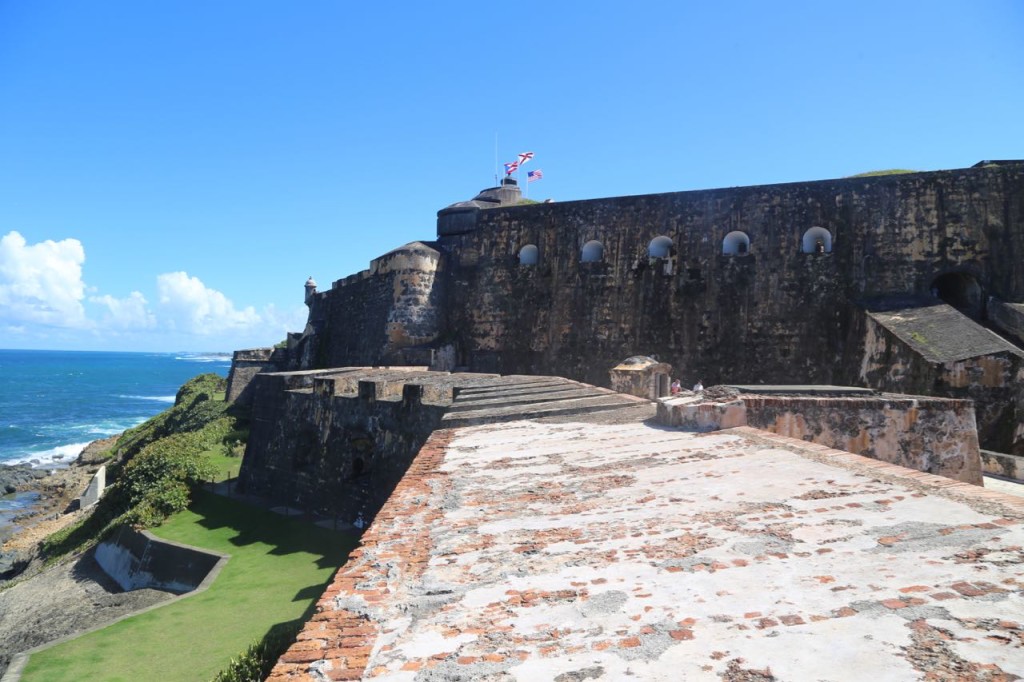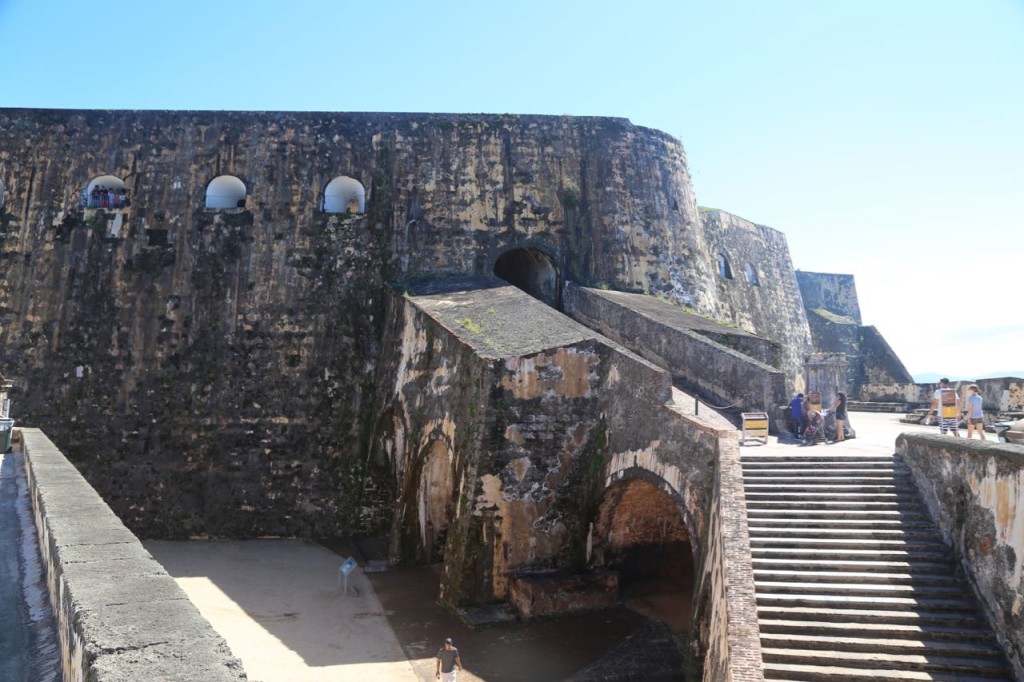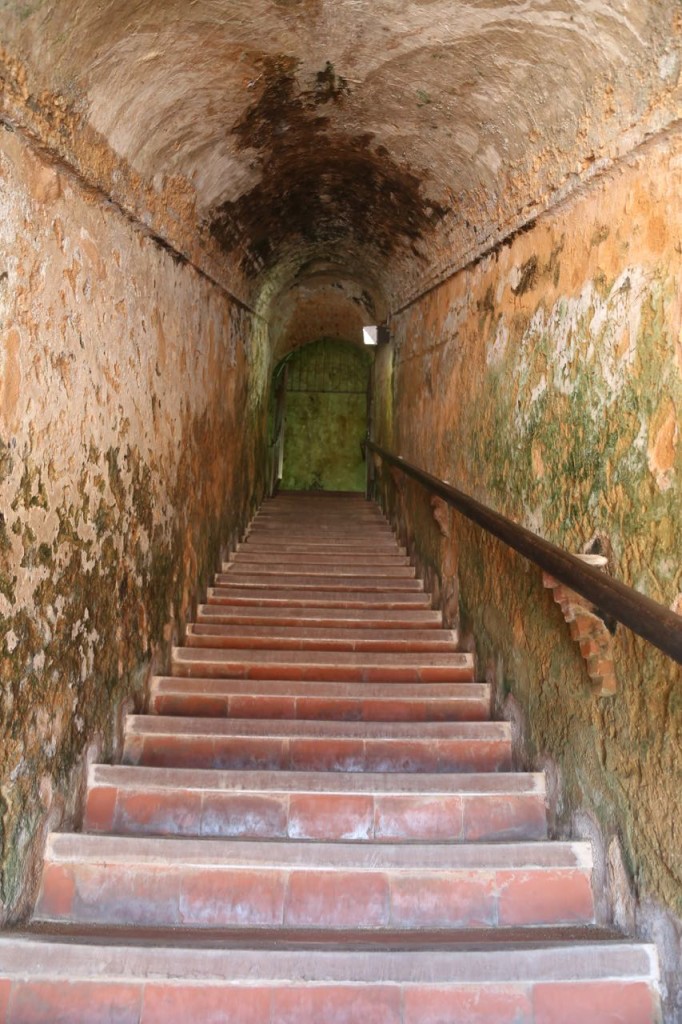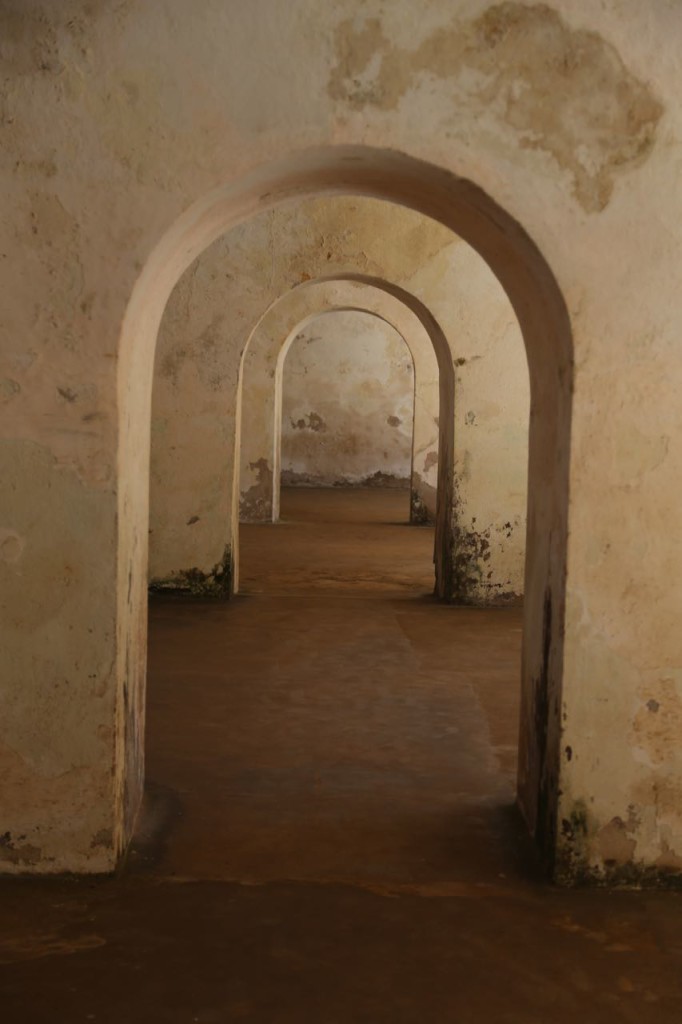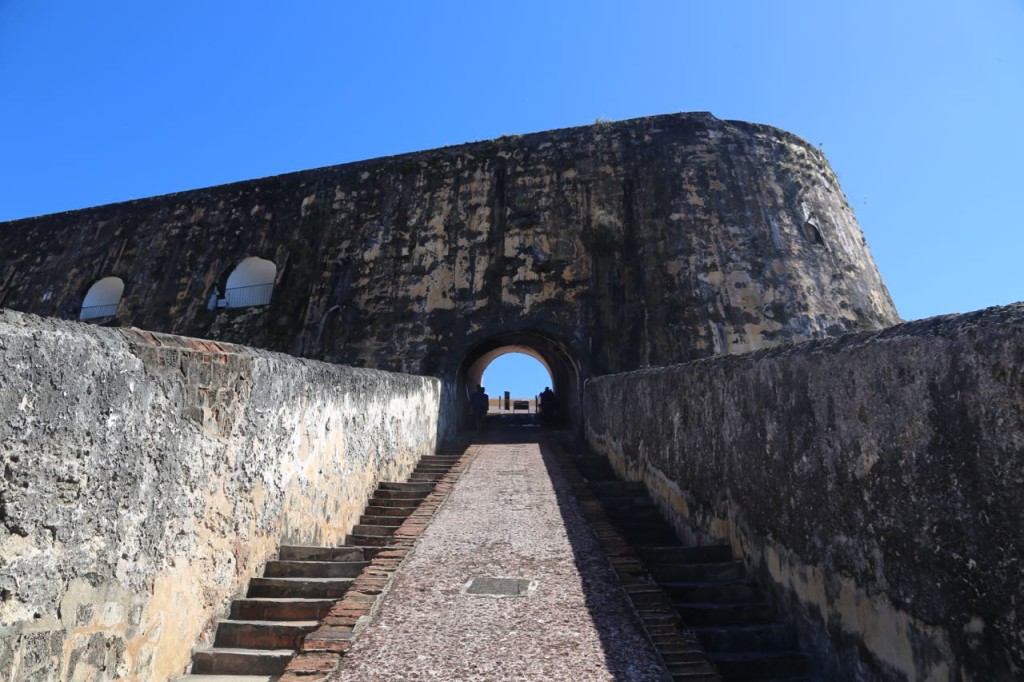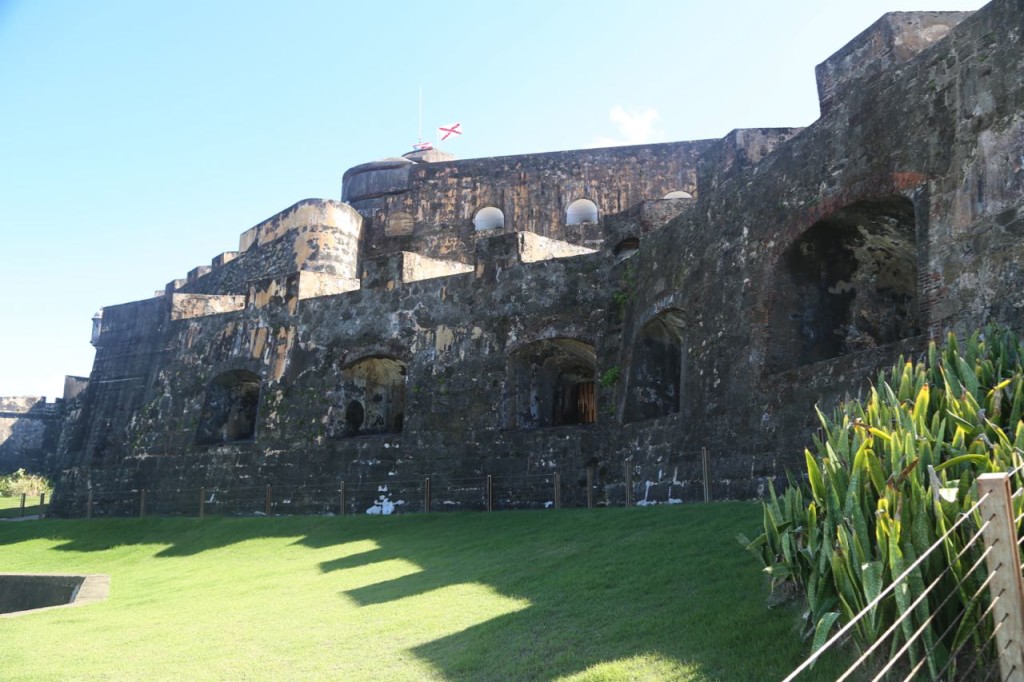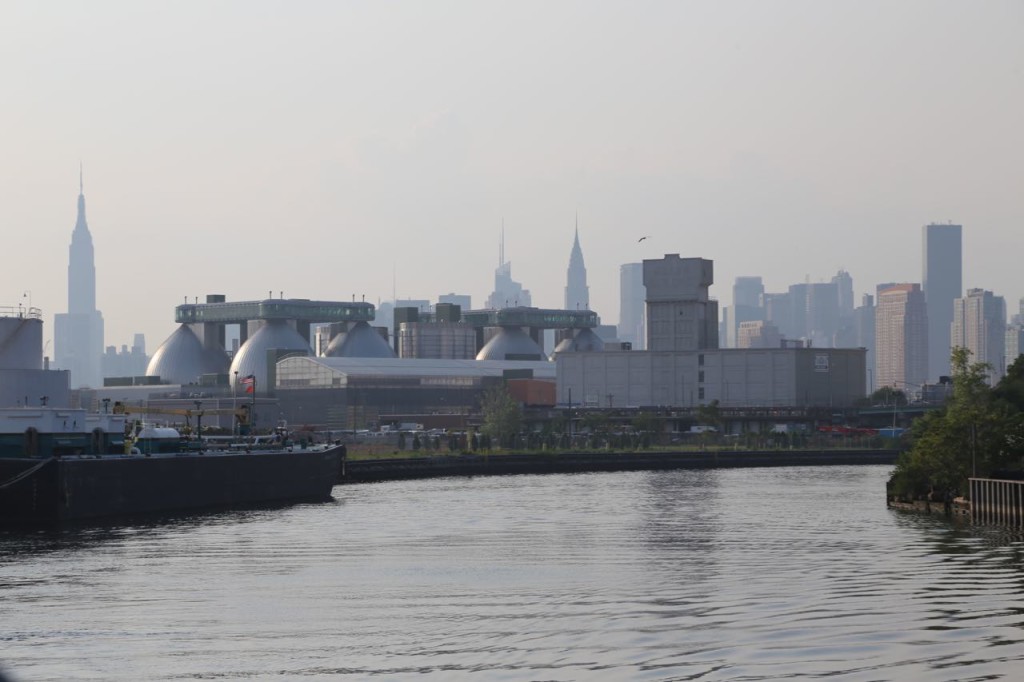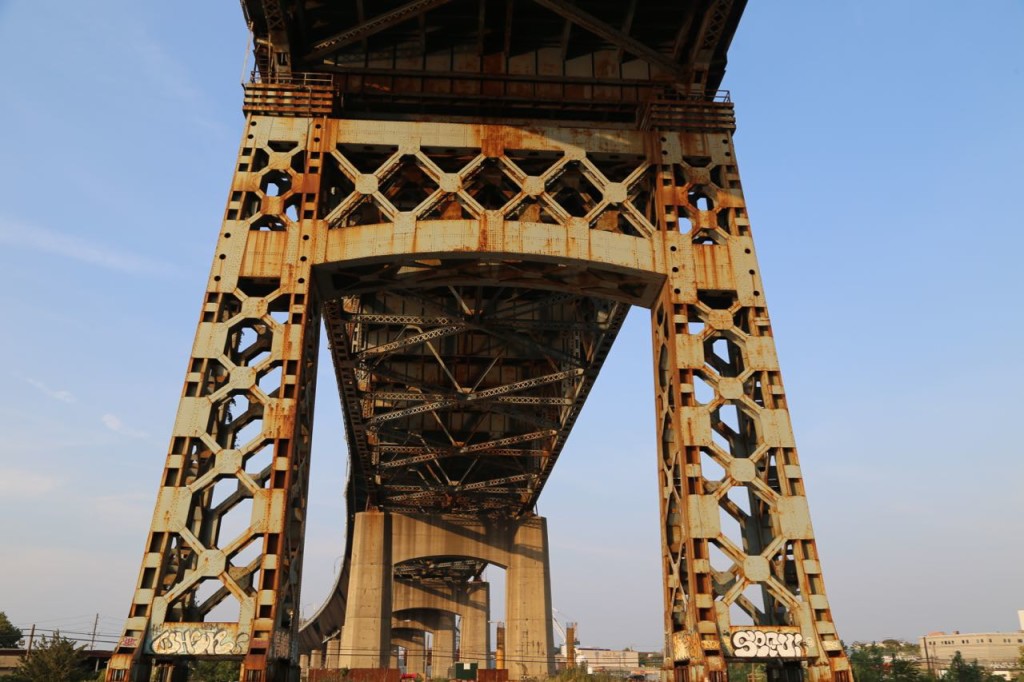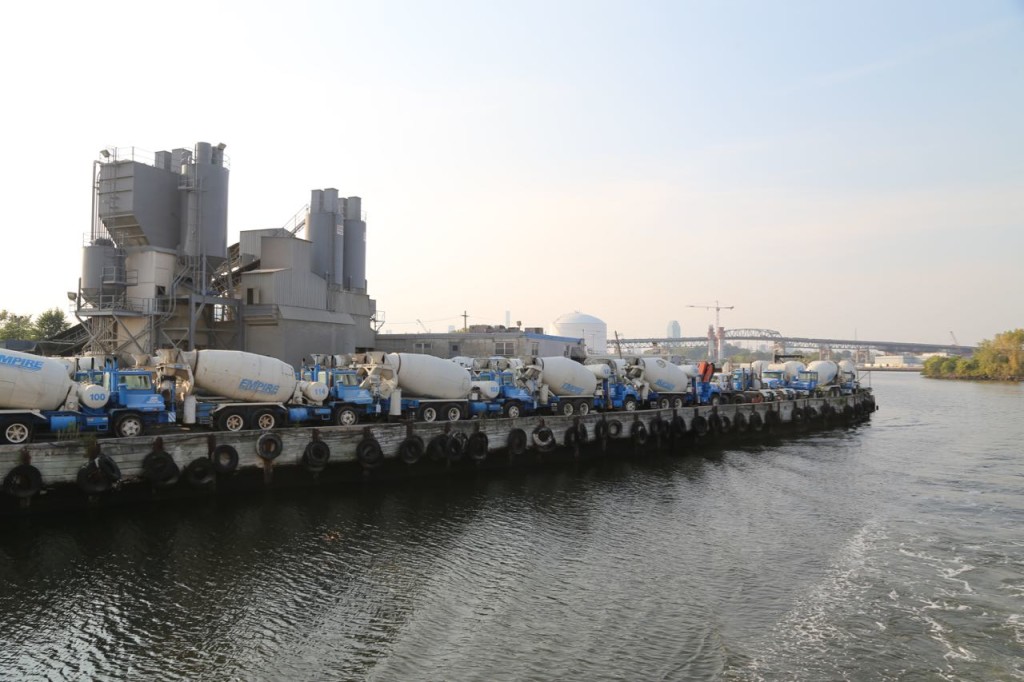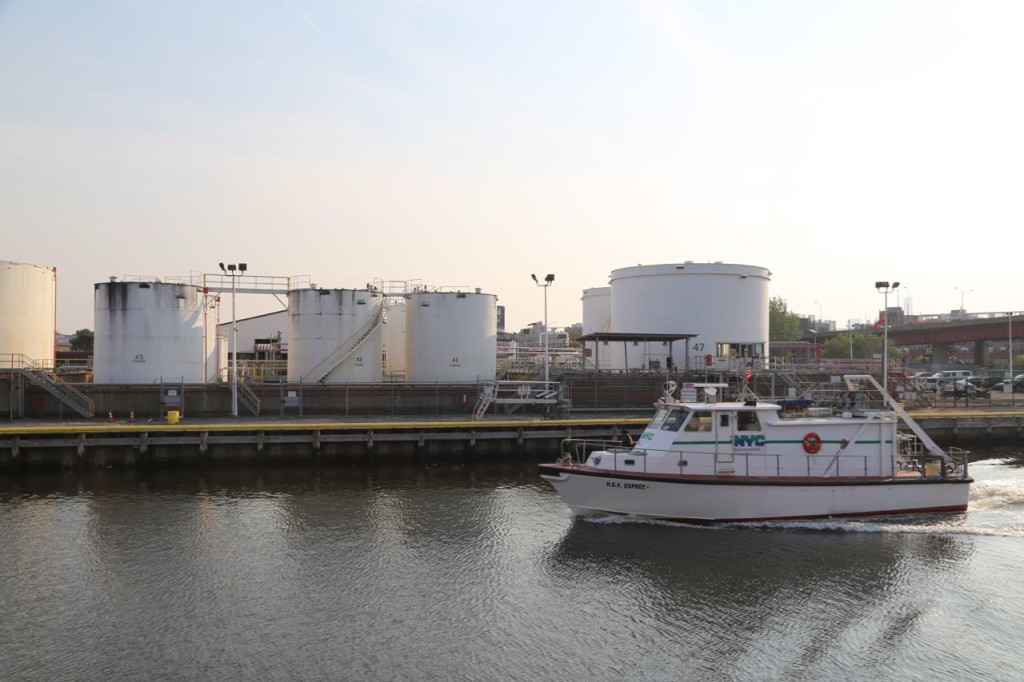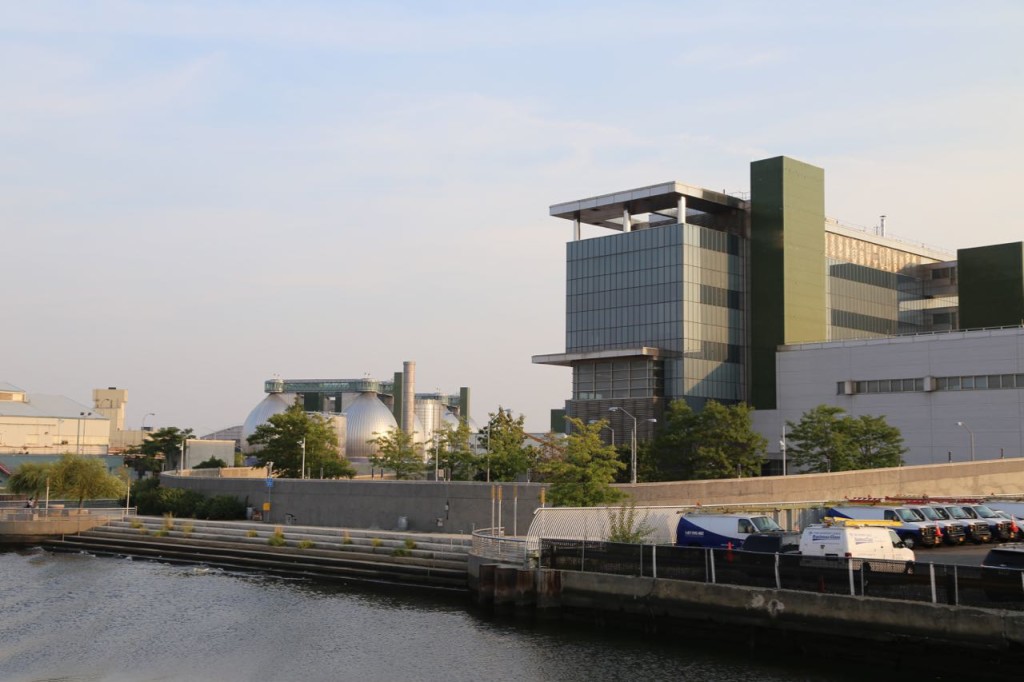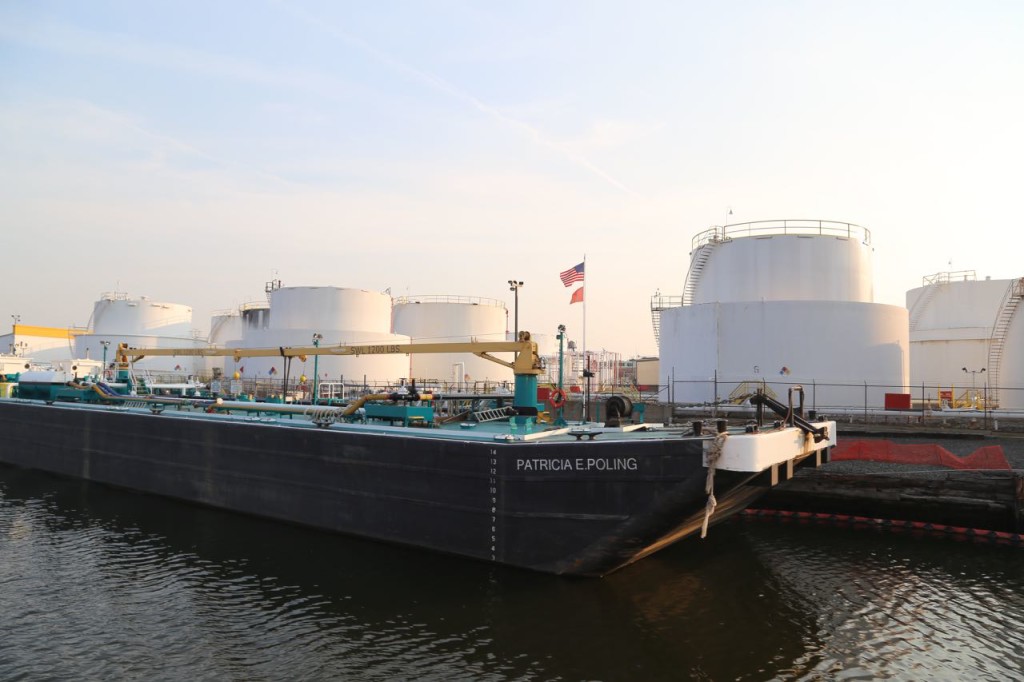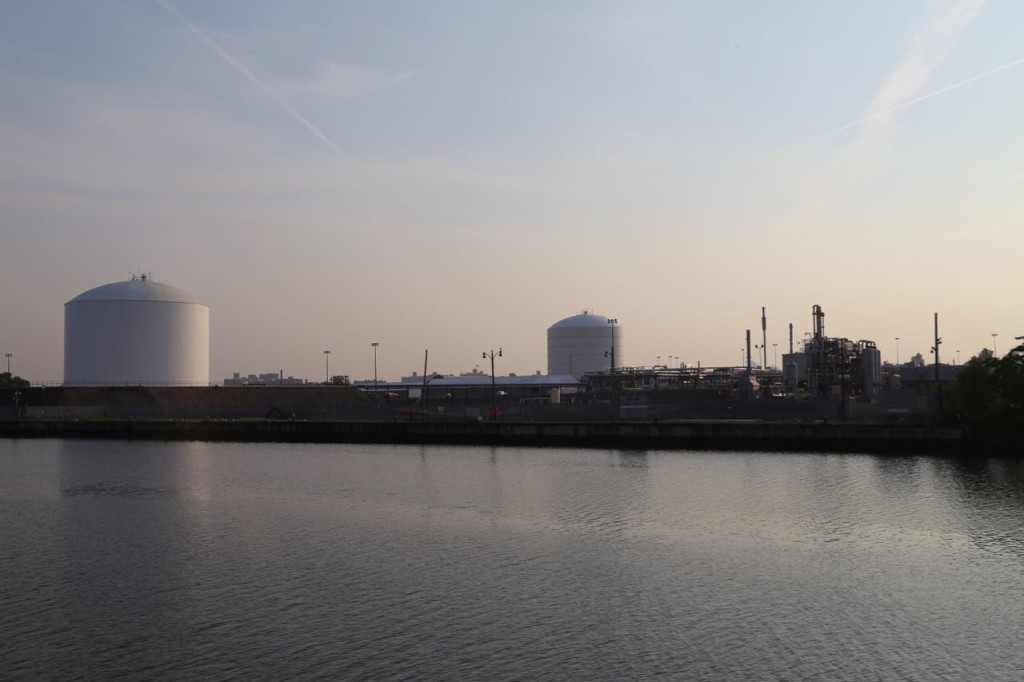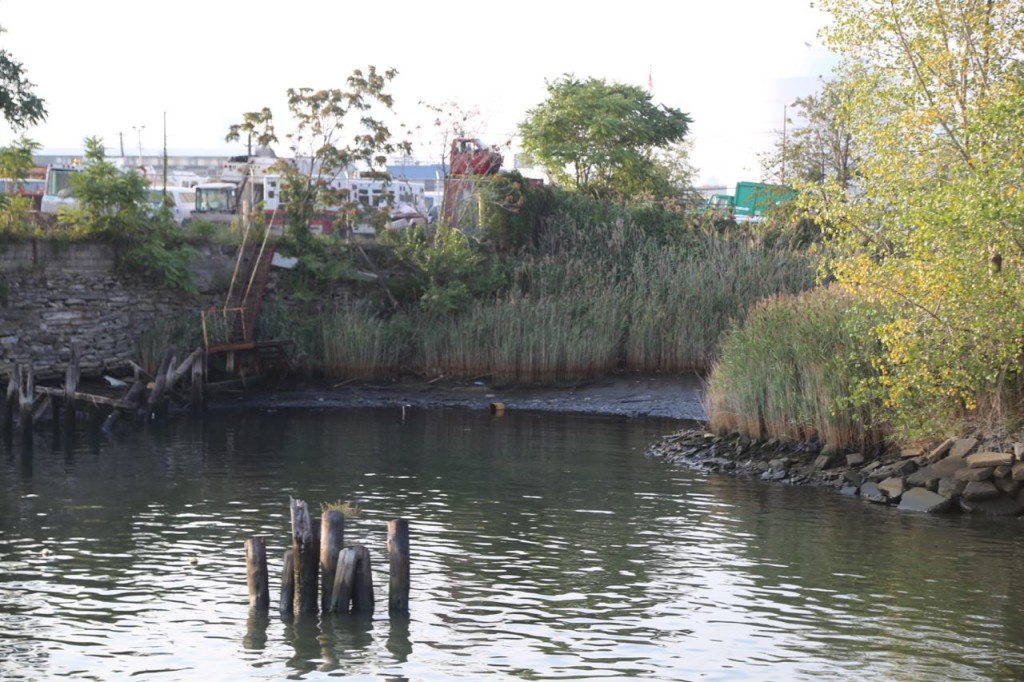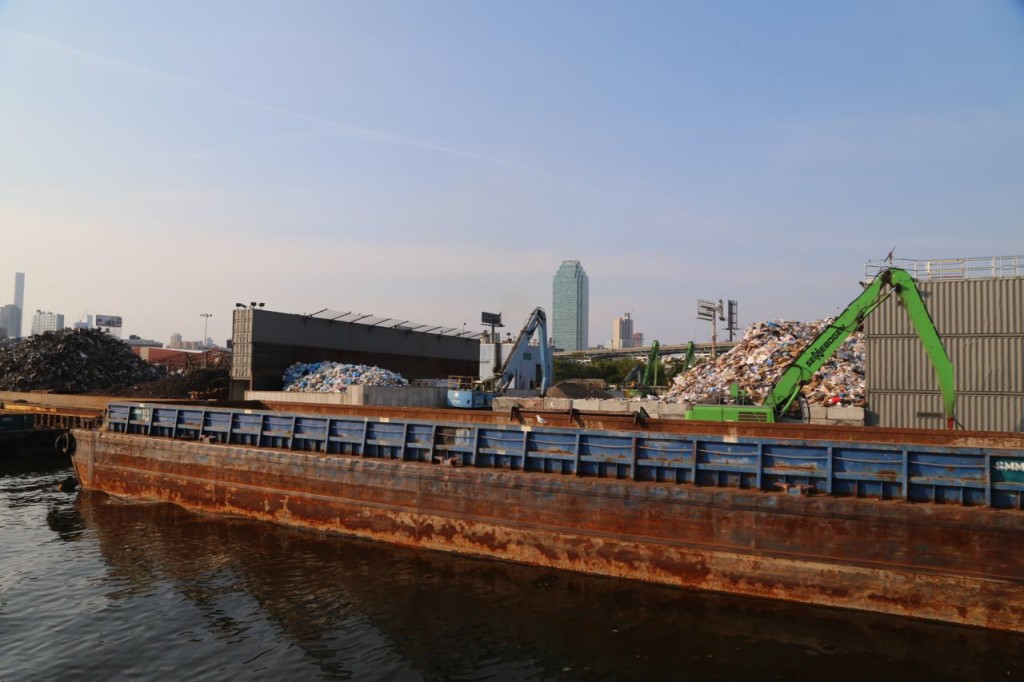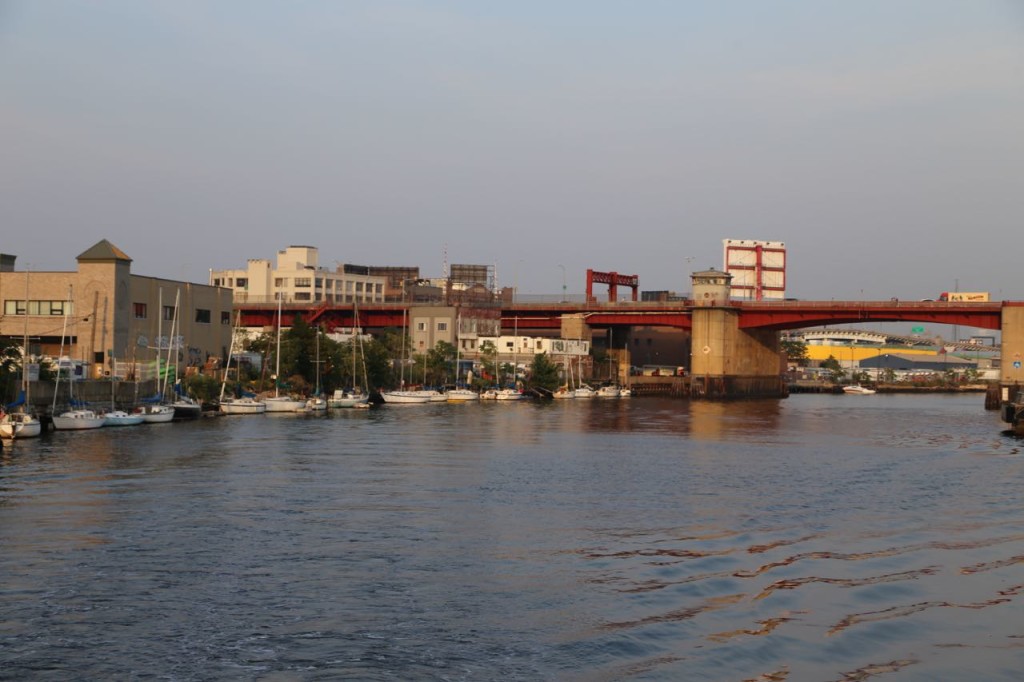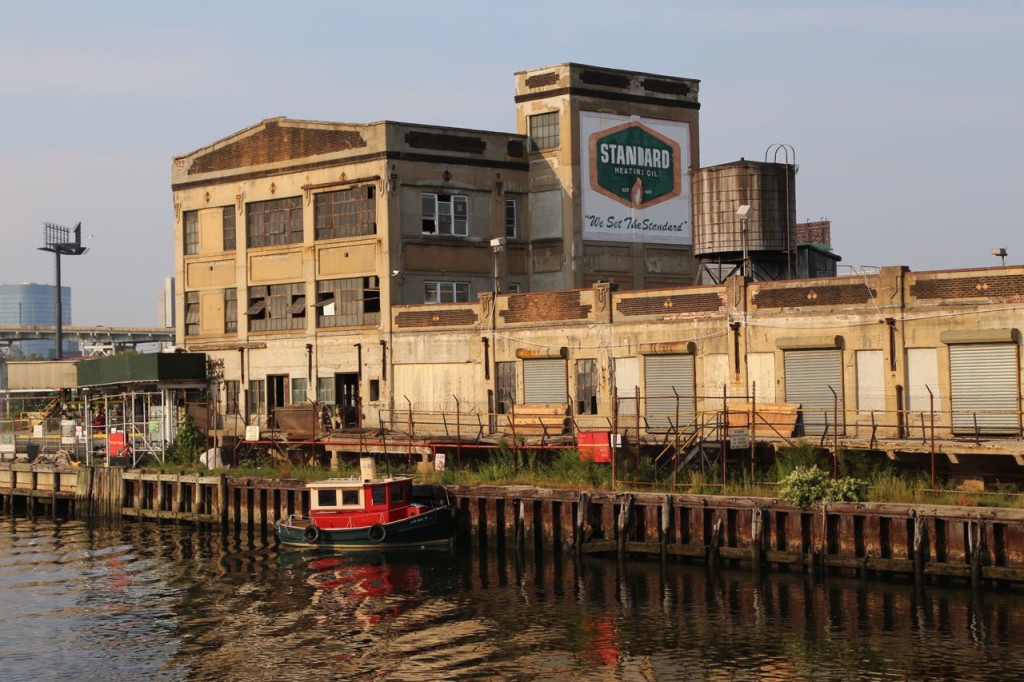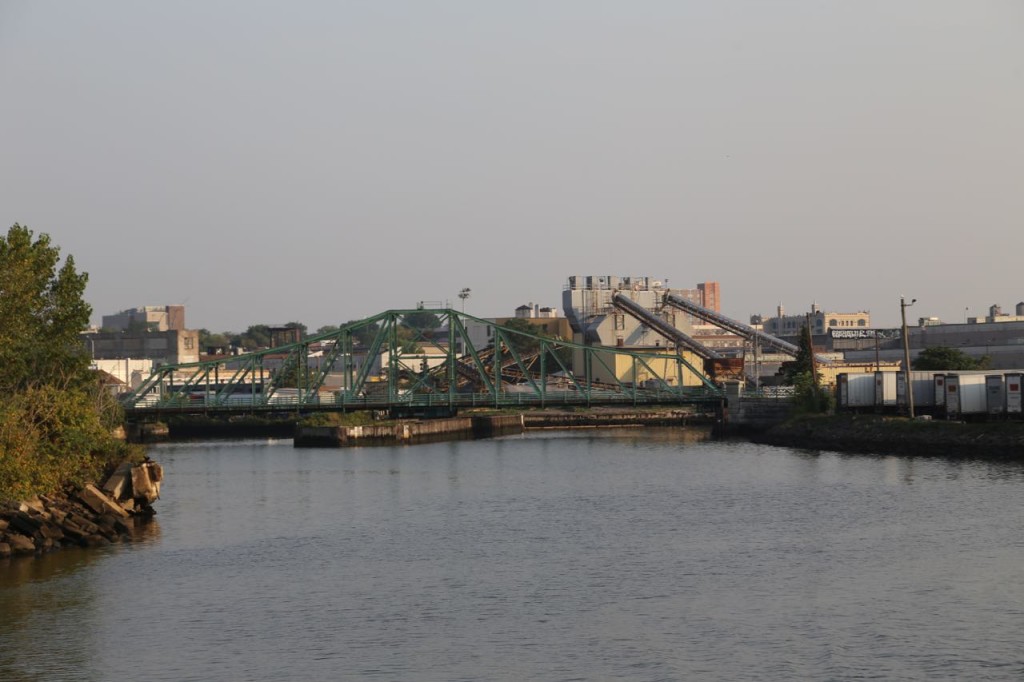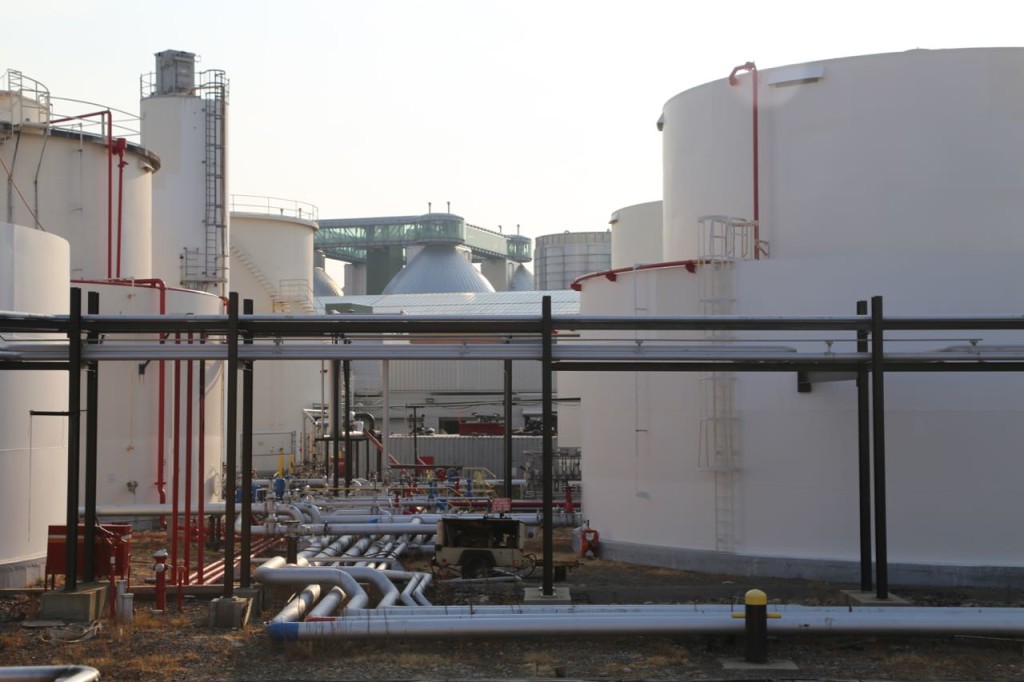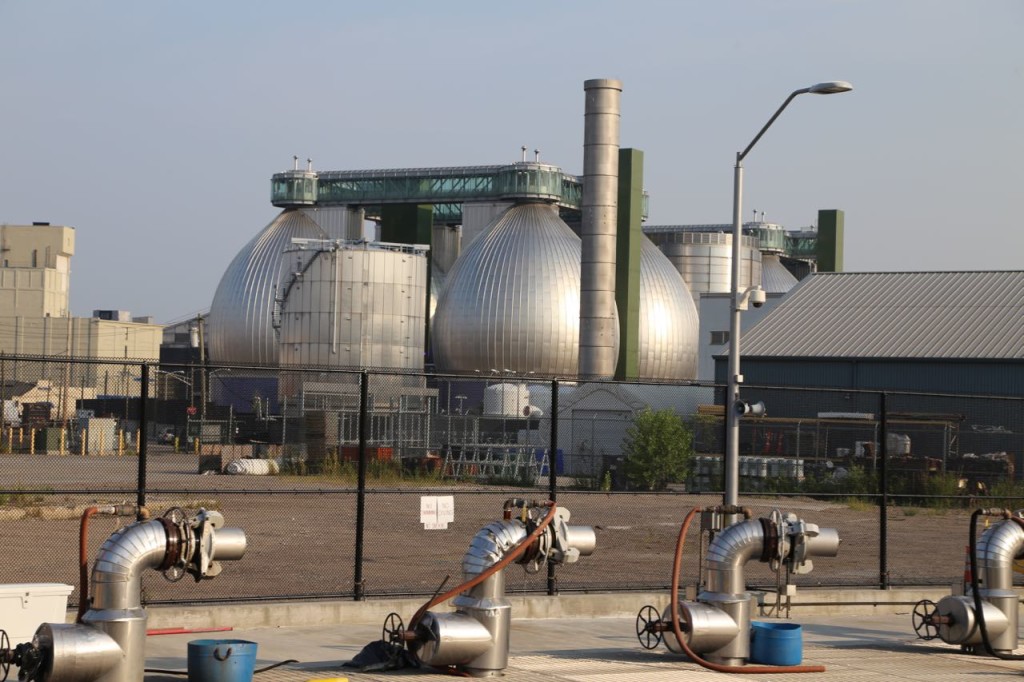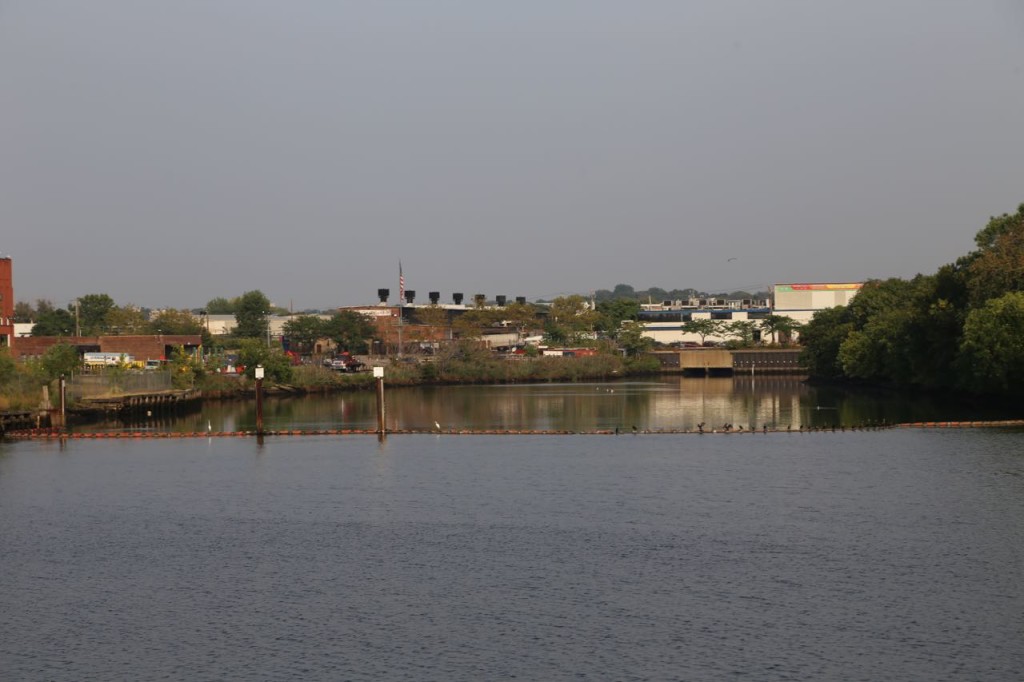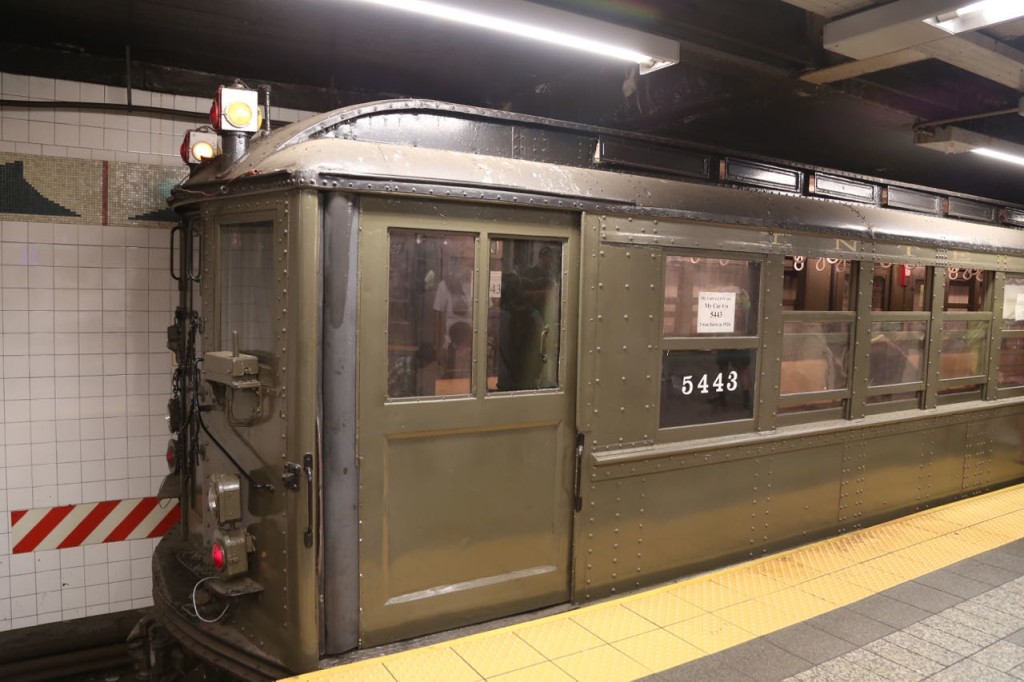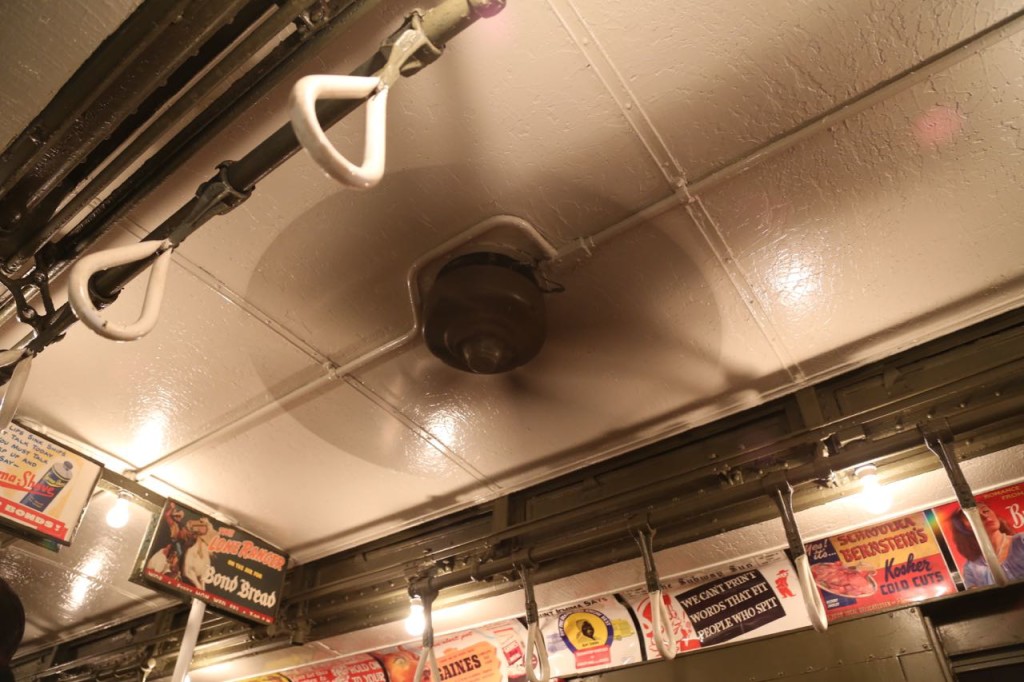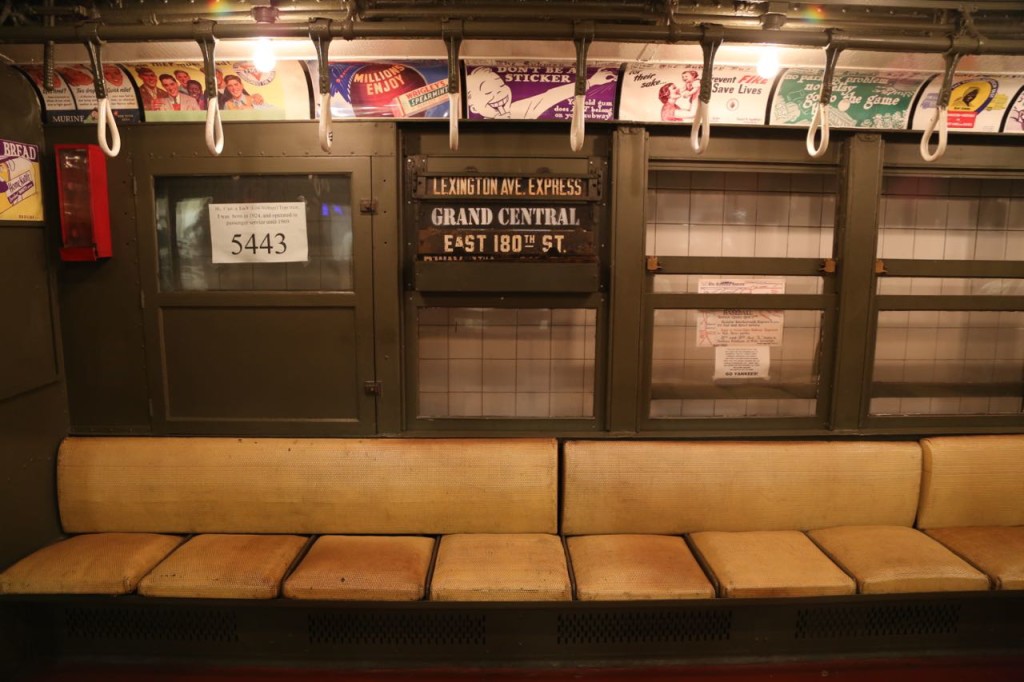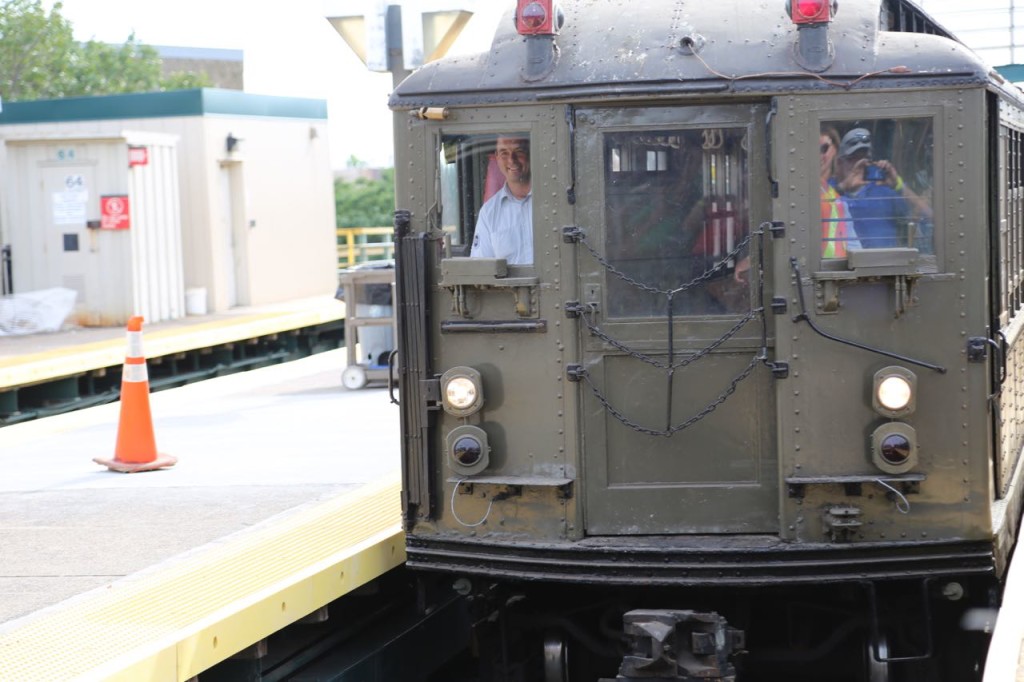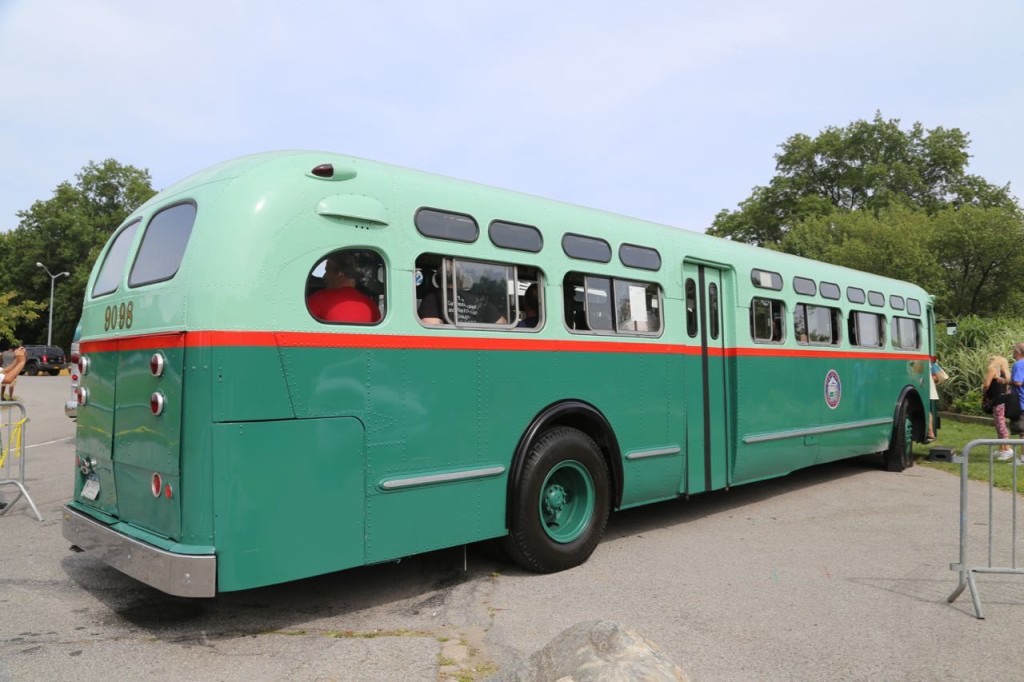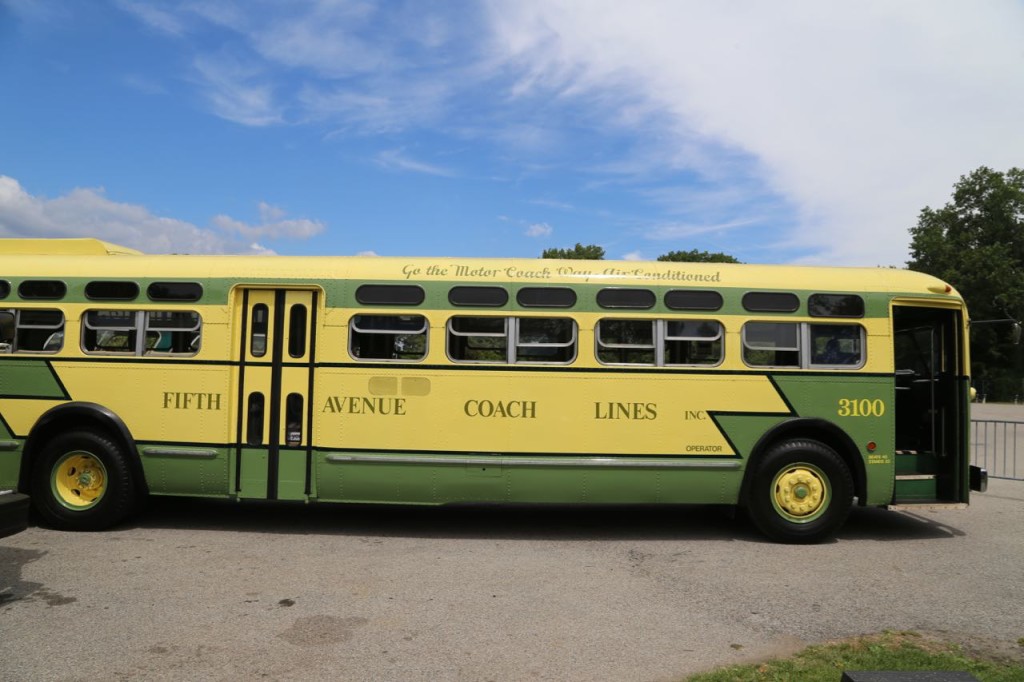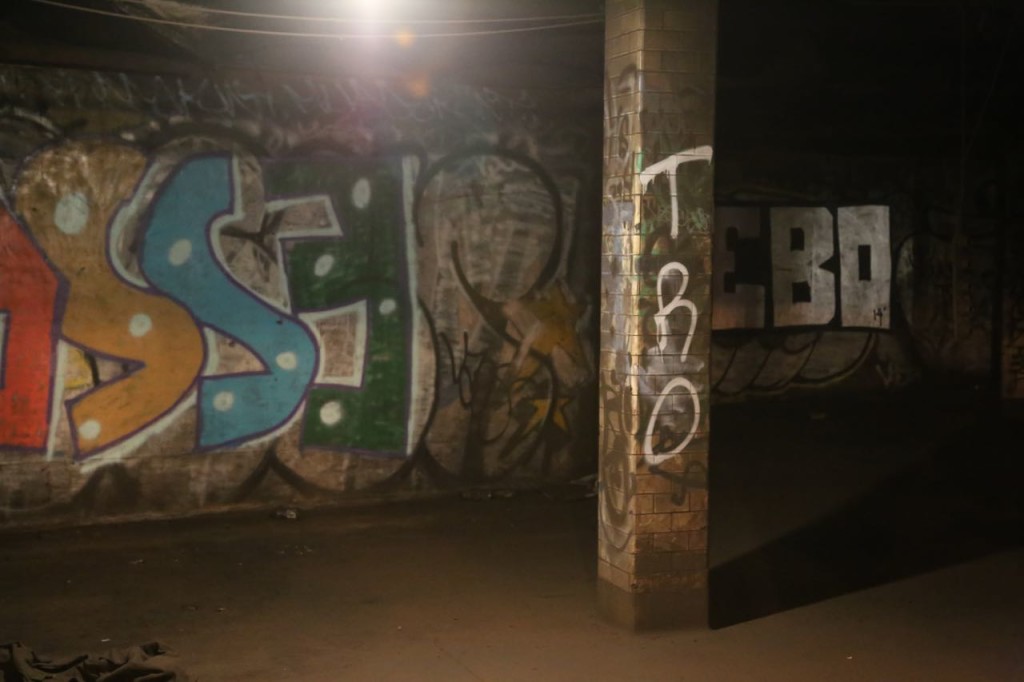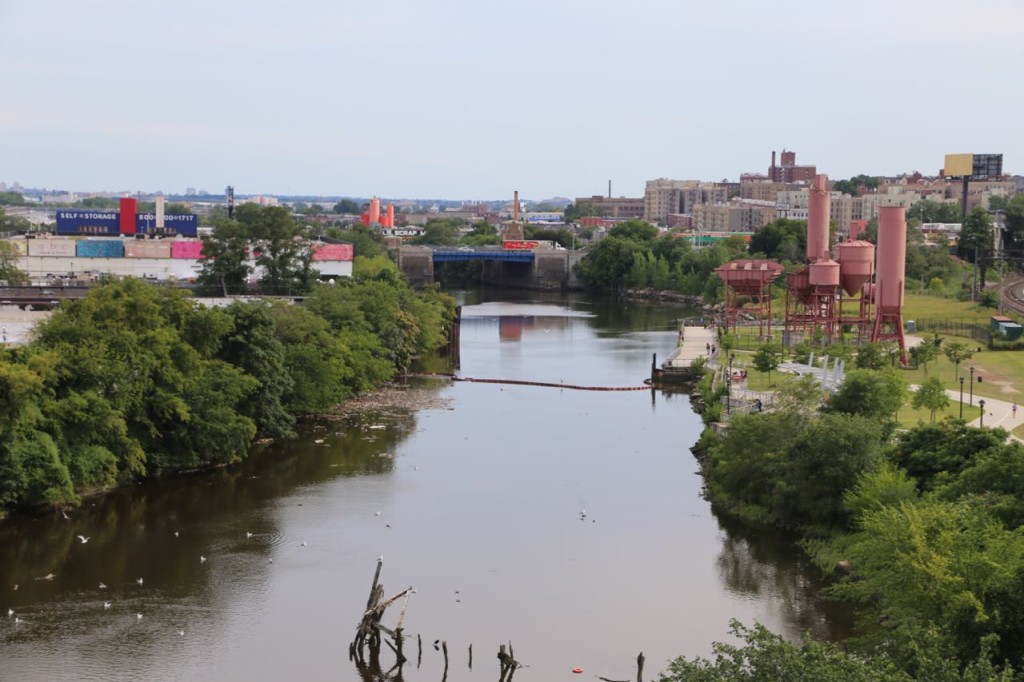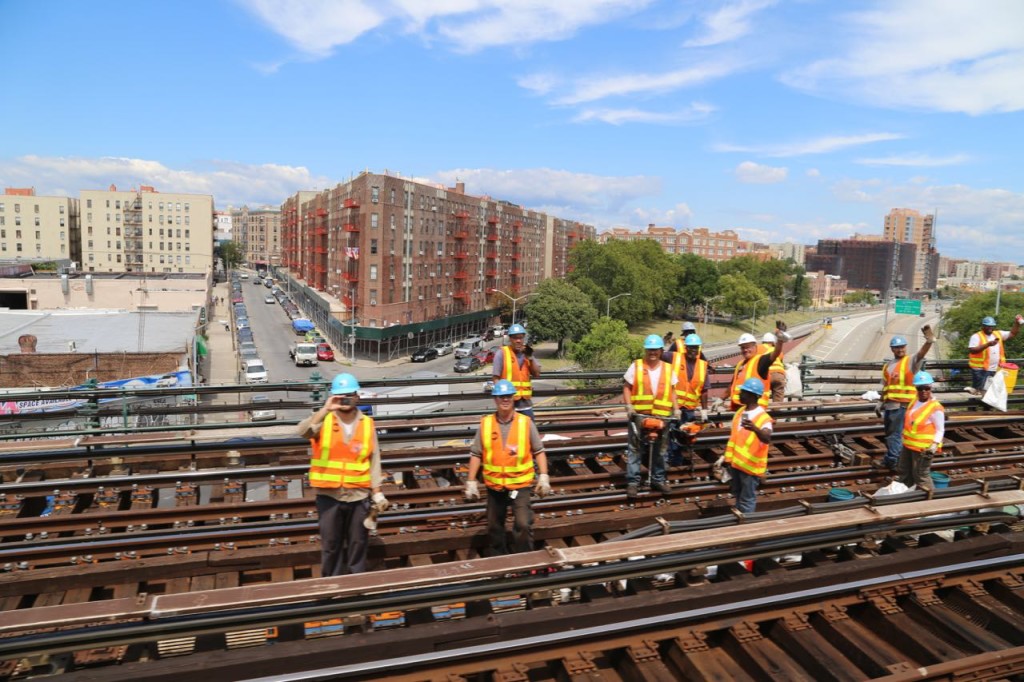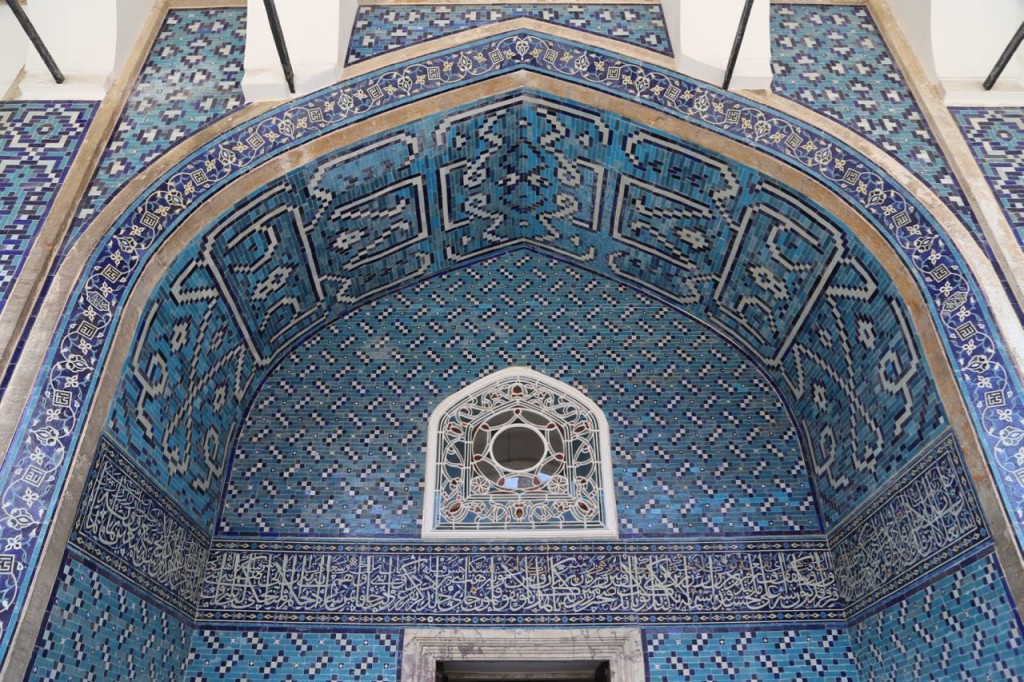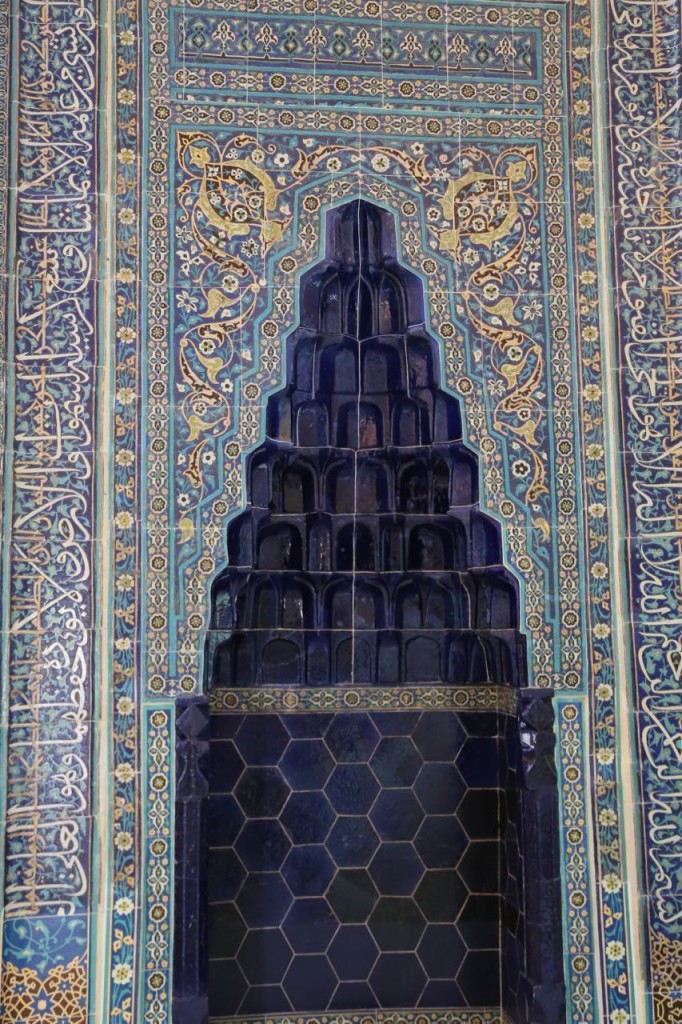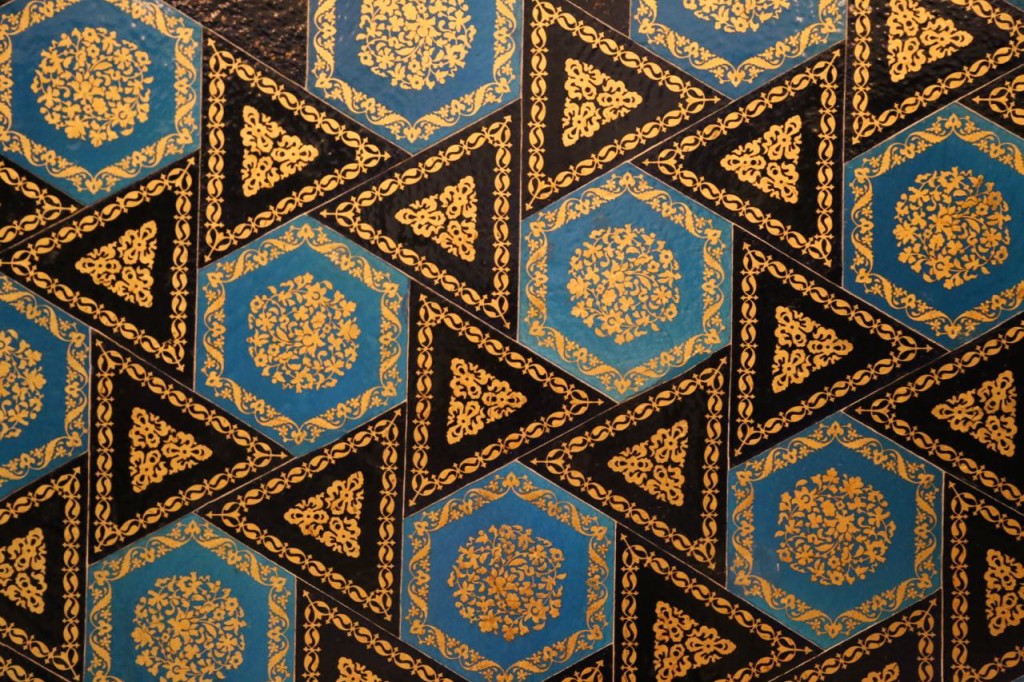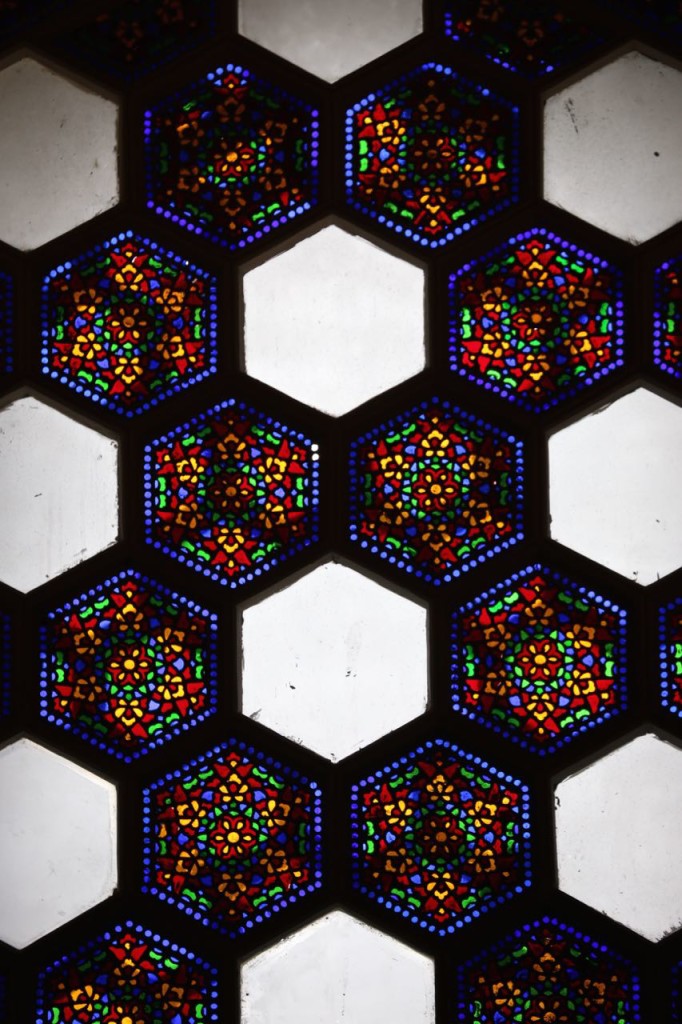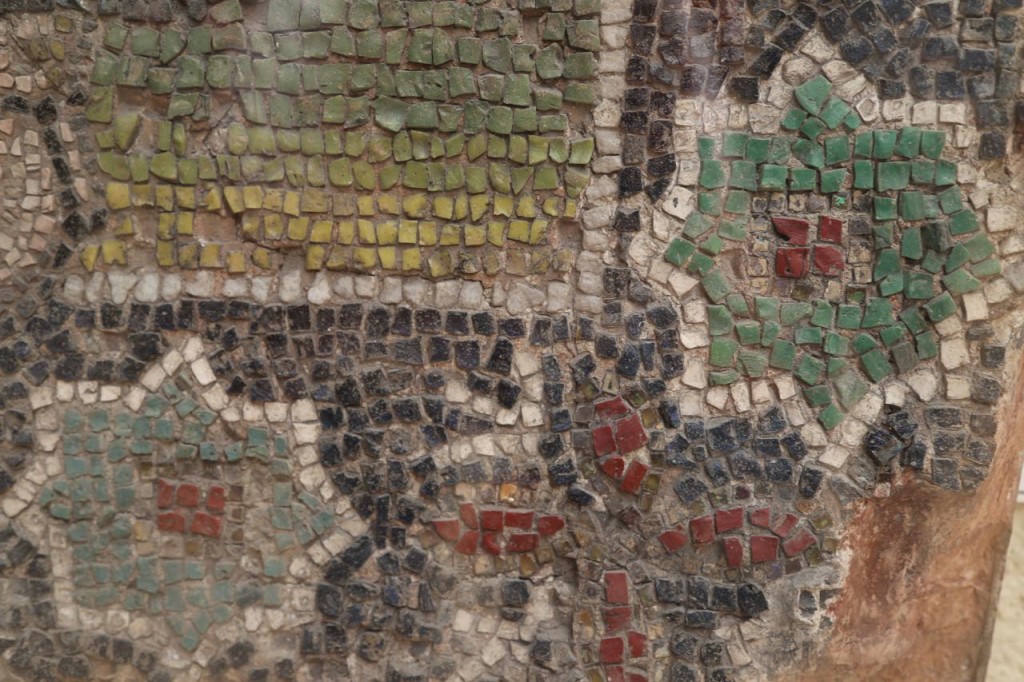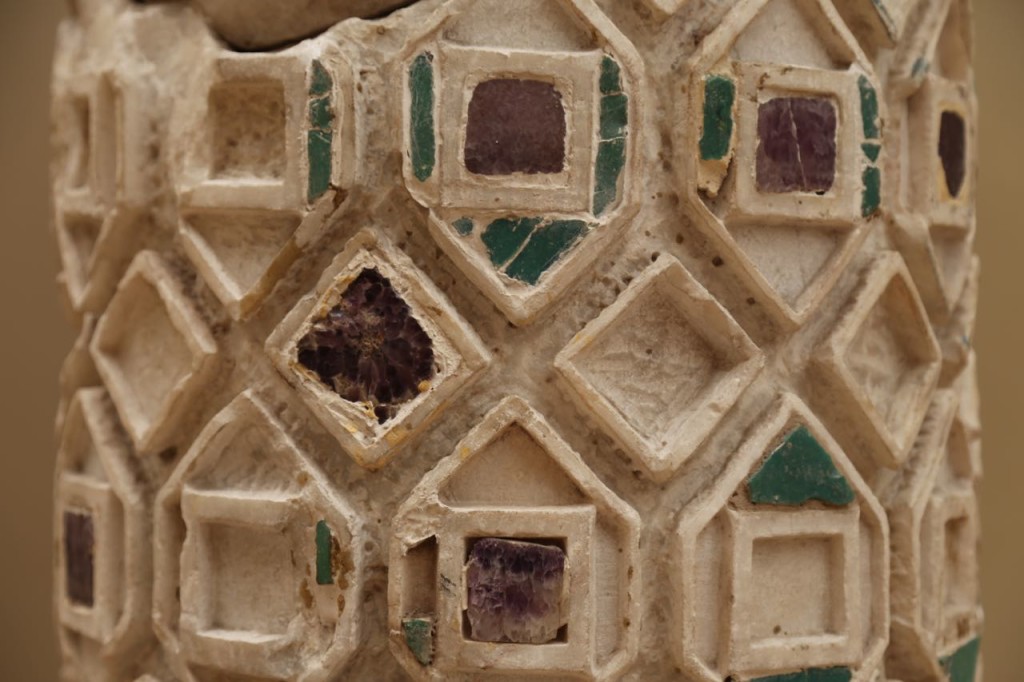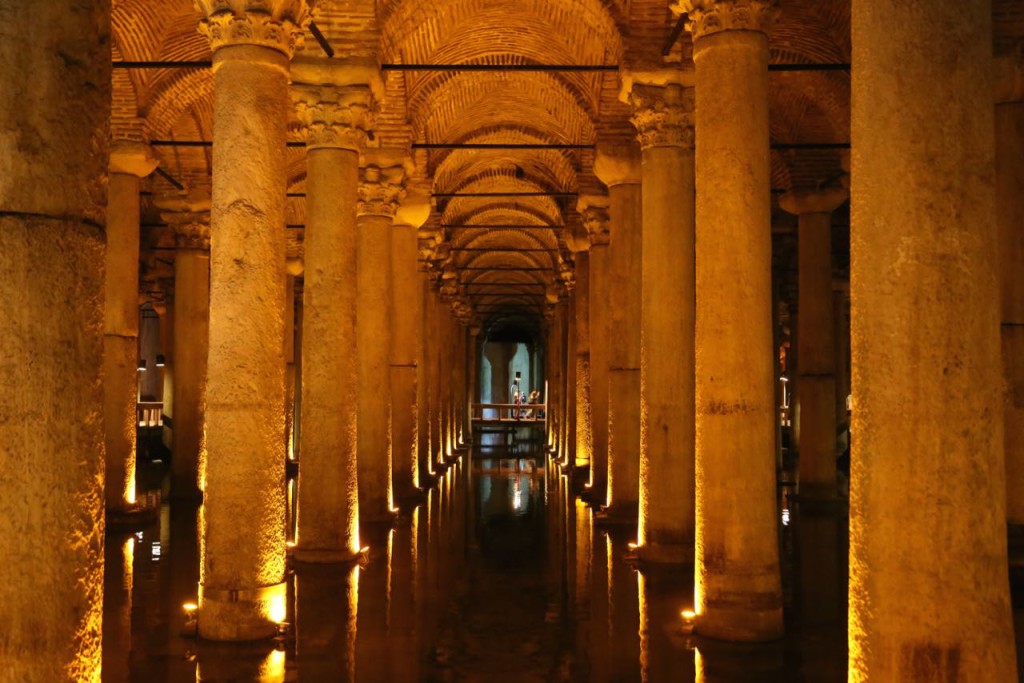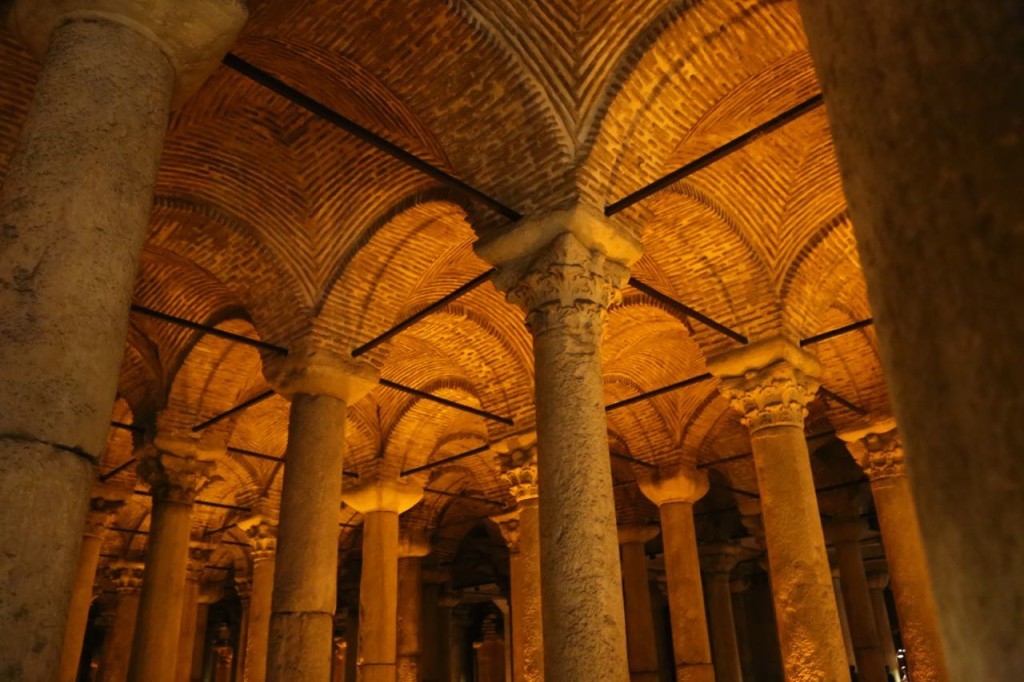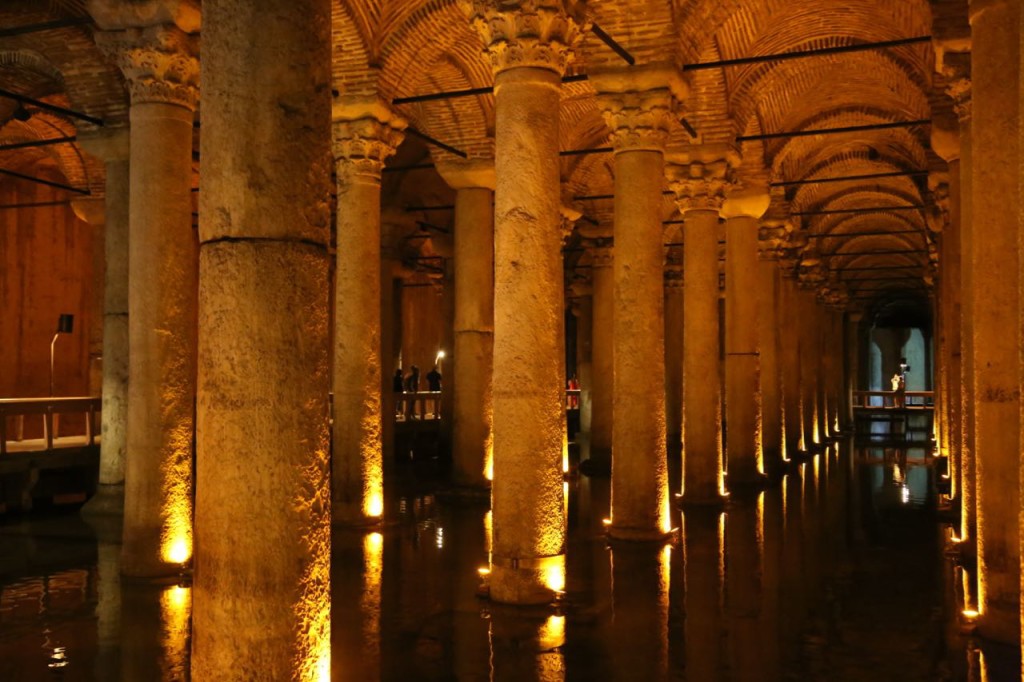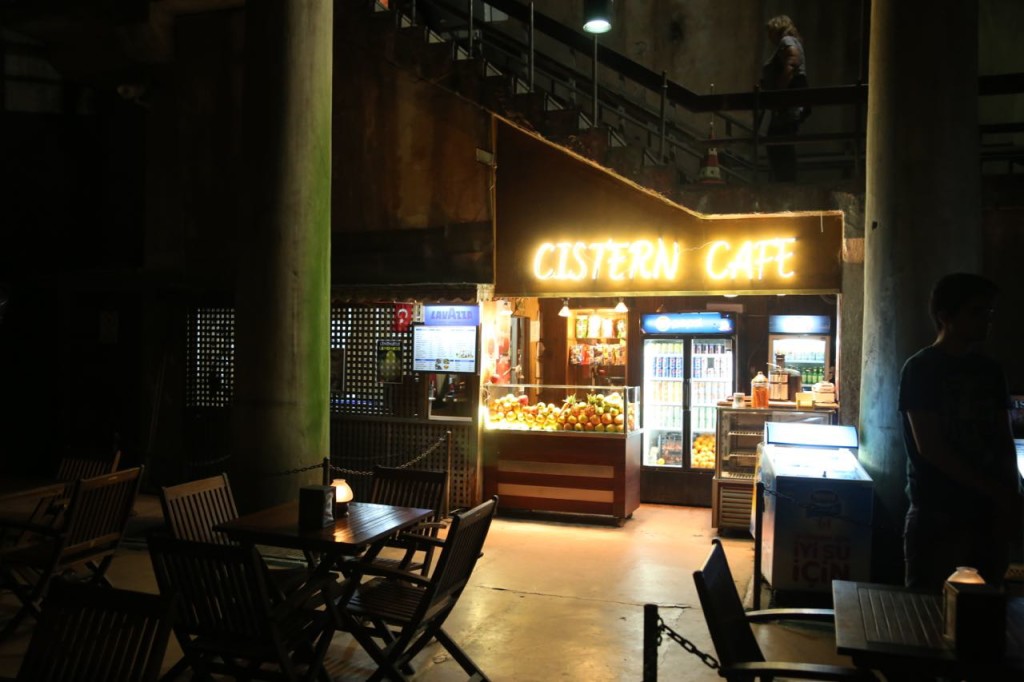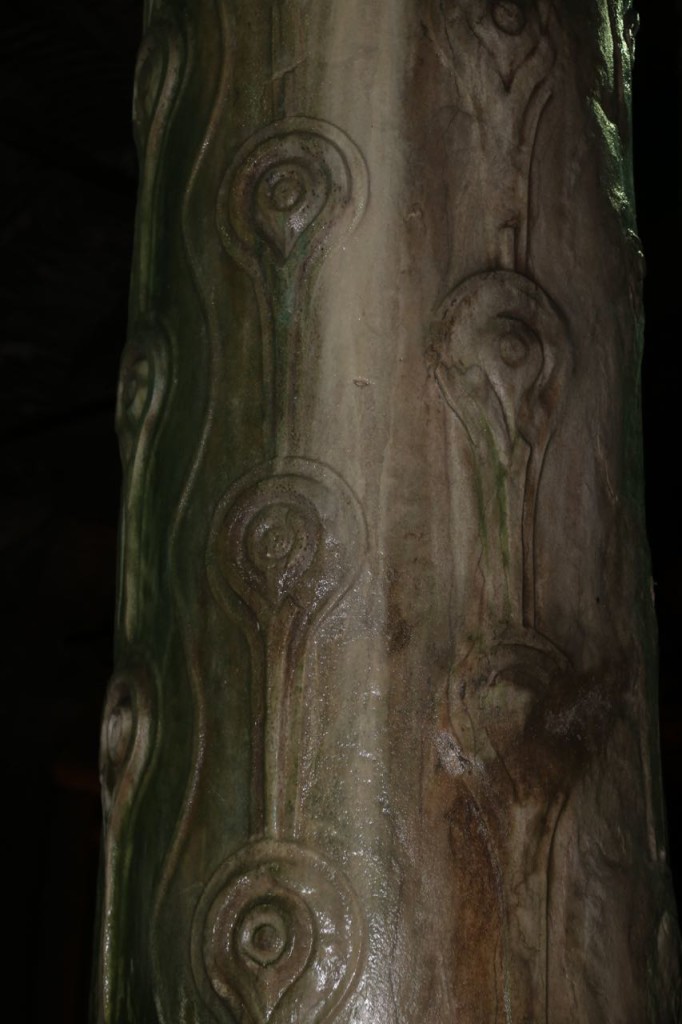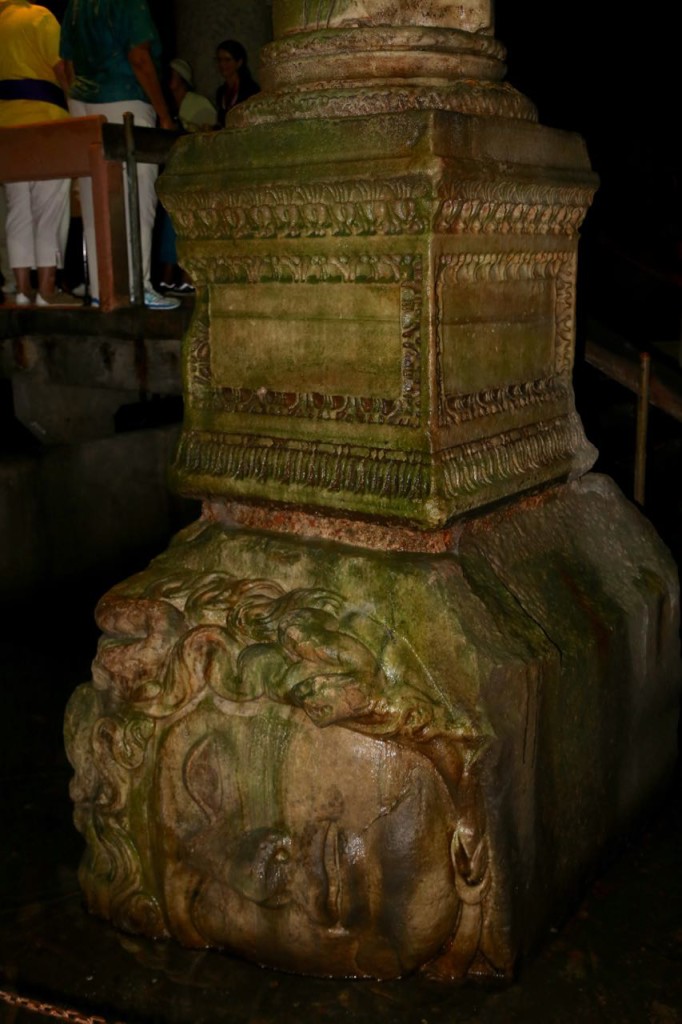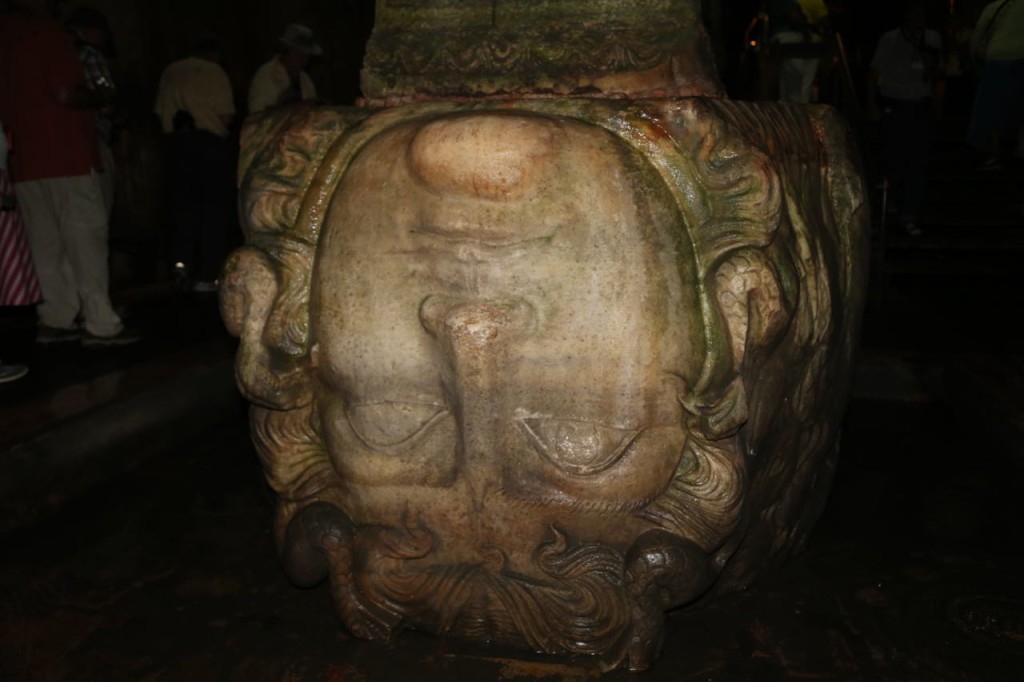On my last day in Puerto Rico, I explored Castillo San Cristobal, a fort built by the Spanish to protect San Juan from attack by land. It was built between 1634 and 1790, and then the U.S. added a few concrete additions during World War II. The fort is huge and has a series of tunnels. Some of these tunnels are huge, connecting the different levels and areas of the fort, and were designed to have defensive explosives. Some of the tunnels are really small, and you have to stoop to move through them. If you ever get a chance to visit, try to get one of the ranger guided tours of the tunnels. Those tours besides being very informative, let you go inside some of the really small tunnels in which you normally aren’t allowed.
Tag Archives: Travel
Cueva Ventana
I got to visit Cueva Ventana (Window Cave) today in Arecibo, Puerto Rico. The tour starts by walking by Pee Wee Cave, which only meets the bare minimum requirements of a cave. You don’t go in. There is no point or room really. There is a short walk through the forest, which when I visited meant getting to see among other things a bunch of giant snails on the trees. Then you walk through cave number two, which I don’t think they actually named. The middle portion of this cave is, well, cavernous, with huge ceilings and wide walls. However the walk through it is fairly short. Then you walk down an extremely steep path to get to the actual Cueva Ventana. There are bats living in there among the limestone columns. At the end of the cave is the Ventana. It has amazing views of the Arecibo River valley. The valley is gorgeous, and you can see the mountains beyond. The tour is worth the view alone. However the caves are really neat to see also, and I love bats, so getting to hear and see them was also a highlight. Sadly while there, you can see vandalism from years past, but tourism is now helping to support security and clean up for the site.
Viejo San Juan’s Colorful Buildings
I love buildings that are painted bright colors. They grab you and make you look at them. They look fun, festive, and alive. The Caribbean is famous for its colorful buildings, and Viejo San Juan has its share. Here are a few of the colorful buildings I saw in Viejo San Juan that I really liked.
Viejo San Juan
It wasn’t until I walked around Viejo (Old) San Juan, especially the perimeter of it, that I realized how it really is a walled city. El Morro guards the entrance to the bay, but the fortifications encircles the entirety of the old city. One of the few ways, and the historic way, from the sea level to the city is through La Puerta de San Juan. Walking through the La Puerta, you realize the fortification is serious fortification, as La Puerta is almost a tunnel in terms of the distance you must walk to go from the sea side to the city side. The fortification is truly impressive with the wall thickness and garitas and small openings for guards to stand ready. One modern day bonus of the fortification is that it must help protect Viejo San Juan from any hurricane storm surge. There is a promenade that follows the wall from its beginning on the bay side and ends on the ocean side of El Morro. It gives spectacular views of the fort and the water as well.
Iguana
While touring El Morro, I discovered that it is guarded by a platoon of iguanas. I will assume that is what they are all doing there. That, and most of them seem to be there because they know that is where there is a lot of tourists, and the iguanas like to have their photos taken. Iguanas are hams. One was posing on the top level. I took a few photos, walked away to take photos of the fort, and walked back. The iguana had moved closer to the edge and where the people were. I kneeled down and got out my macro lens, and the iguana obliged by posing to make sure its best side was shown while I took photos for several minutes. Now, I only do what the iguana clearly wanted and post its photos.
El Morro
I’m on my first visit to San Juan, Puerto Rico. Today we visited Castillo San Felipe del Morro (El Morro), a fort originally built by the Spanish to guard the entrance to San Juan Bay. The original foundation was laid in 1539, and it was modified and enlarged over 250 years. The United States then added to it during World War II. Finding out that a fort this old was modified and used during WWII surprised me. I was born long after WWII, so I forget that our military has advanced a great deal in terms of technology used since then. The fort is impressive. It has six different levels and is incredibly well built. I am impressed with those people who built it with the amount of stone and brick that must have been laid. Currently it is maintained by the National Park Service and guarded by iguanas, who by the way like to have their photos taken.
Newtown Creek
Newtown Creek is a natural creek that now resembles more of an industrial waterway and serves as a divider between Brooklyn and Queens in New York. I recently got a boat tour of it through Open House NY with superb guides from Newtown Creek Alliance and was able to see all the industrial facilities that are on it as well as a few places where its natural state is peaking through. Newtown Creek is heavily polluted because of New York City’s combined sanitary wastewater and stormwater system, which has led to untreated wastewater flowing into the creek during heavy rain events, and also industrial pollution, which has led to it being a Superfund site. A trip down Newtown Creek is almost history lesson down NYC’s past with some historic sites still visible like an old Standard Oil building. More modern parts of NYC also lie on the creek, most famously the newly redesigned and rebuilt Newtown Creek Wastewater Treatment Plant and its eight stainless steel digester eggs.
NY Nostalgia Ride
I have been a member of the NY Transit Museum for a couple of years now, and they always have fun excursions. Some of the excursions, you probably have to be a transit geek to fully appreciate though. Anyway, today I took one of their nostalgia rides. It started in Grand Central Terminal where we boarded a vintage WWI rail car. We then went all the way down to the end of the 6 line, which is the Brooklyn Bridge station, then took the loop through the Old City Hall subway station, and came back up to our final destination of Pelham Bay Park station. There we boarded vintage buses to either Orchard Beach Park or City Island. We spent a couple of hours there before heading back to our vintage rail car and back to Grand Central Terminal.
The destinations were nice, and the ride was so much fun. The train and buses were in great condition. Honestly they were in better condition than some of the modern ones in which I have ridden. Since the journey was supposed to be part of the fun, they slowed down as we went by a few abandoned subway stations including the Old City Hall station. With the exception of the Old City Hall station, which they keep in good condition for tours, the other abandoned stations were completely abandoned and filled with graffiti and sand bags and debris. They also let people stand in the front and take photos out the front window, but I actually got better photos on a previous trip with them. Of course I still love looking.
Another wonderful thing about this trip was people’s reactions. My guess would be that about 80% of the people in the subways didn’t even see that a rather different train was going by or did see and didn’t seem to think much of it. Most of the rest would either look at the train with a rather confused look of “what is that?” or would quickly grab their camera and smile. There were a few people who are evidently transit fans and knew we were coming and were already set up with still and video cameras and some even with tripods. There was at least one at every aboveground station we went through, and there also some on the ground to get photos of the buses. As a certifiable geek and nerd, I can completely relate and and admire them. Then there were the MTA employees who seemed to be just as excited about the vintage train and buses as we were. They took as many photos as we did. This included workers repairing tracks who stopped what they were doing, took photos, and waved at us (see photo below). I am not even sure why we all get so excited about these vintage vehicles. Maybe it is because nothing mechanical or electrical seems to last that long anymore, so we are all excited by the things that do.
Istanbul Archaeological Museums
The Istanbul Archaeological Museum was undergoing renovation when we went, so I don’t think we saw all the different exhibits they have. It also was that part of the time I was there I felt like I was walking through a rat maze. In any event, it has some really nice exhibits. However my favorite part was actually the Tiled Kiosk next door. I find the name amusing because when I hear kiosk, I think of a little booth in the mall with someone trying to sell cell phone accessories or some pillow that is going to solve all my health problems. The Tiled Kiosk is pretty though and has walls covered with tile, stained glass windows, and other art.
Istanbul: Basilica Cistern
The Basilica Cistern is without a doubt one of the coolest, human made places I have ever been. I don’t think you need to be an engineering nerd like myself to find the place to be really neat. It is an underground cistern built in 532 A.D. It is a wonderful example of engineering and was used to store water. Now it is a tourist attraction complete with a cafe. Yes, there is a cafe, and in my opinion, it would be only more perfect if it was a Starbucks simply because they are everywhere. The cistern was featured in the James Bond movie ‘From Russia With Love.’ Two of the columns have Medusa heads as bases, possibly because they fit and were available. There is still water in it below the walkways, and fish live there. They were introduced to keep the water clean.

